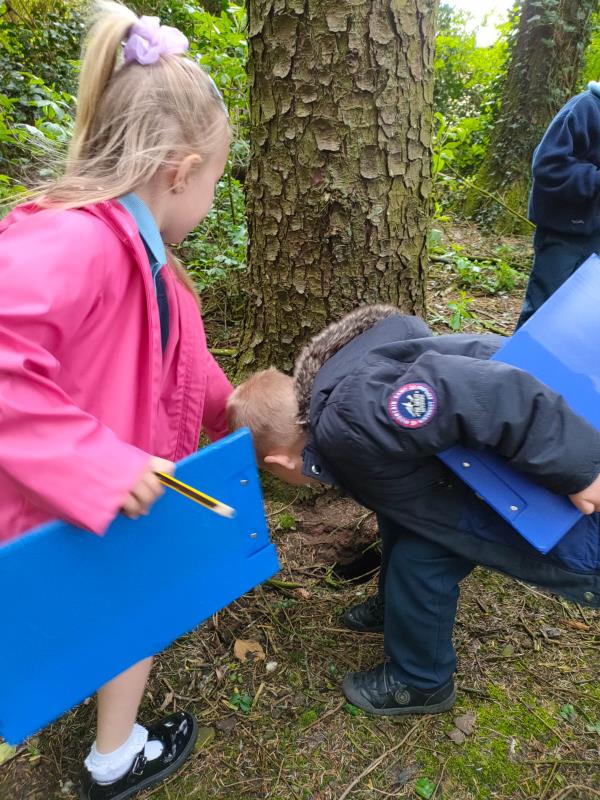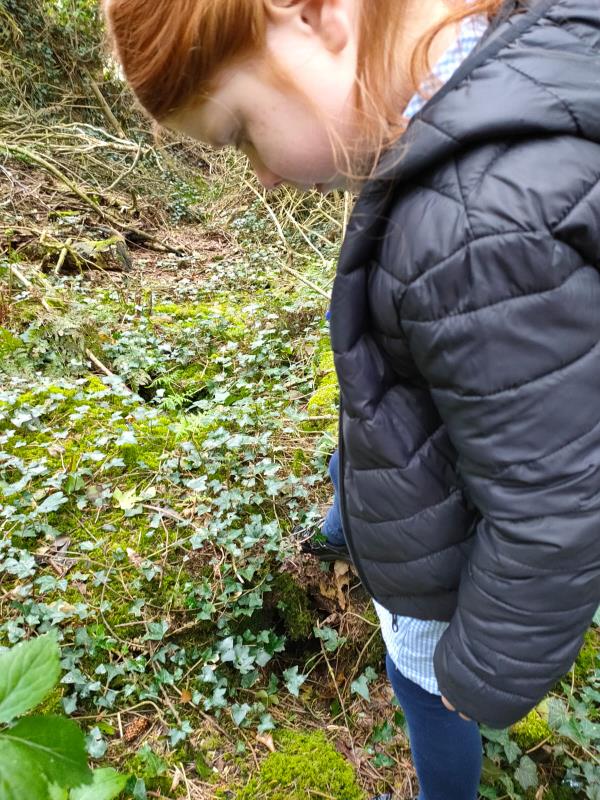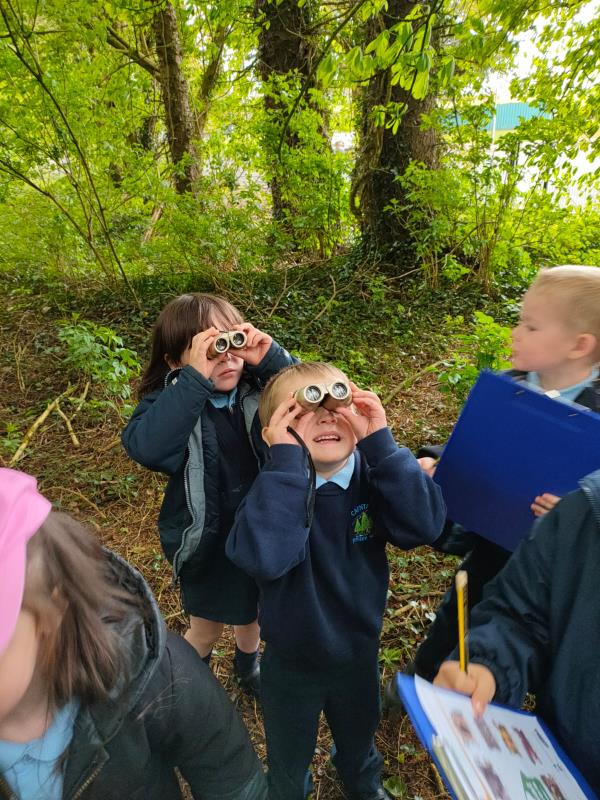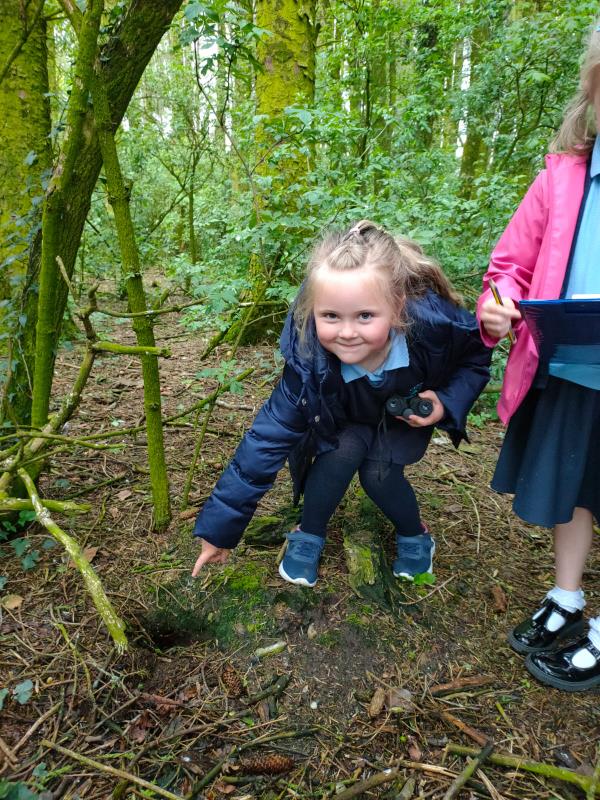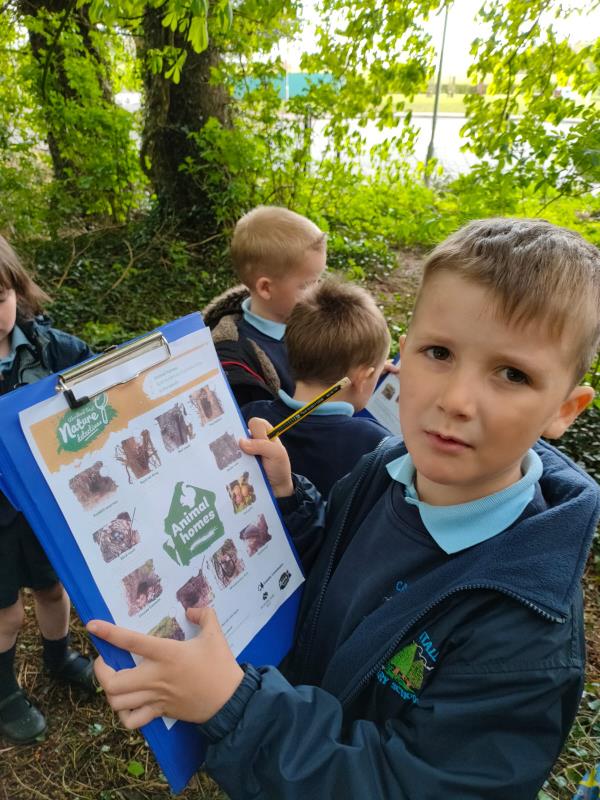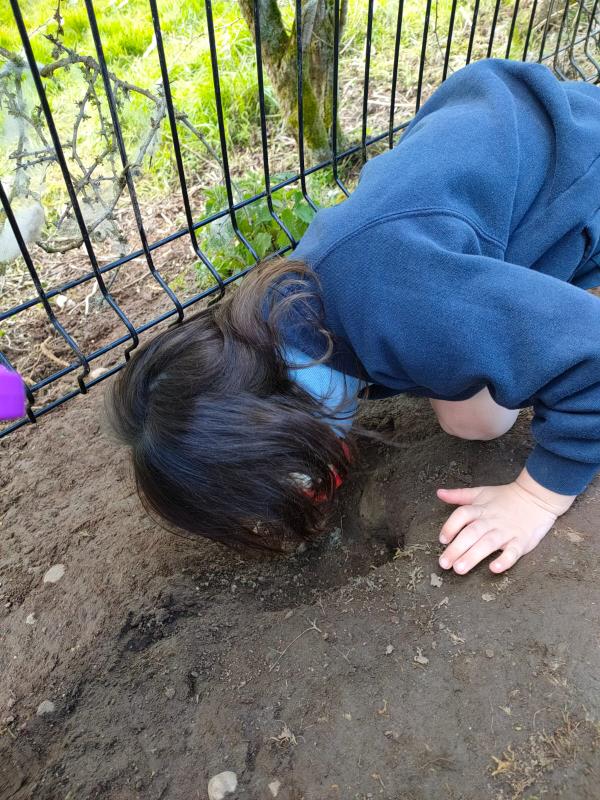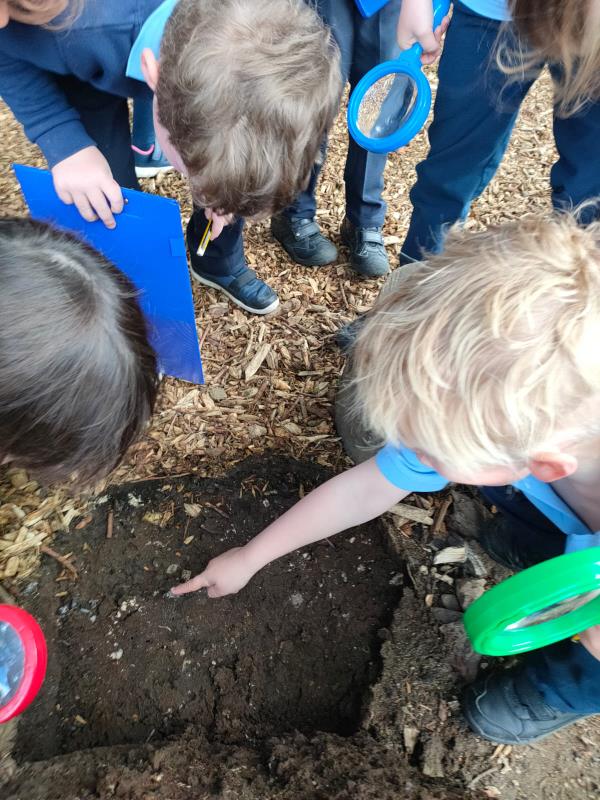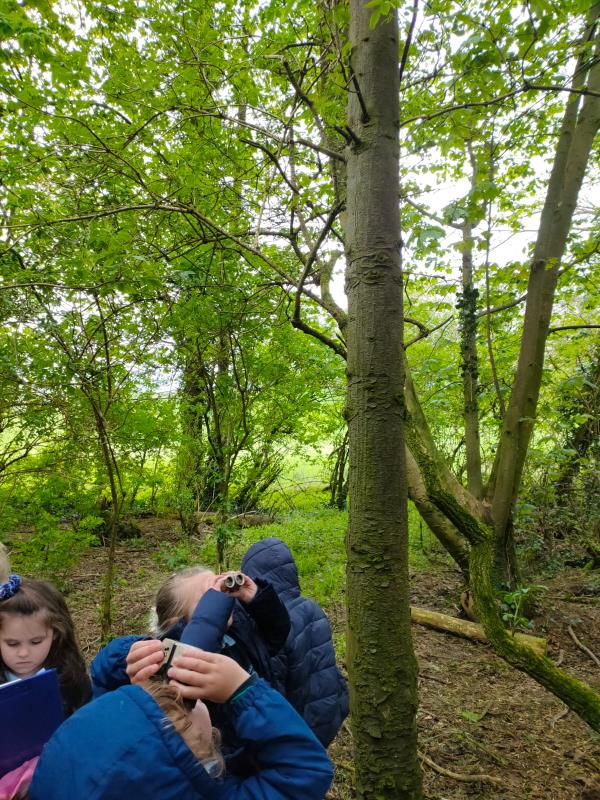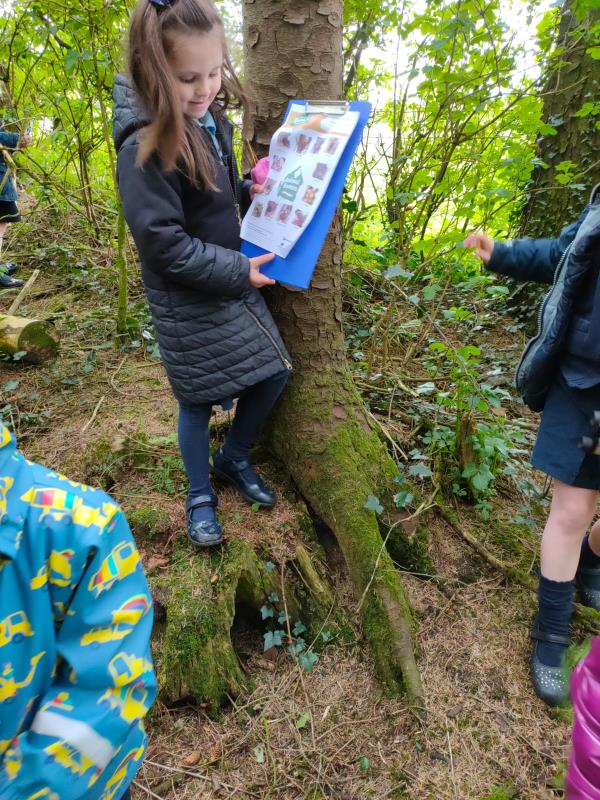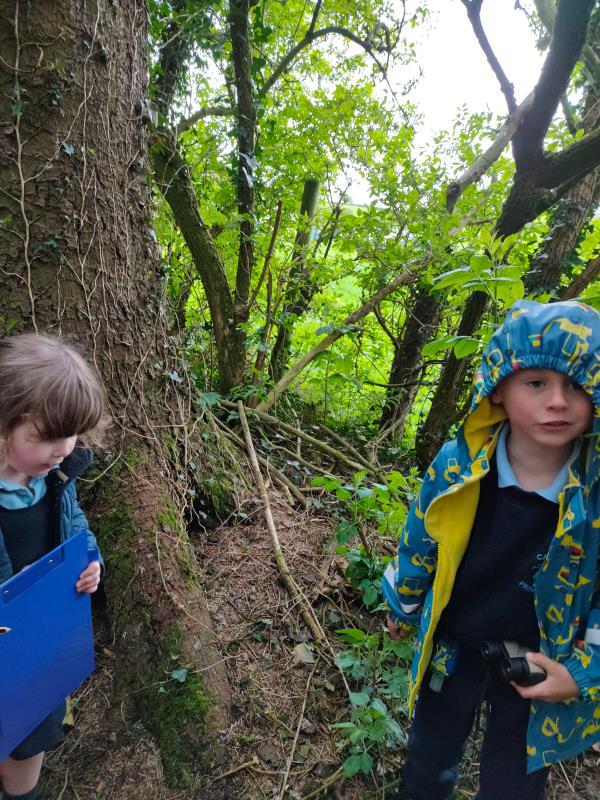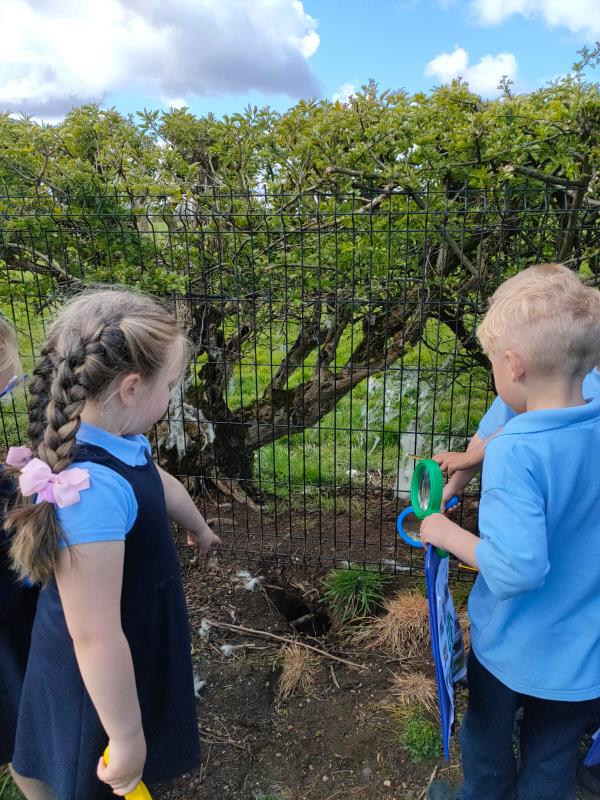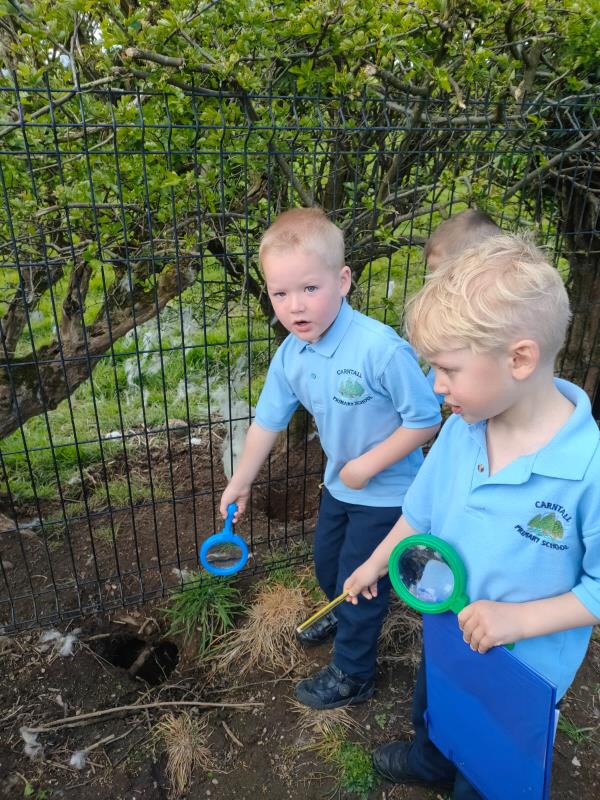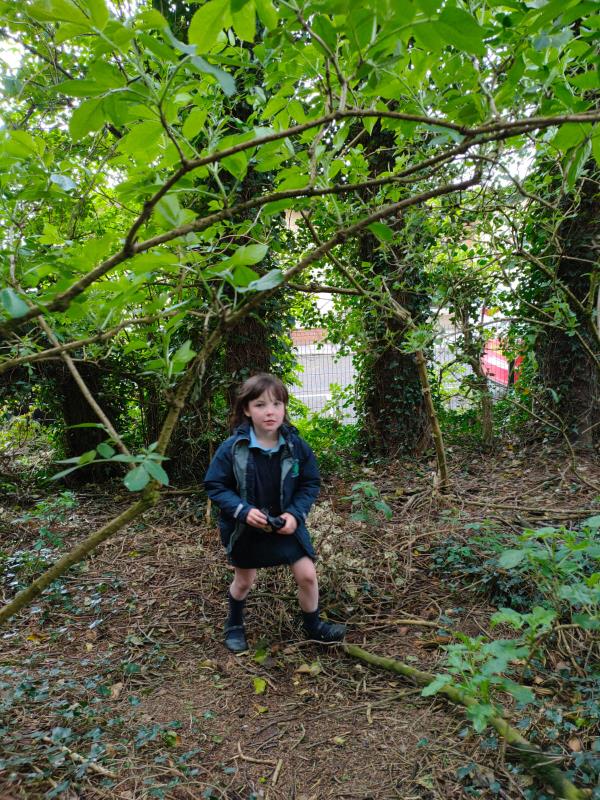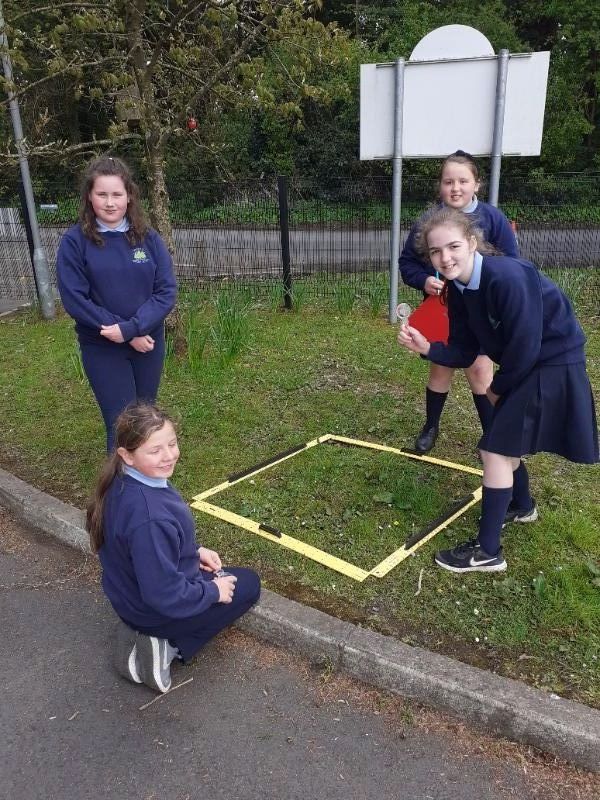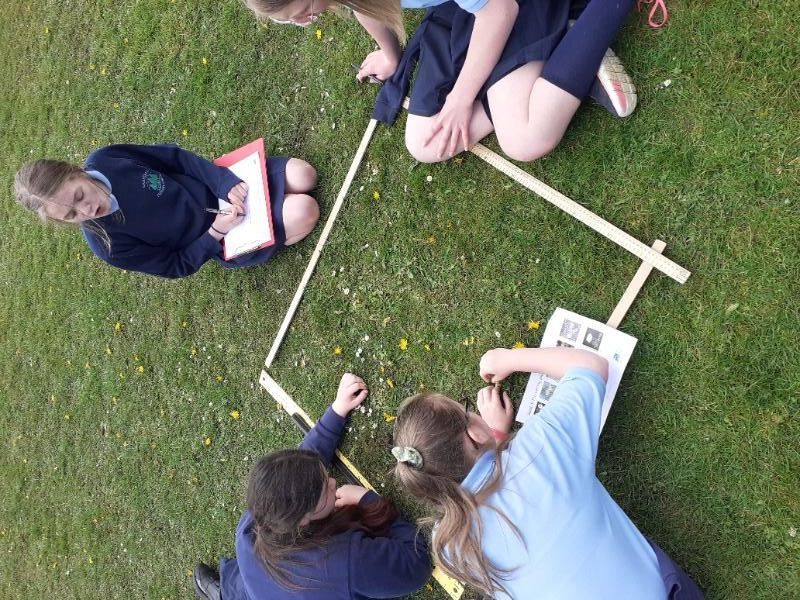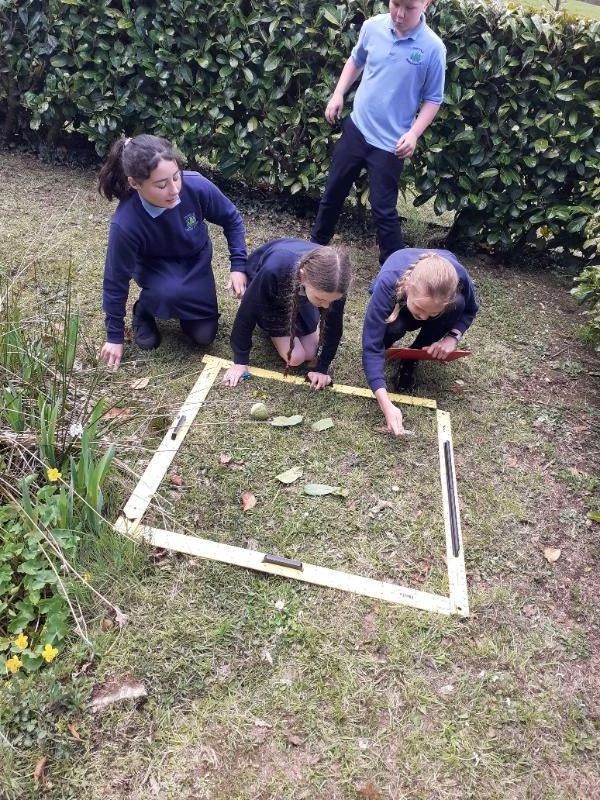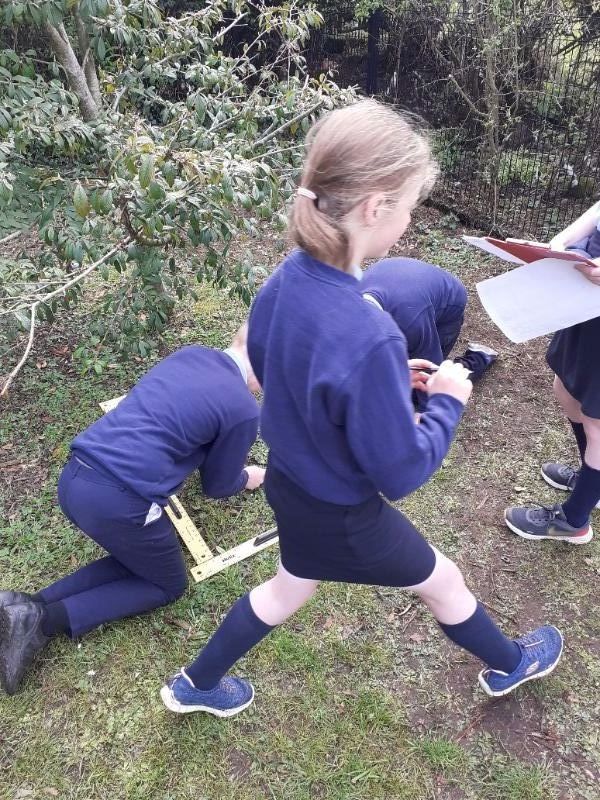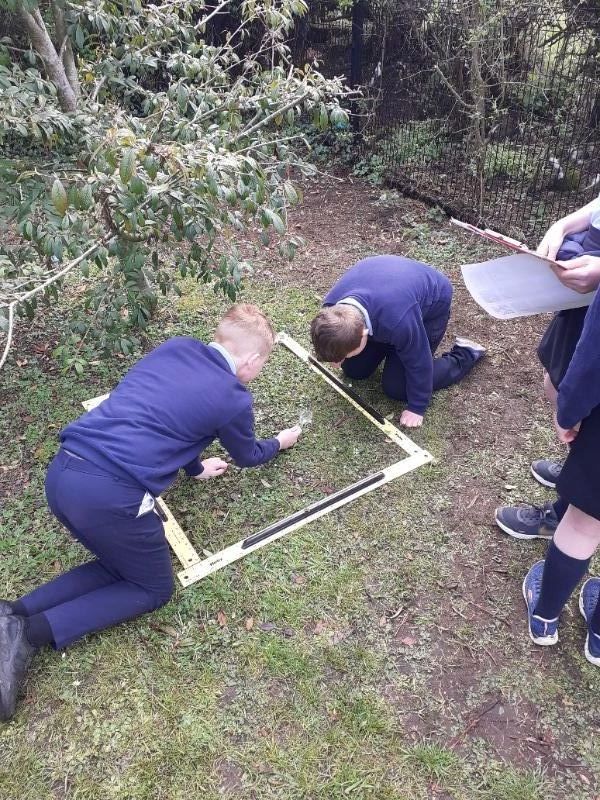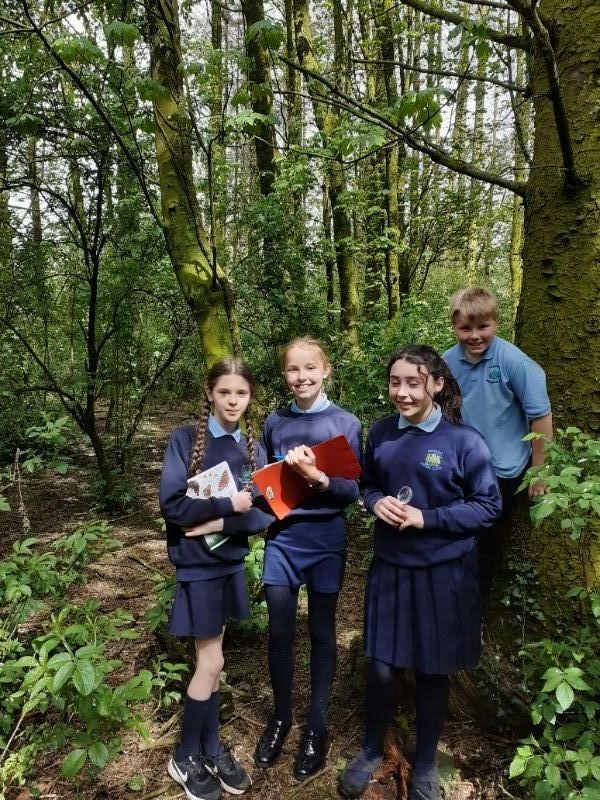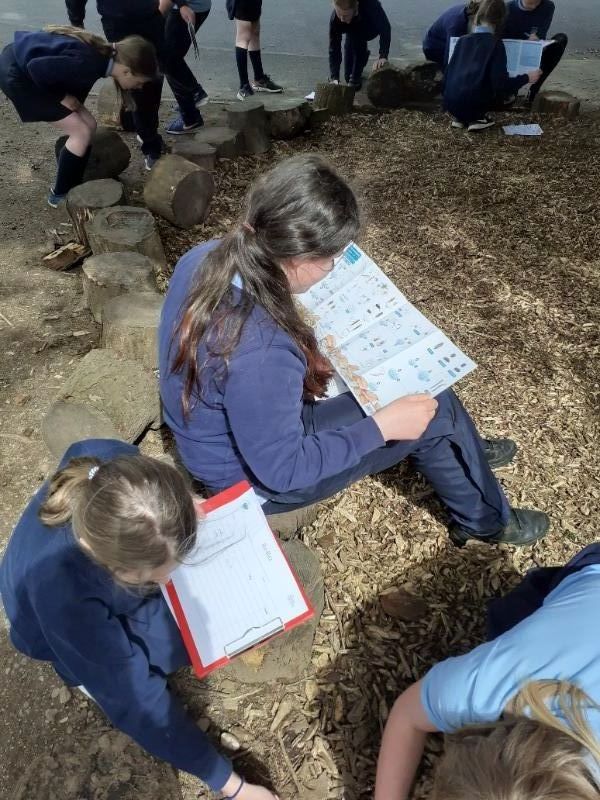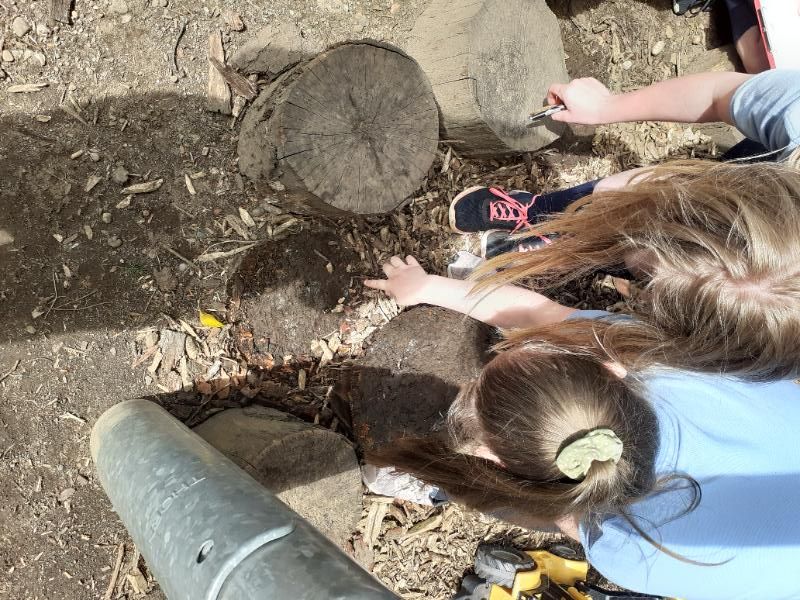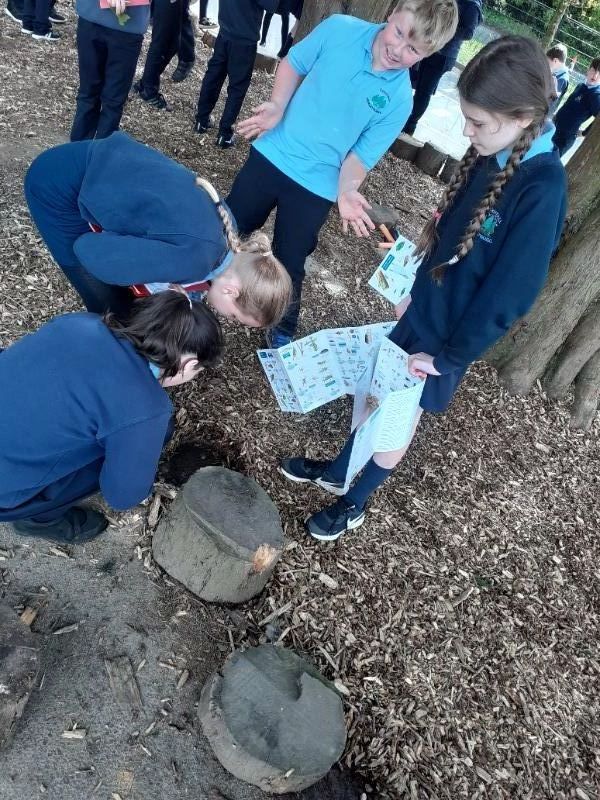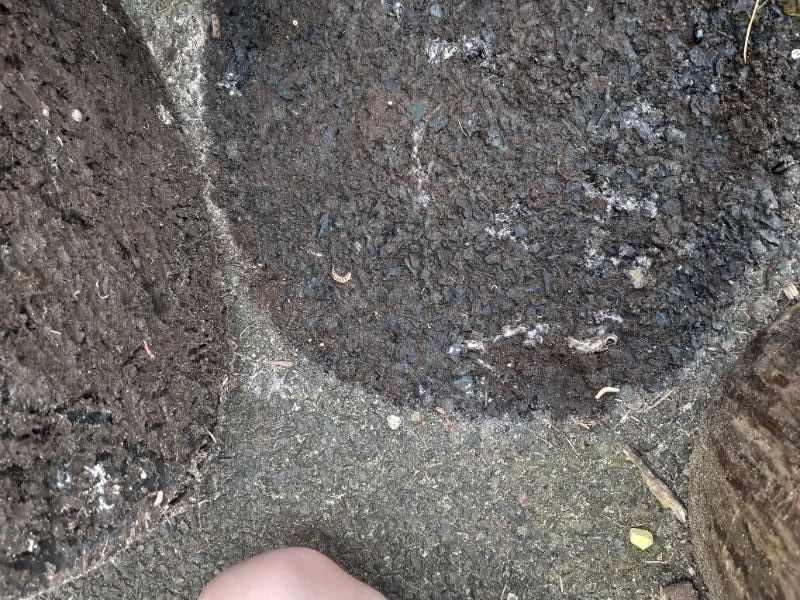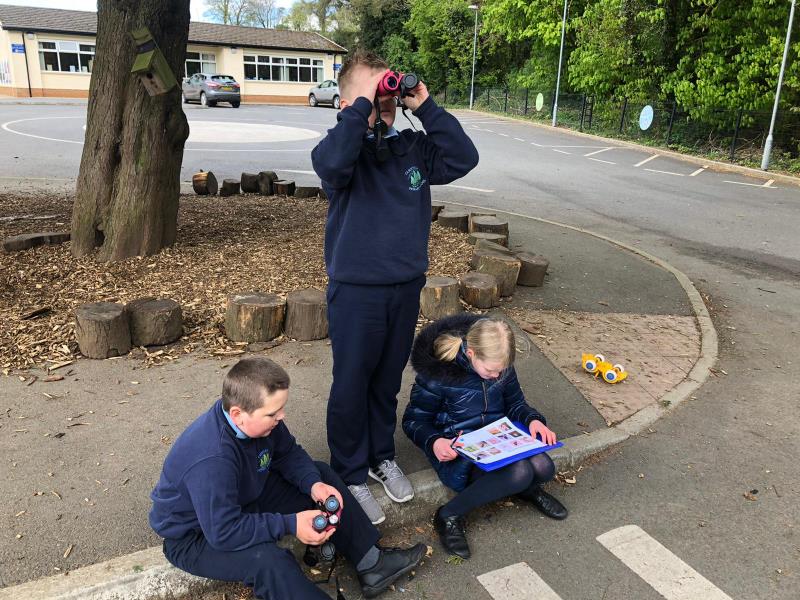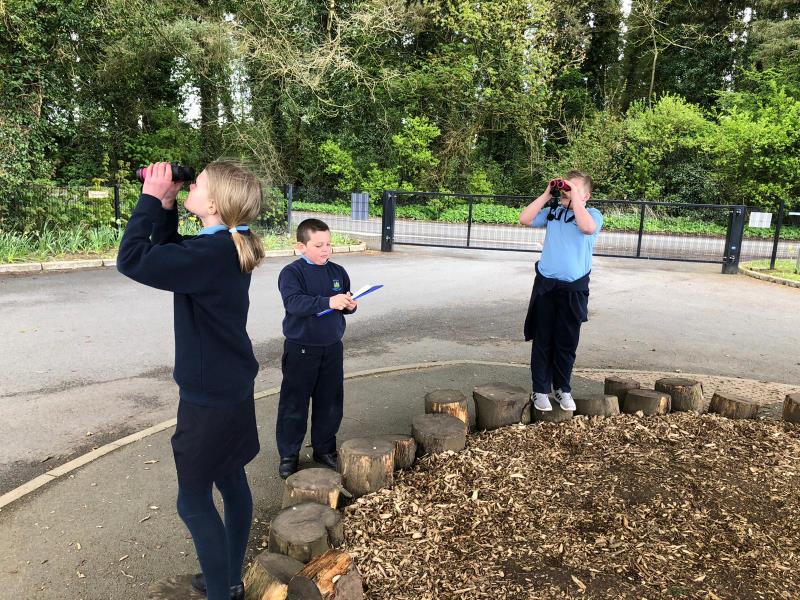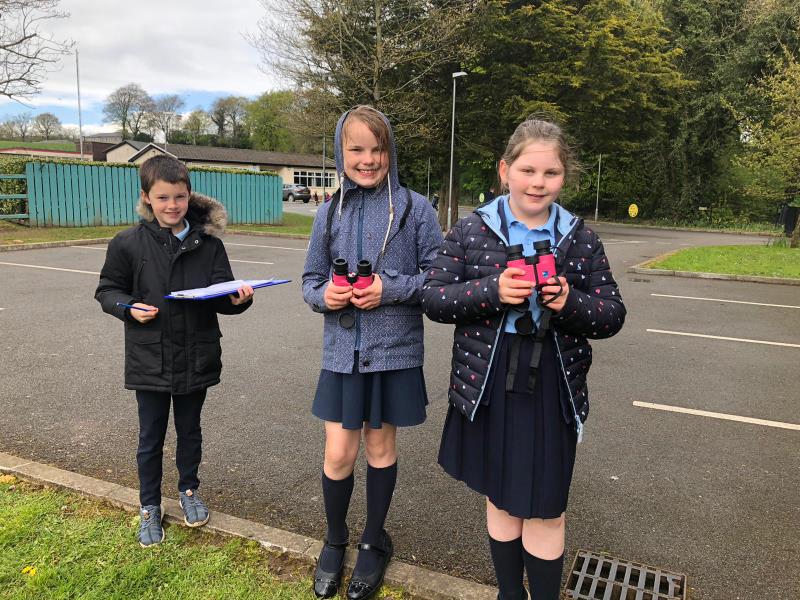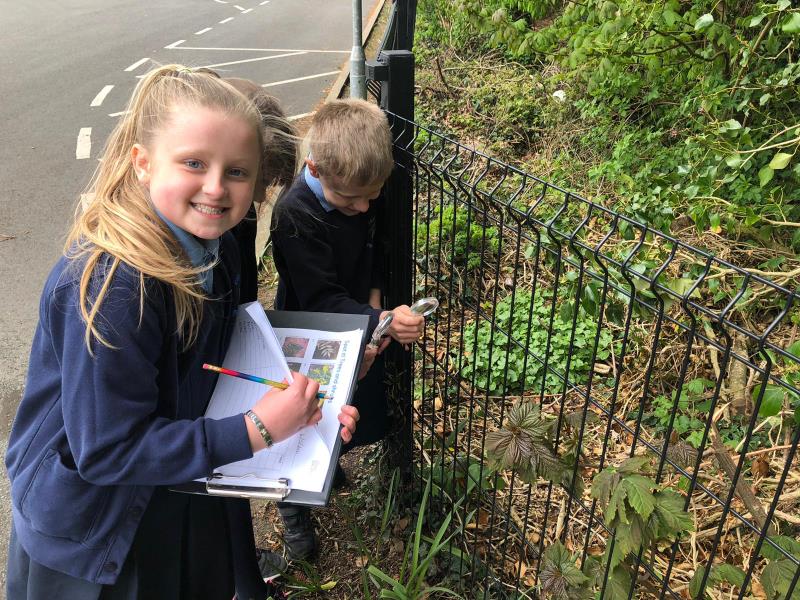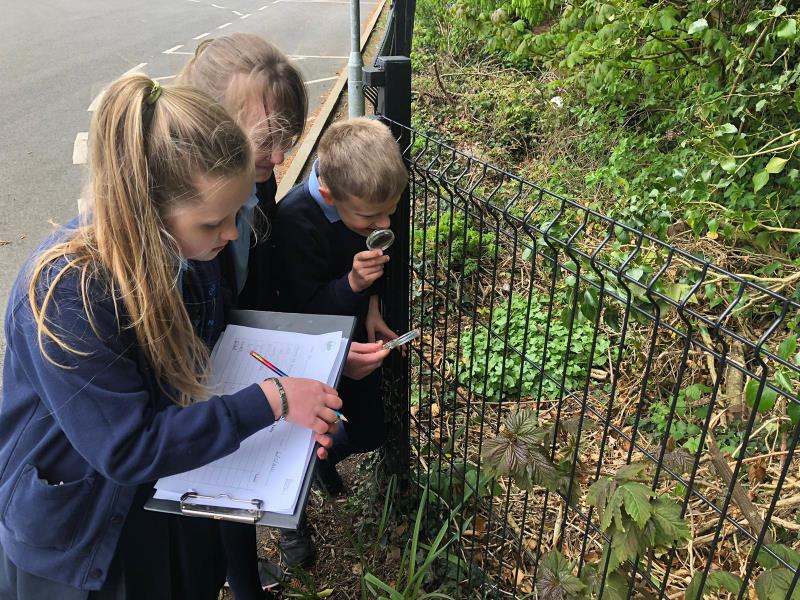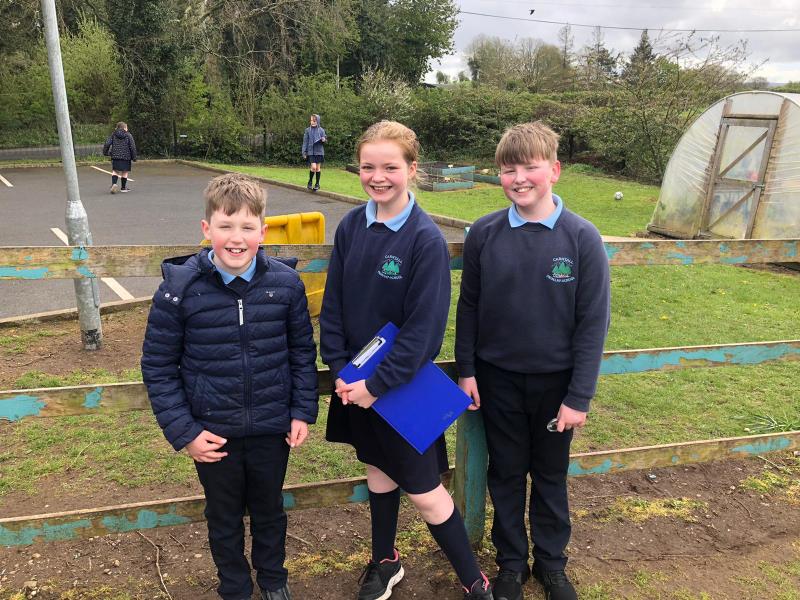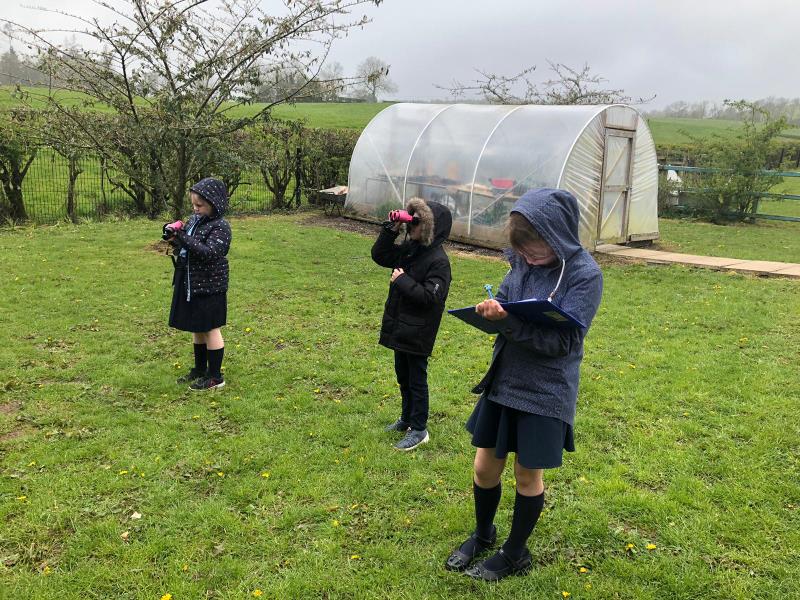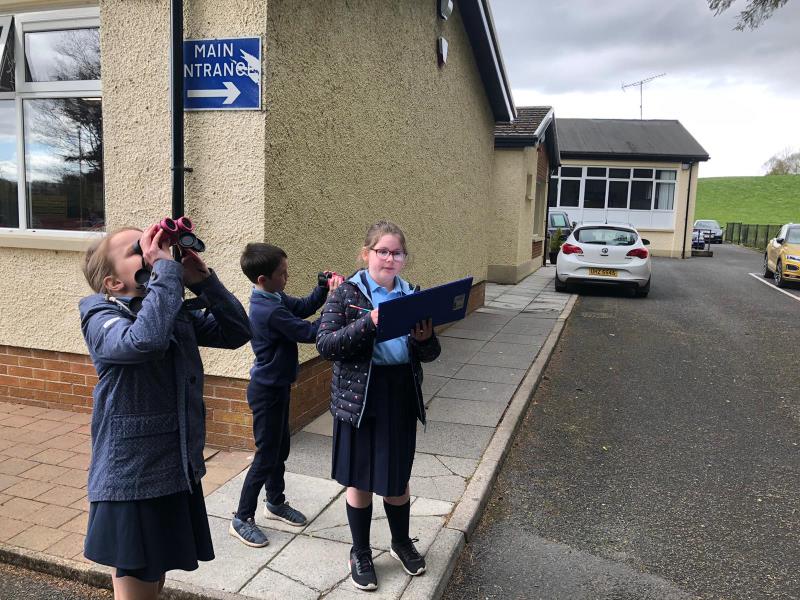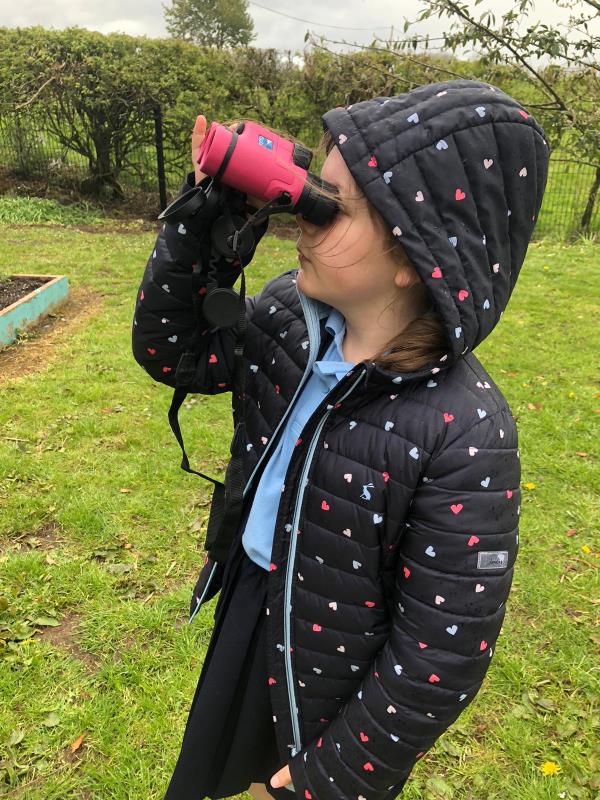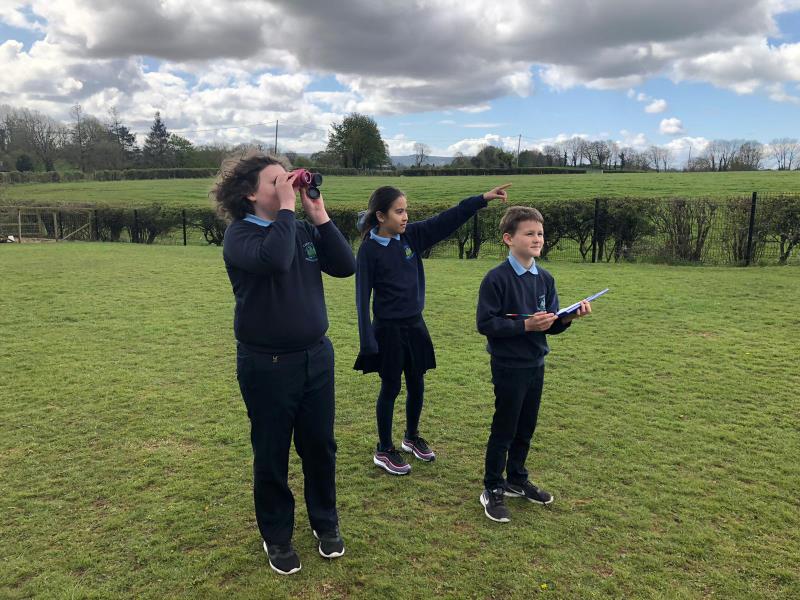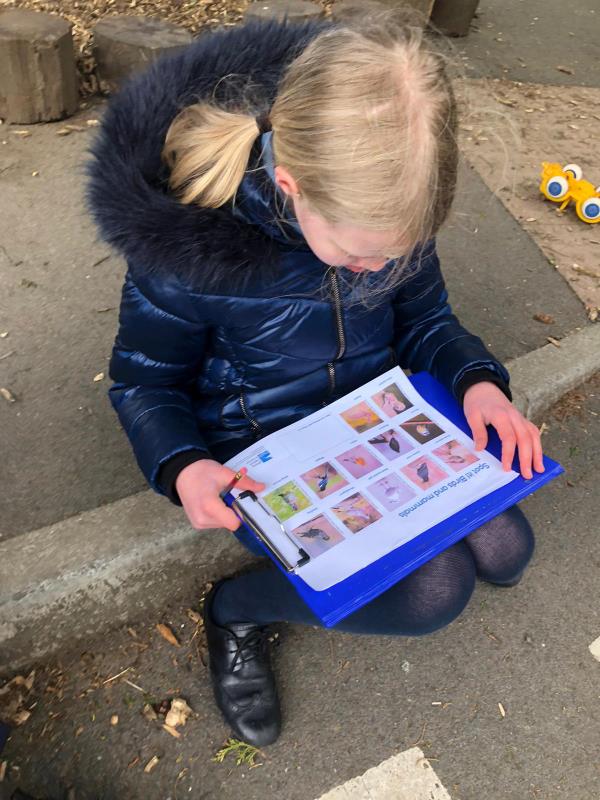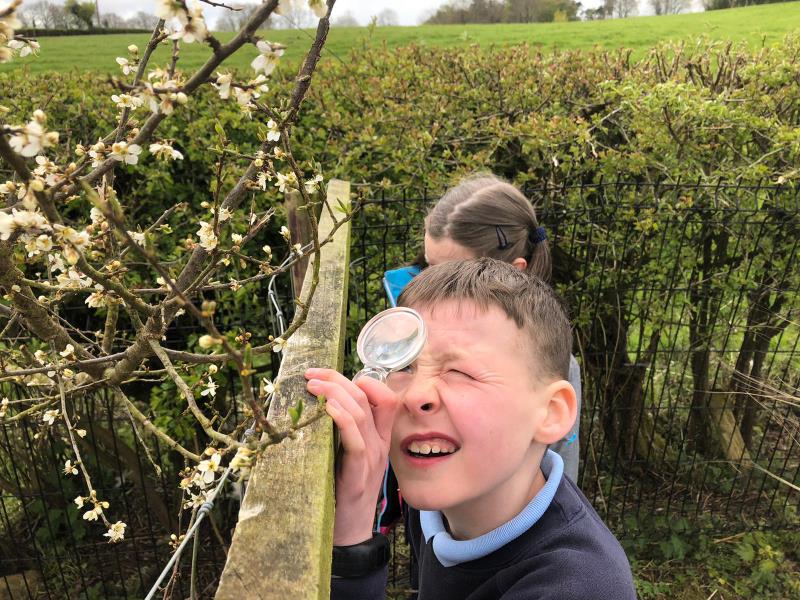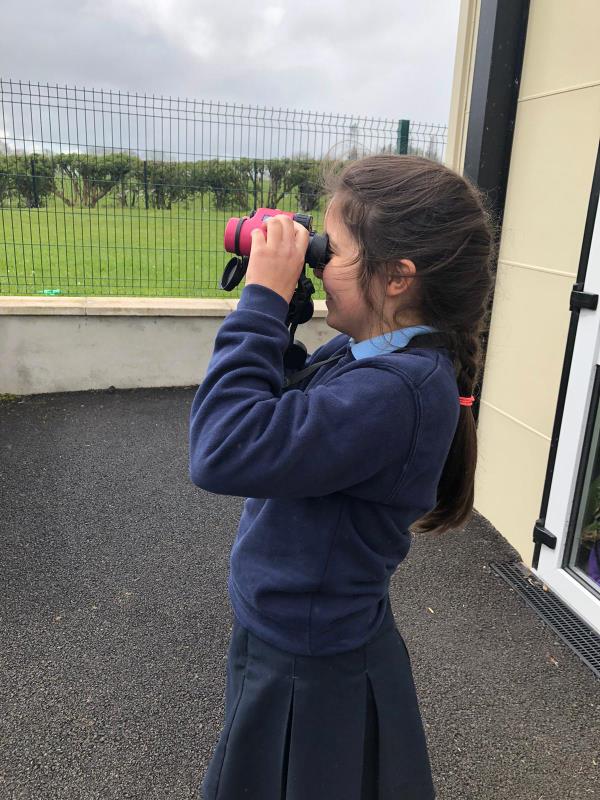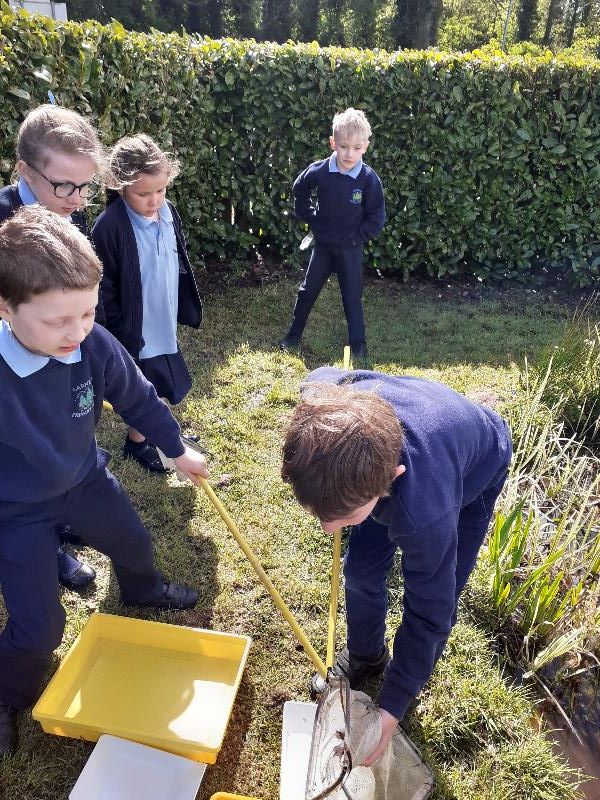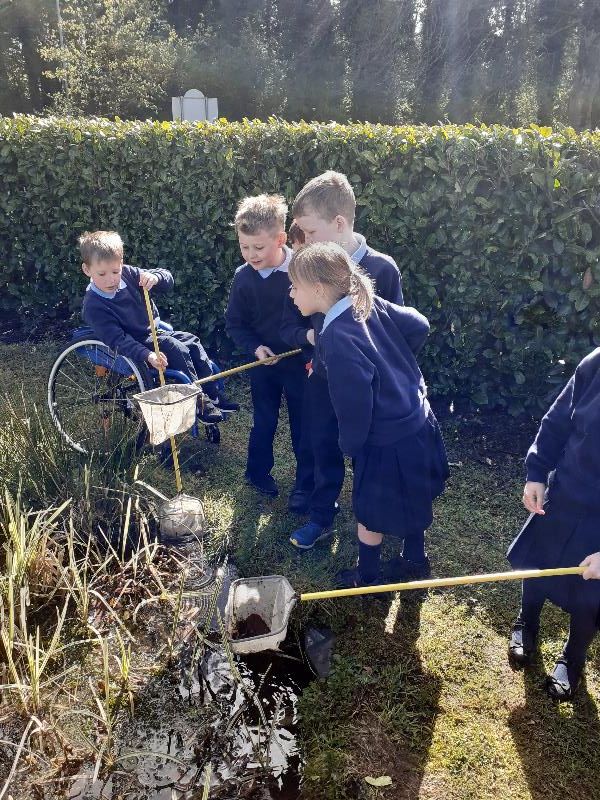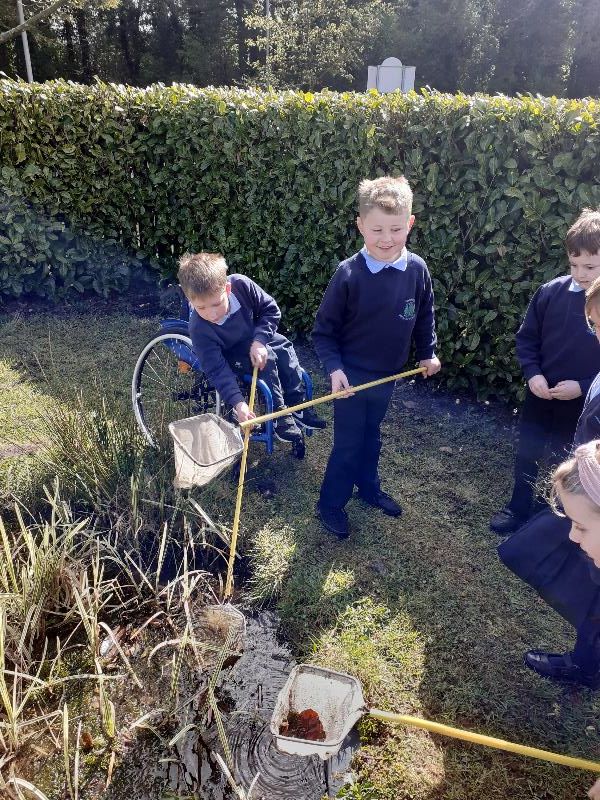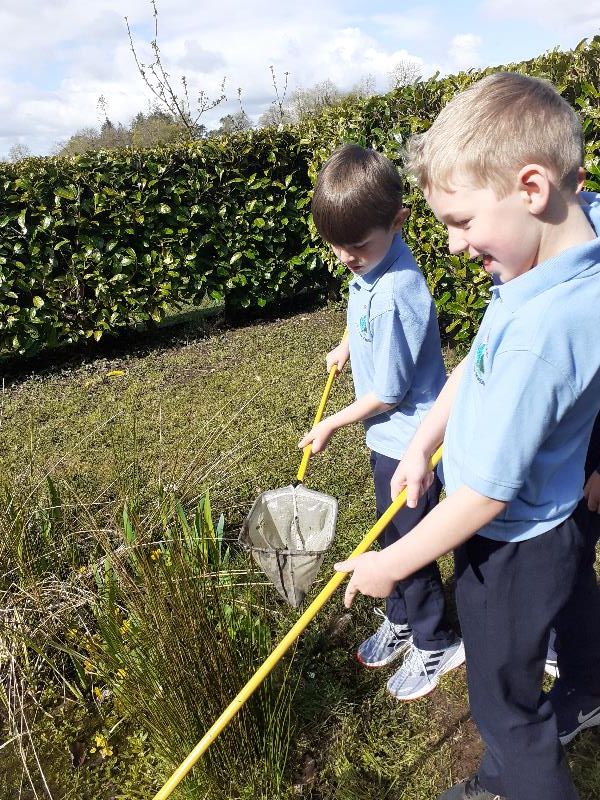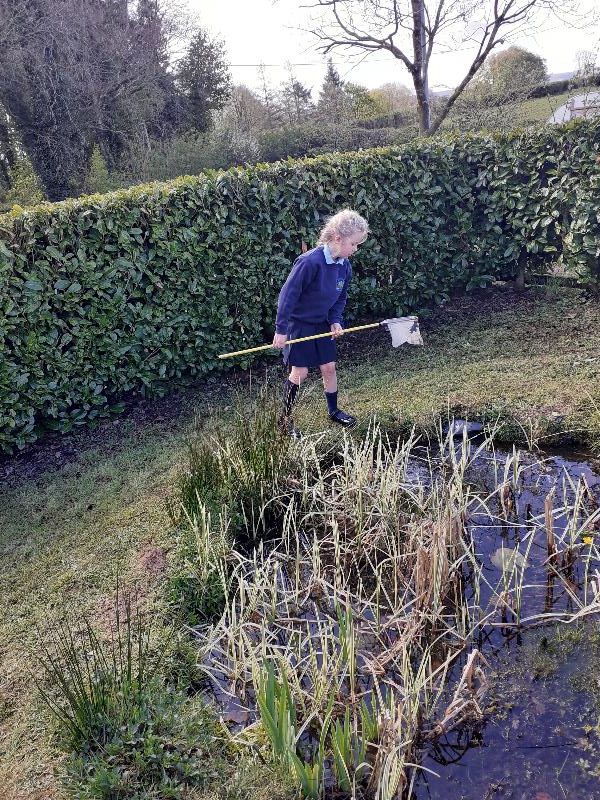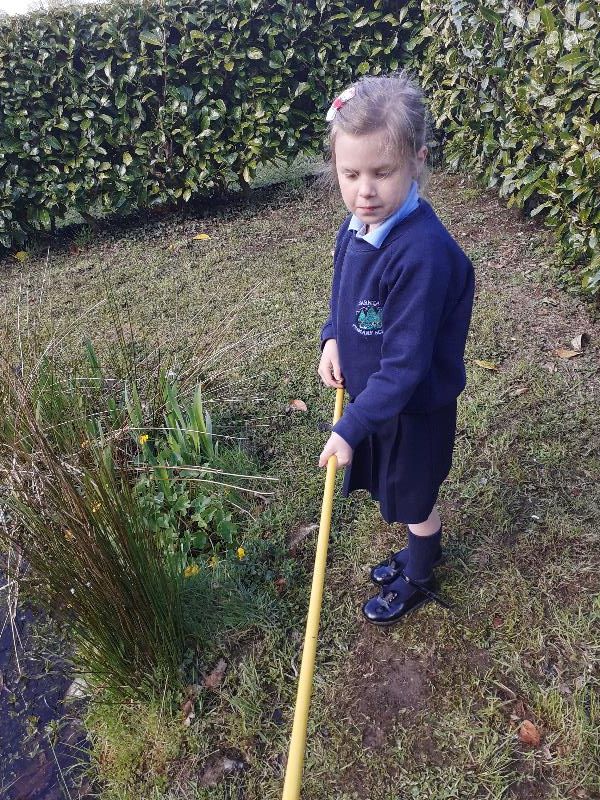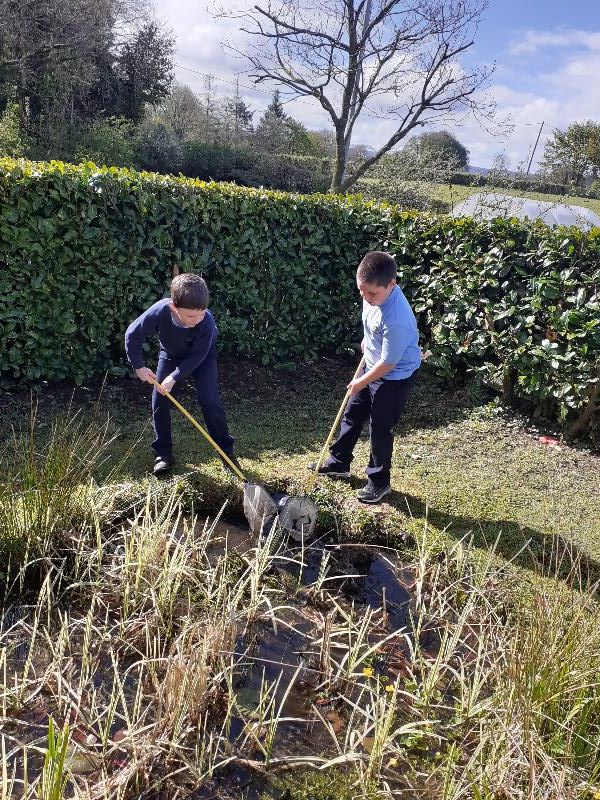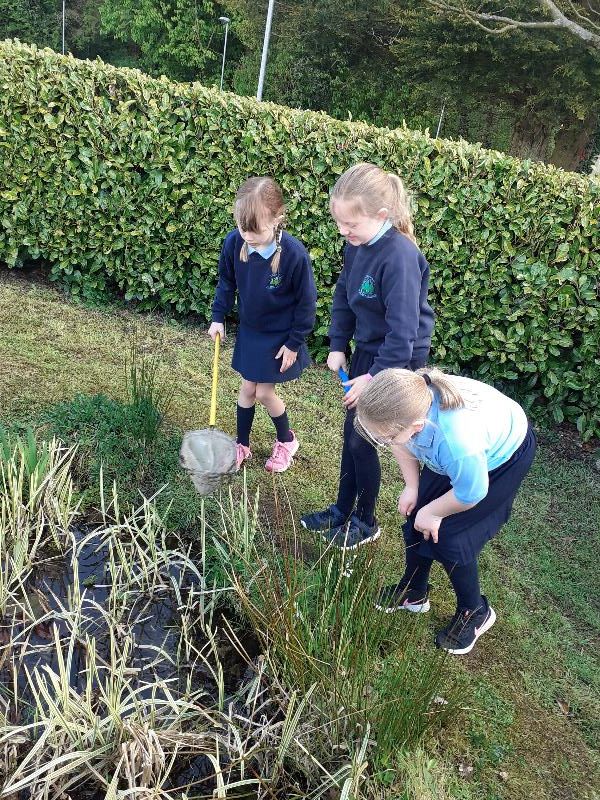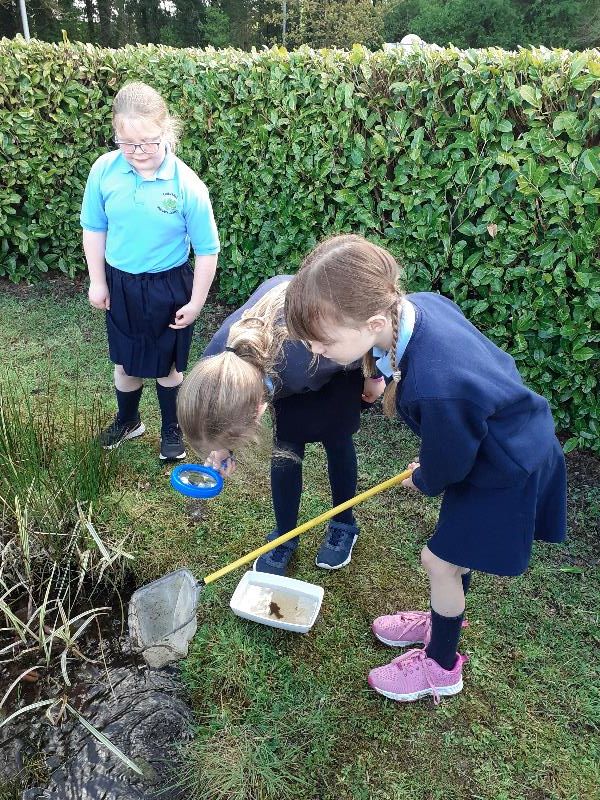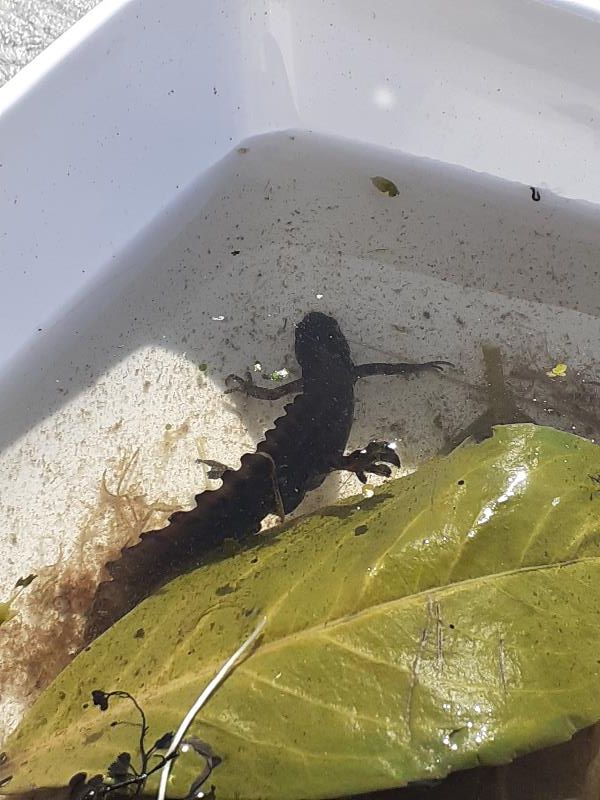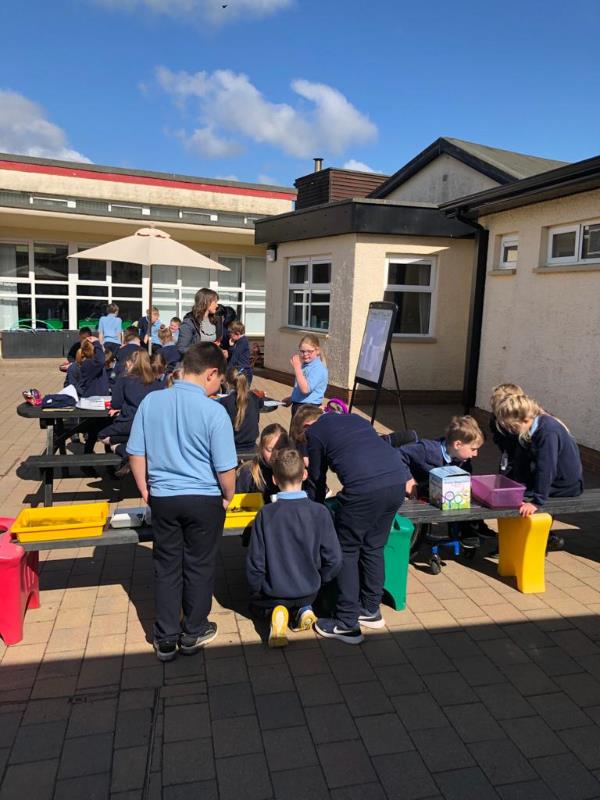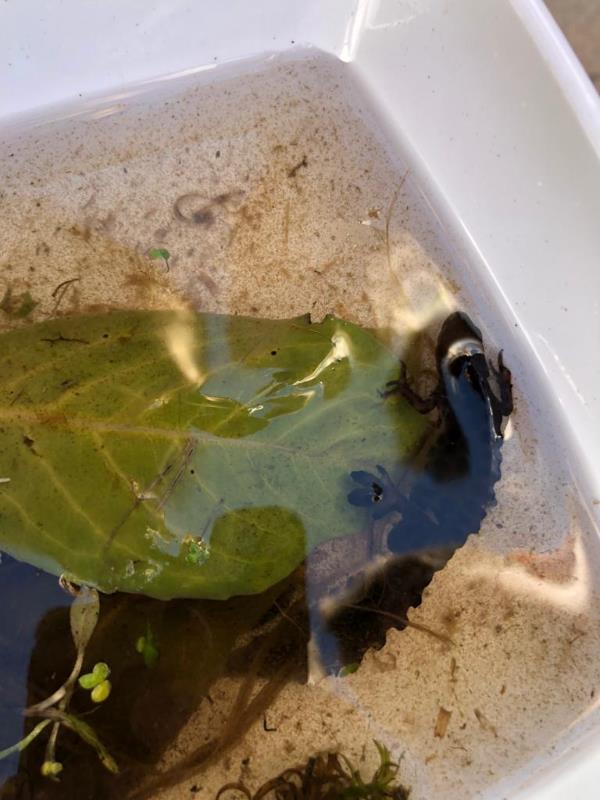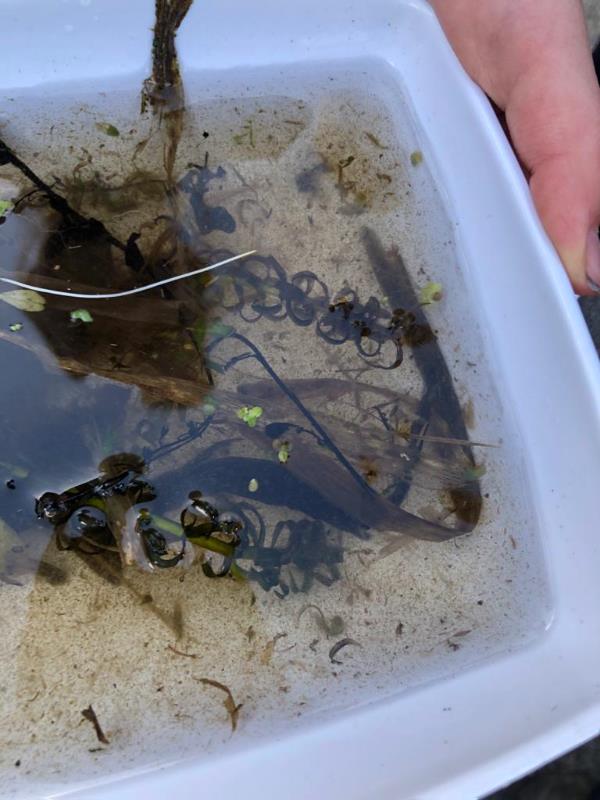Our Biodiversity Project
We have recently been focusing on the Biodiversity in our school grounds. We are completing a number of projects to monitor and improve Biodiversity. We are recording our research and findings through this page.
Our Biodiversity News
What is Biodiversity?
P7 Investigating the Plant life and Minibeasts
Mini-beasts
The P7 class were exploring mini-beasts in our bio-Blitz project around our school grounds. The most common mini-beast they found were flea beetles and there were 153 of them. We think this is because beetles are the most numerous insects in the world and they use all types of food sources. The least common mini-beast we found were earwigs, caterpillars and larvae. We think we didn’t find many of these because they are insects that transform into other insects. We found other interesting insects like woodlice, worms, slugs, centipede, harvest mans, maggots, snails, ants and plant bugs.
Plant life
When the P7 class were investigating the plant life in our school grounds the discovered that grass covered a large percentage of the grounds. They found a variety of other plant life including daffodils, other flowers and plantain. We think the abundance of plant life may be due to the natural fertilizer produced by the many rabbits in our school grounds!
By Hannah, Luke, Kendra & Emma
Life in our Pollinator Bed
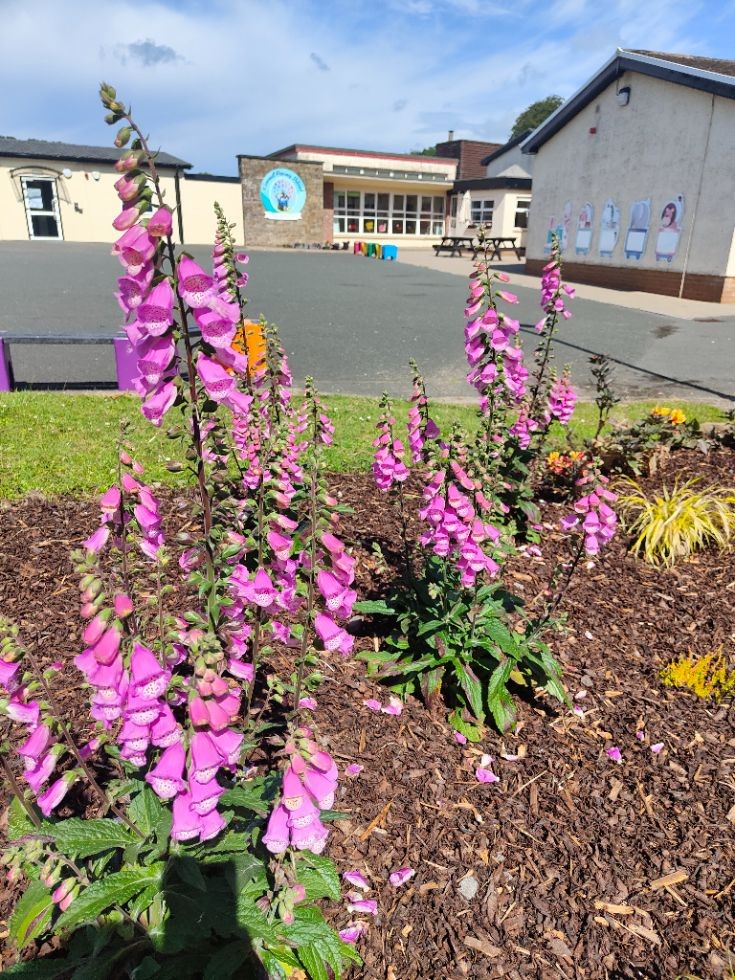
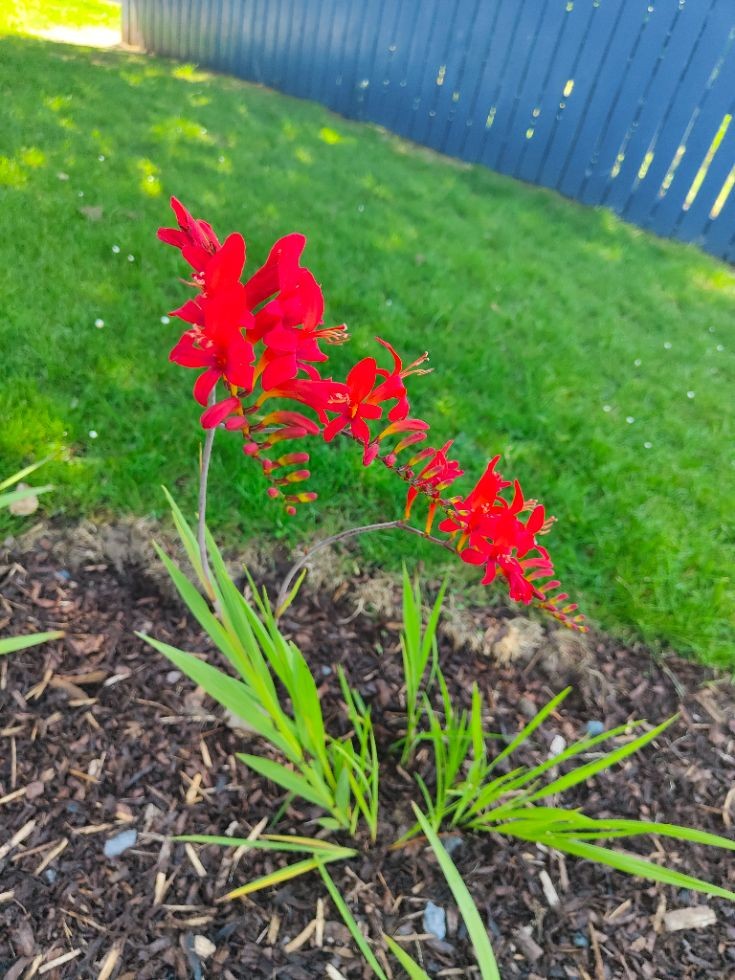
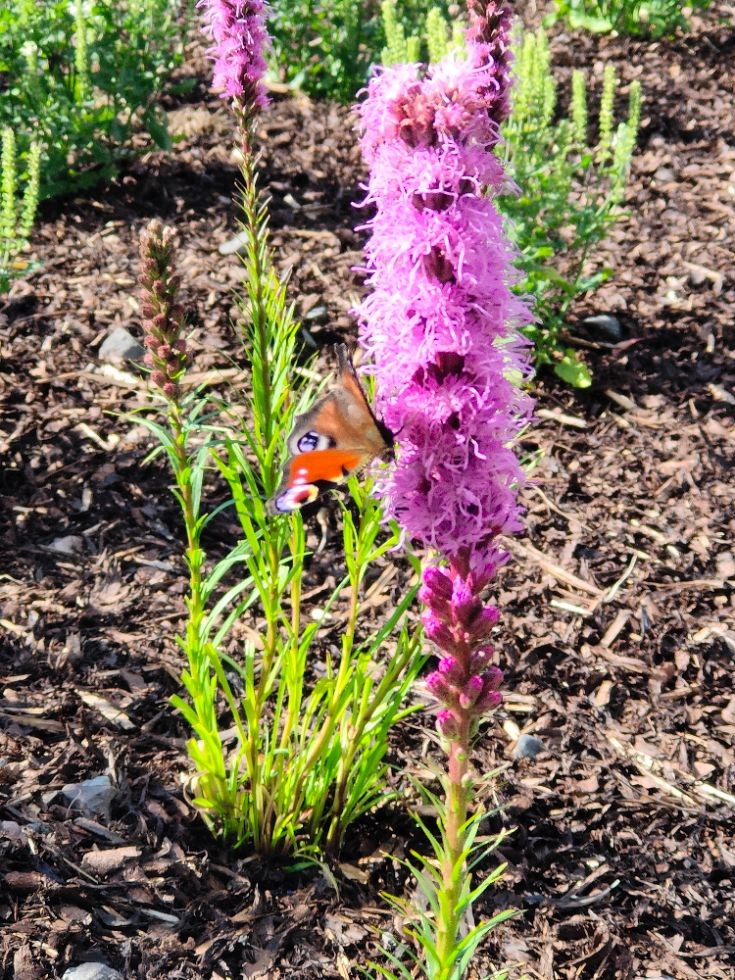
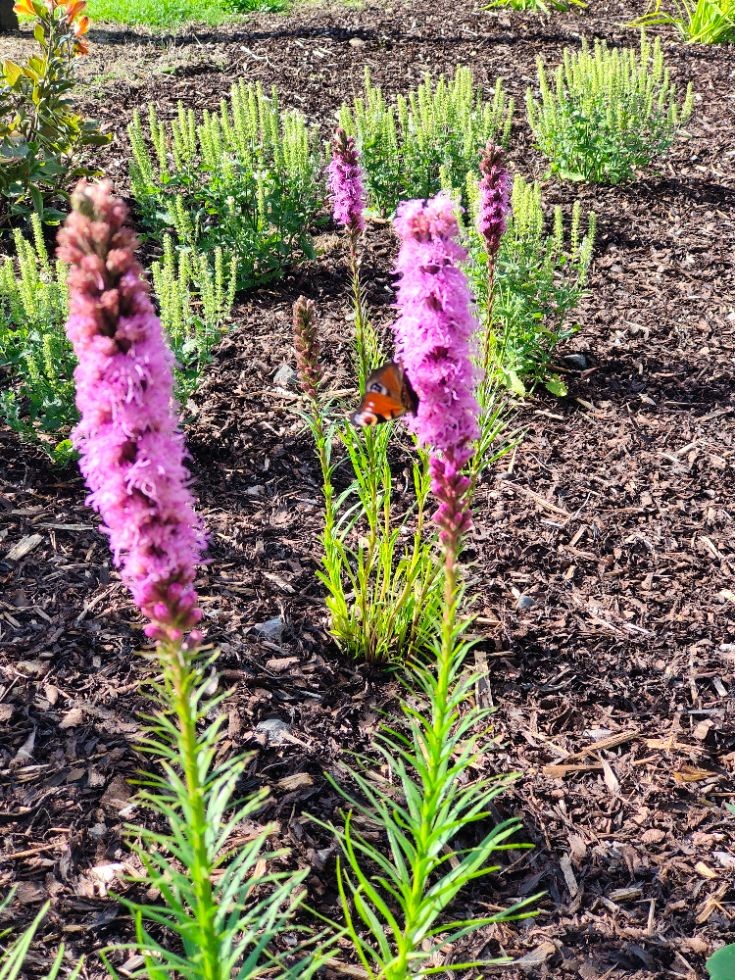
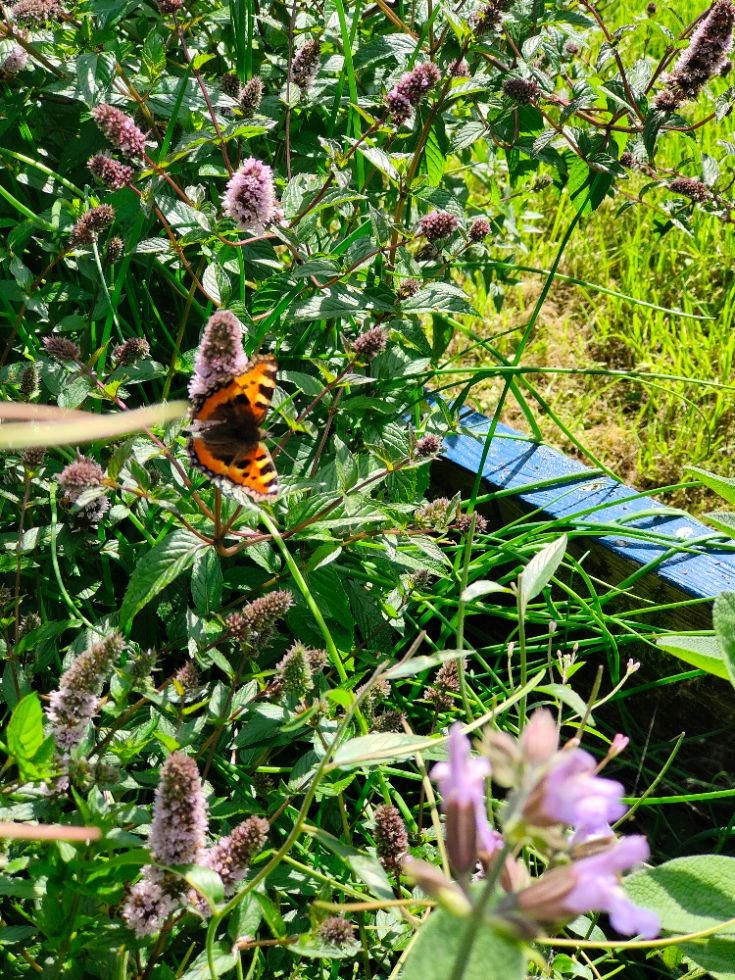
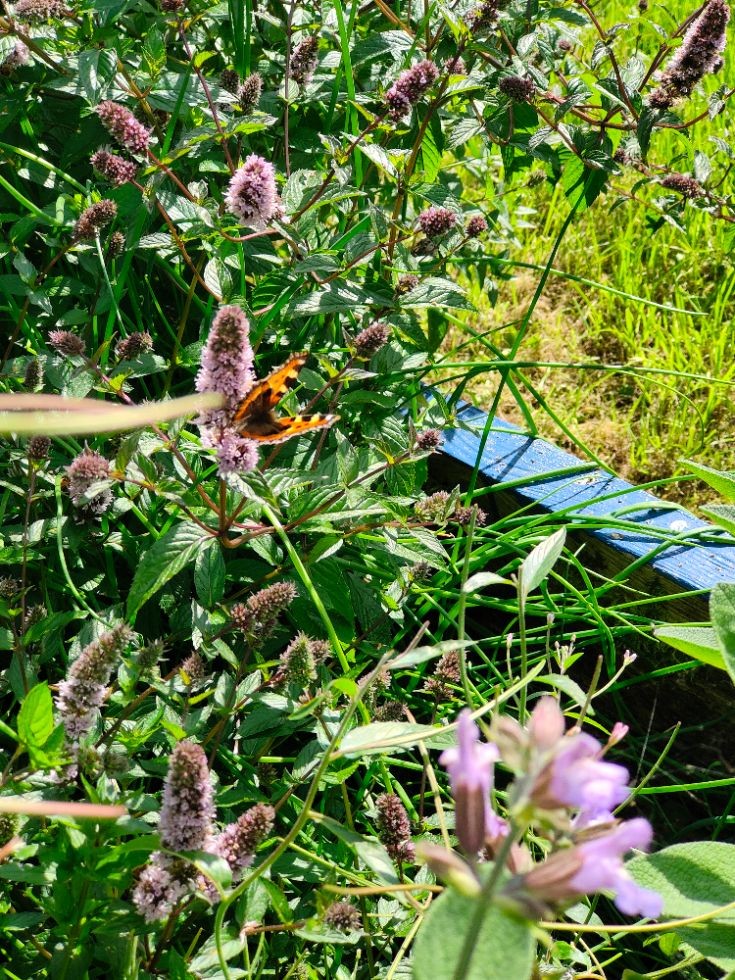
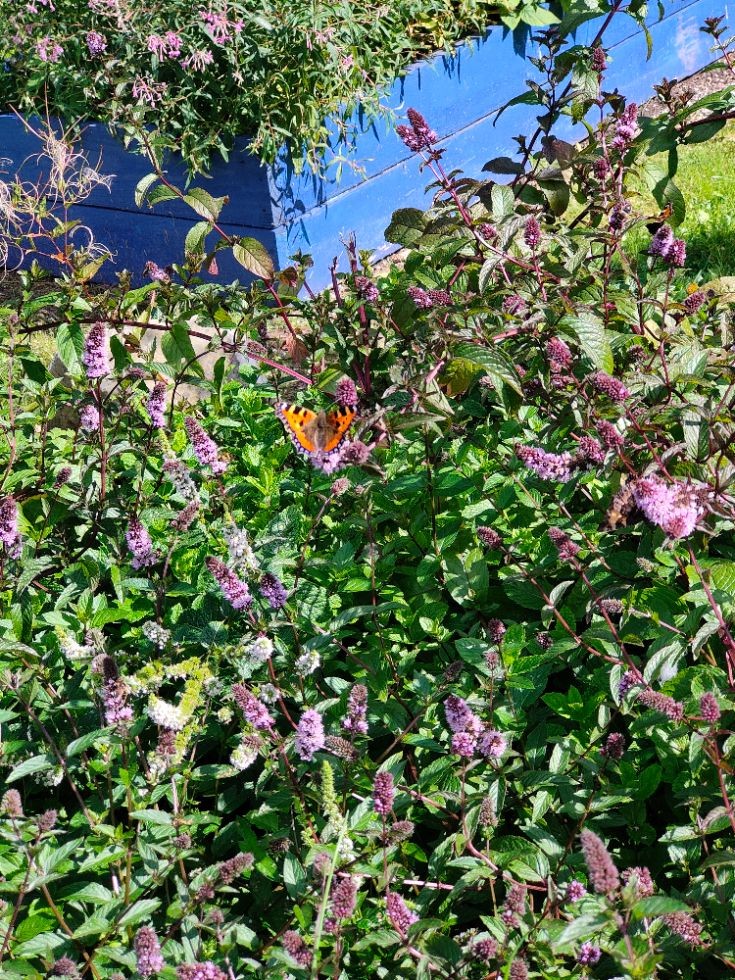
What is Pollination?
‘Pollination is part of the life cycle of plants. Birds, insects and the wind takes pollen between flowers.’ James B, Harvey & Matthew
‘Pollination is a transfer of pollen.’ Harry, Tom & Robbie
‘Pollination enables fertilisation and the production of seeds.’ Grace, Zoe & Layla
What is a Pollinator?
‘A Pollinator is an animal that moves pollen from one plant to another.’ Fearne, Ebony, Jack & Rebecca
‘A Pollinator can be anything that carries pollen from one flower to another.’ Rosa, Bella & Ella-Jayne
What’s so important about Pollination?
‘Plants are fertilized and able to produce the next generation of plants including the fruits and crops we eat.’ Thomas, James D & Rhys
‘Pollination is needed to produce the next generation.’ Alex, Alfie & Joshua
Are Pollinators in Danger?
‘There is evidence that populations of bees and other pollinators are less healthy and abundant than they have been.’ Casey, Ella-Mae & Ellie
What can you do to help?
‘We can plant more flowers to attract pollinators.’ William, George & Isaac
What are the different types of Pollinators?
‘Bumblebees, Butterflies, Moths, Hoverflies, Beetles, Wasps and Other Flies’ Sarah, Summer & Alexis
Big Bird Watch

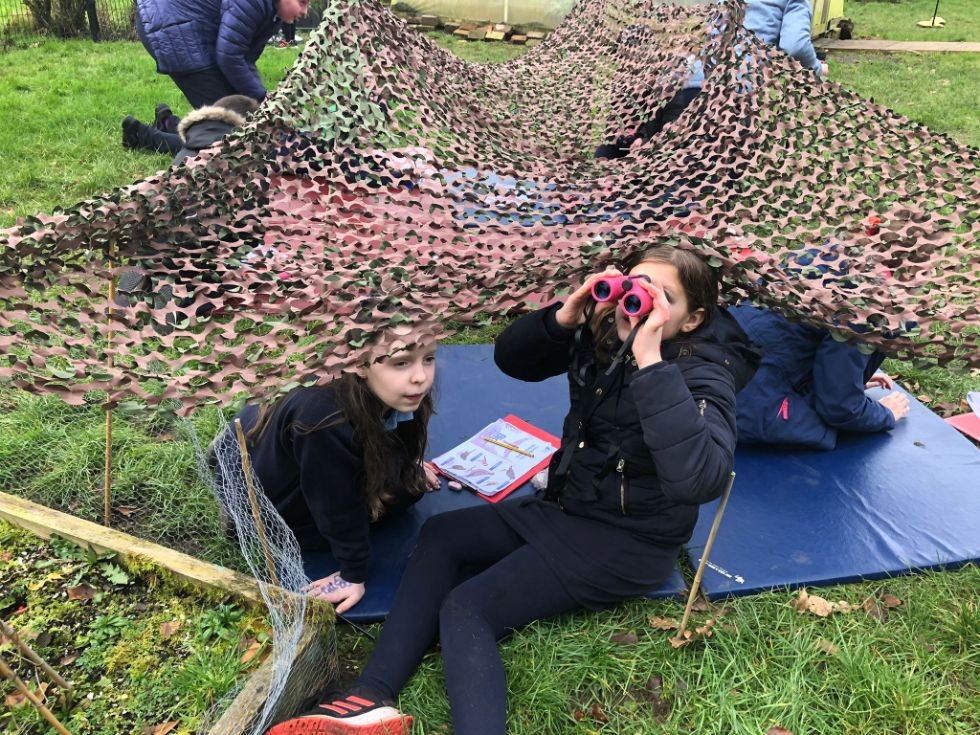
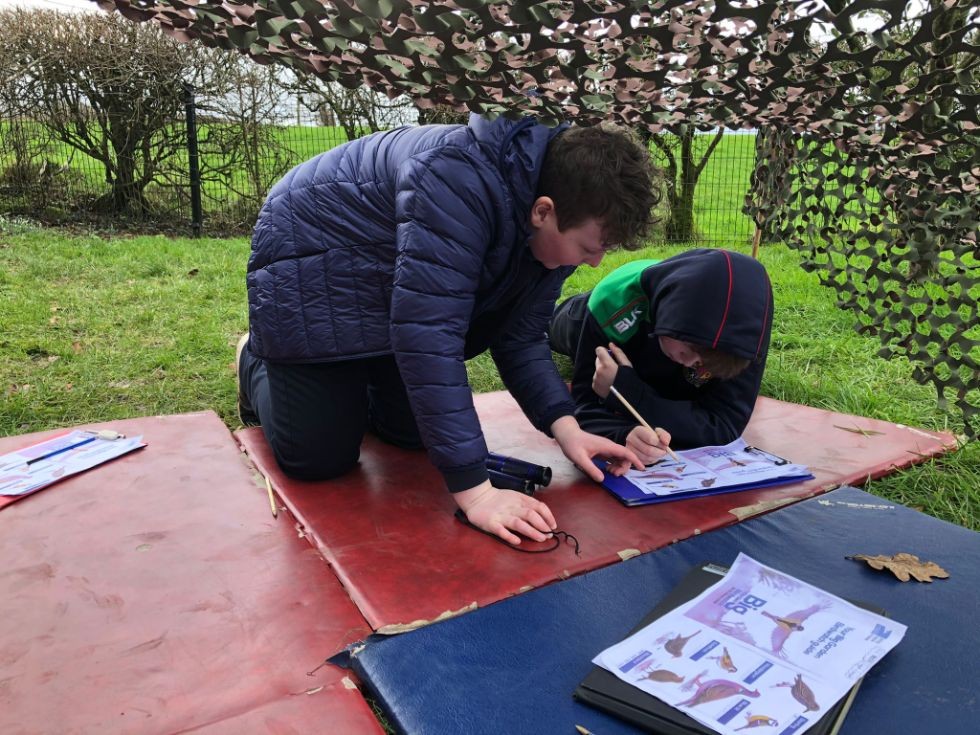
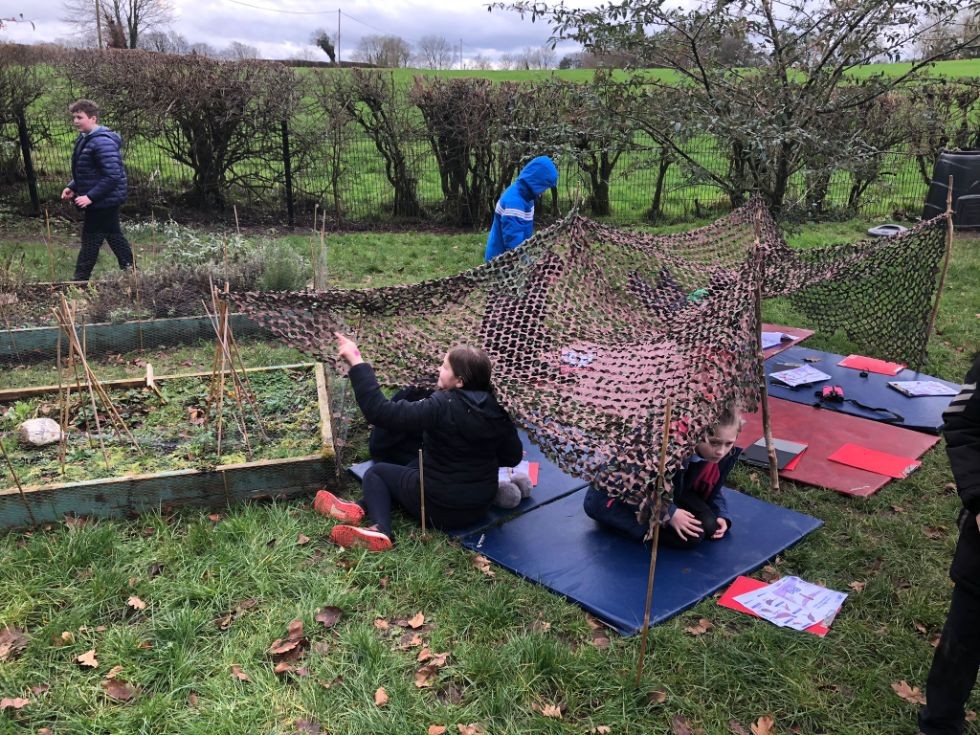
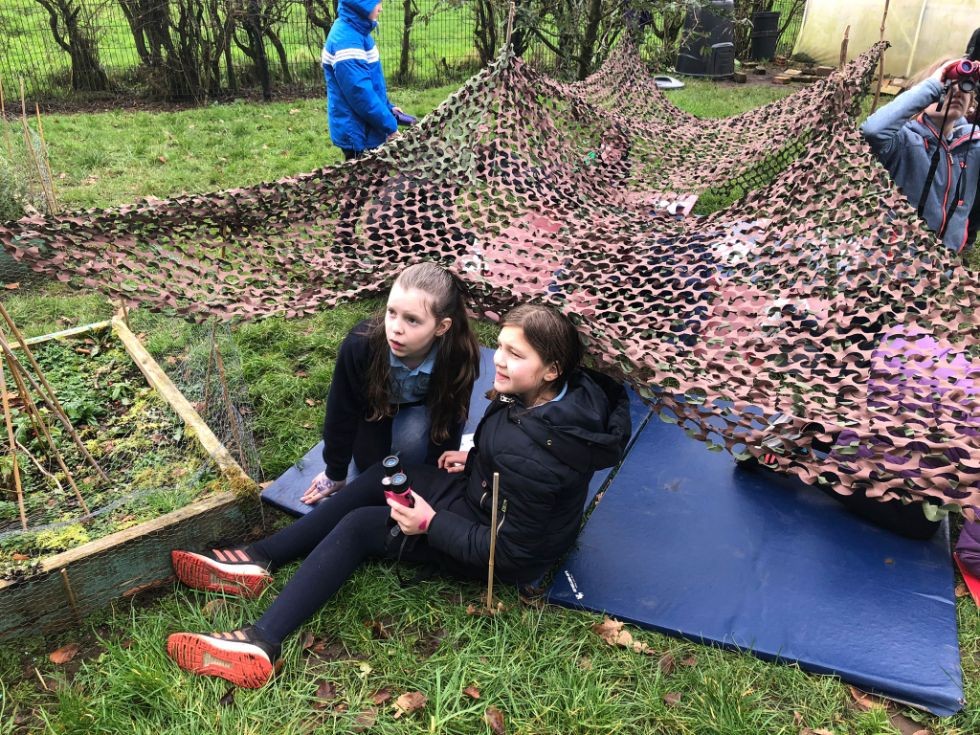
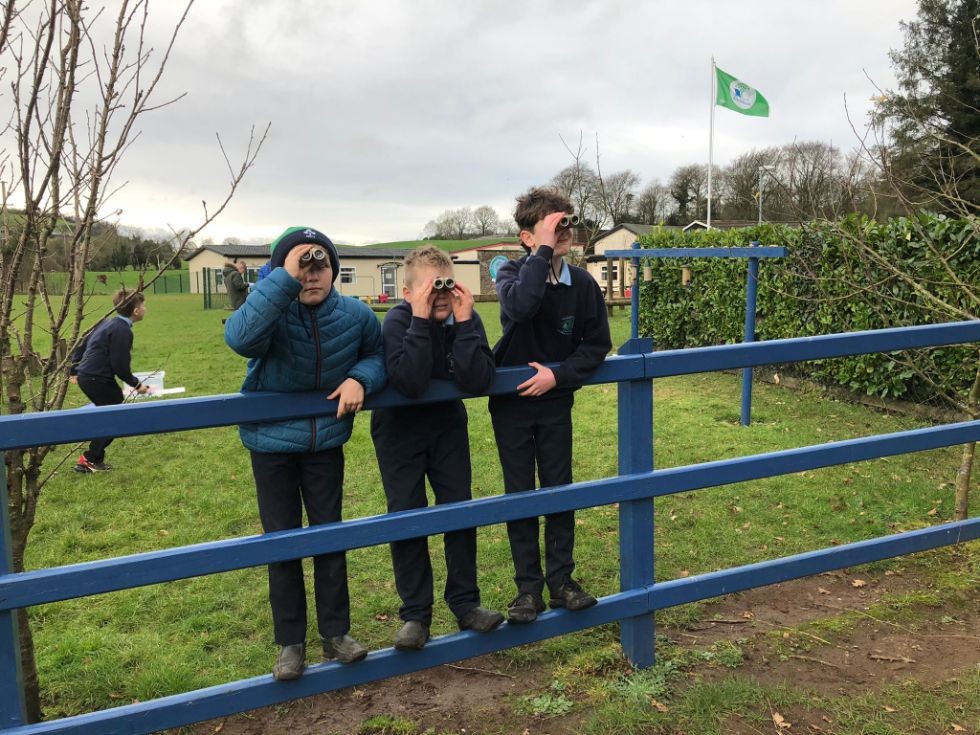
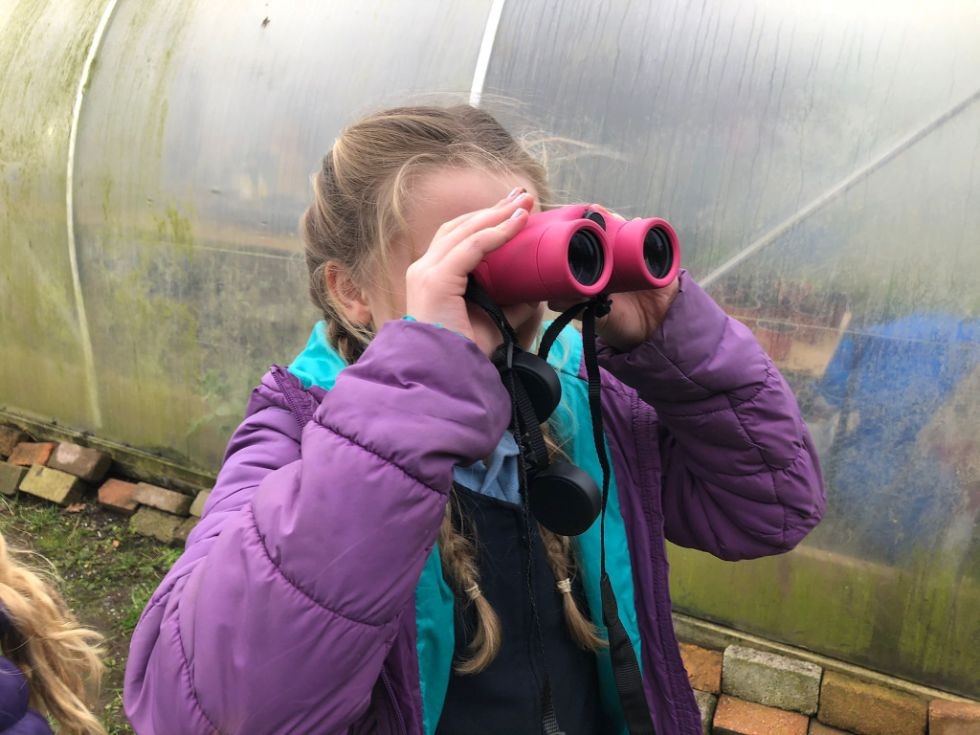
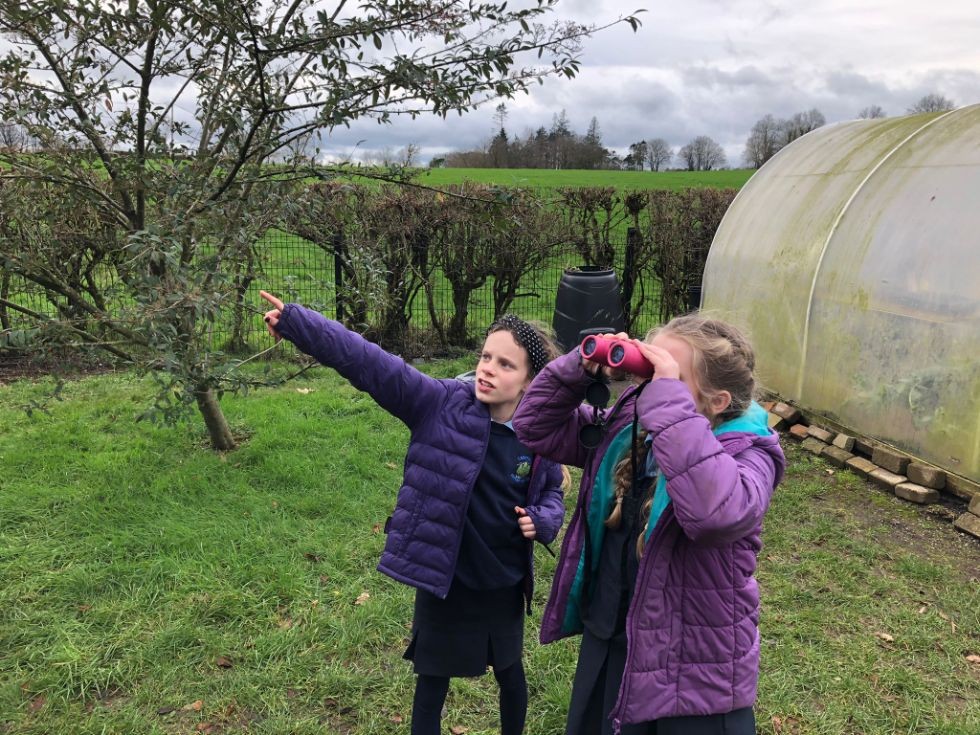
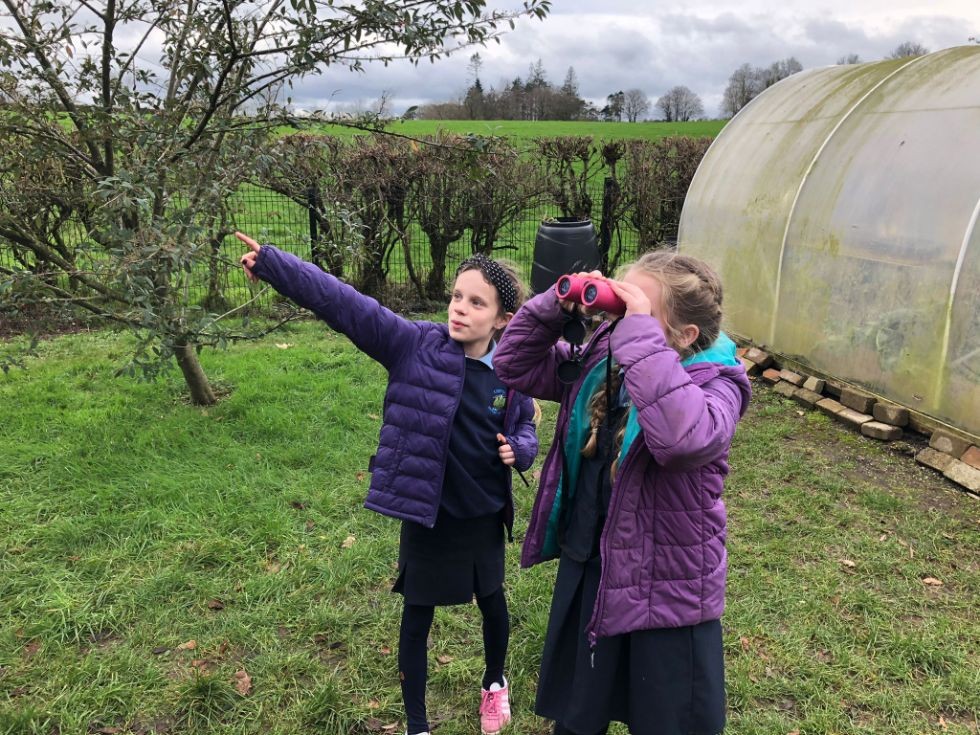
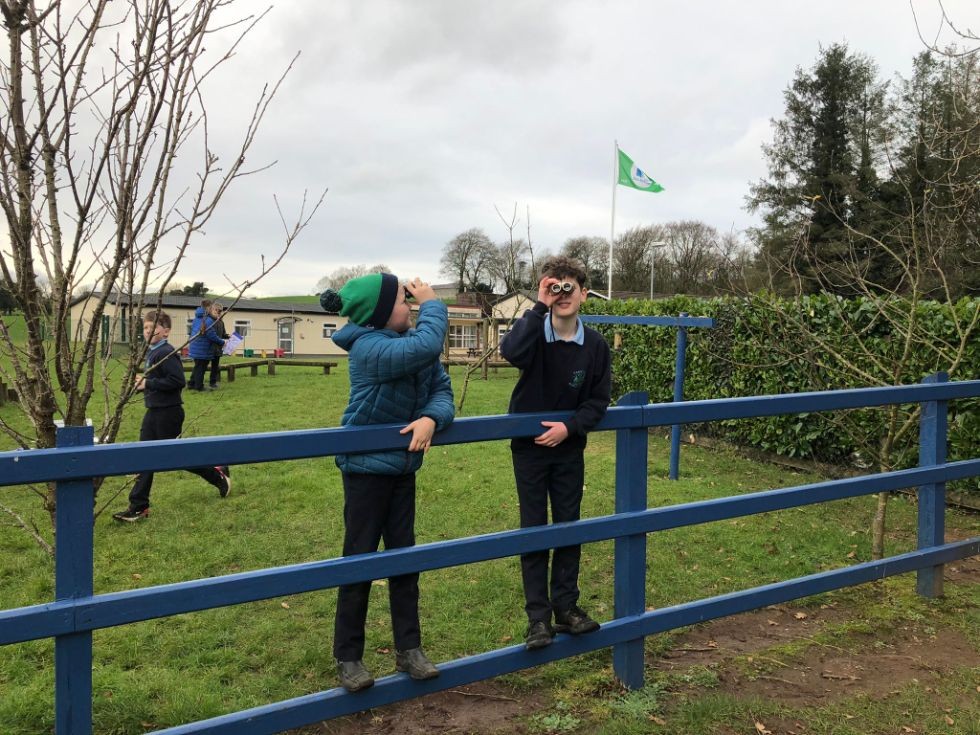
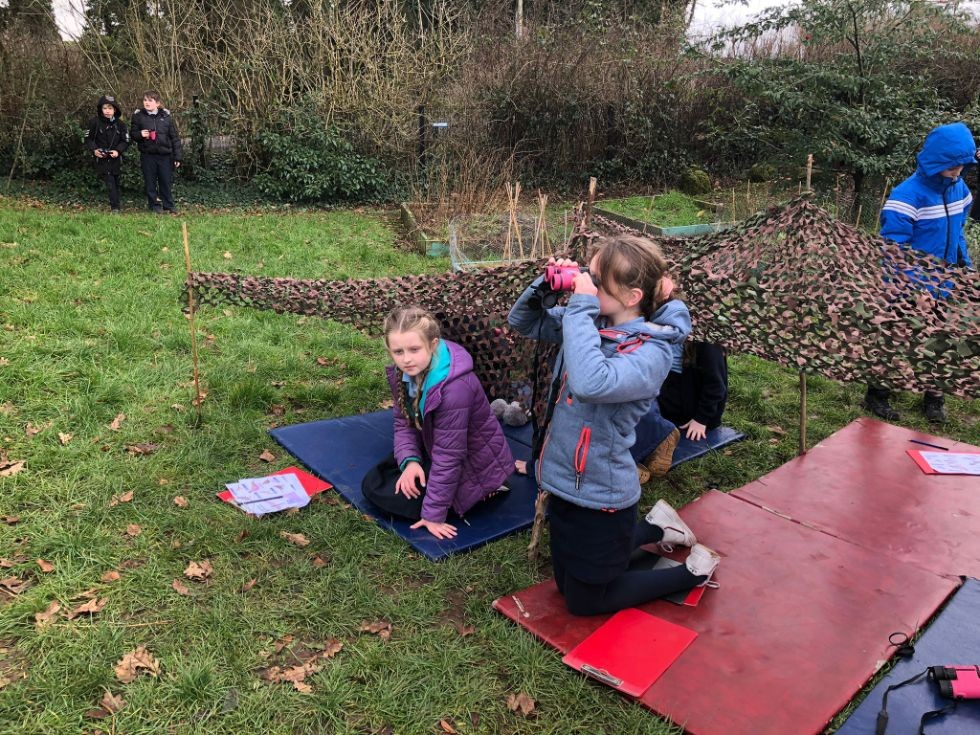
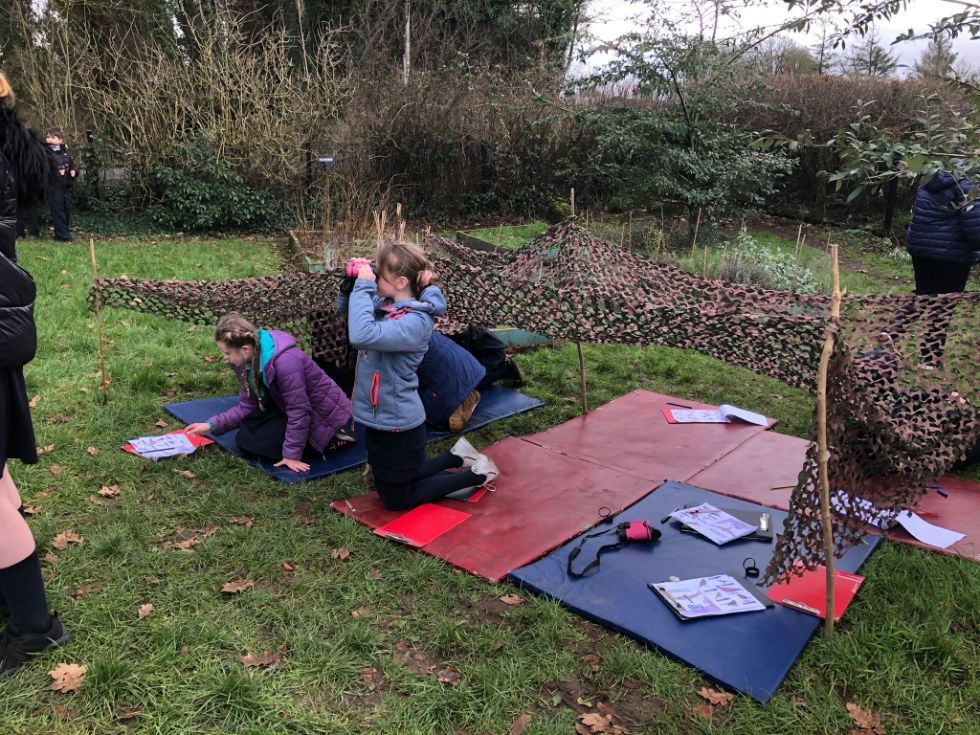
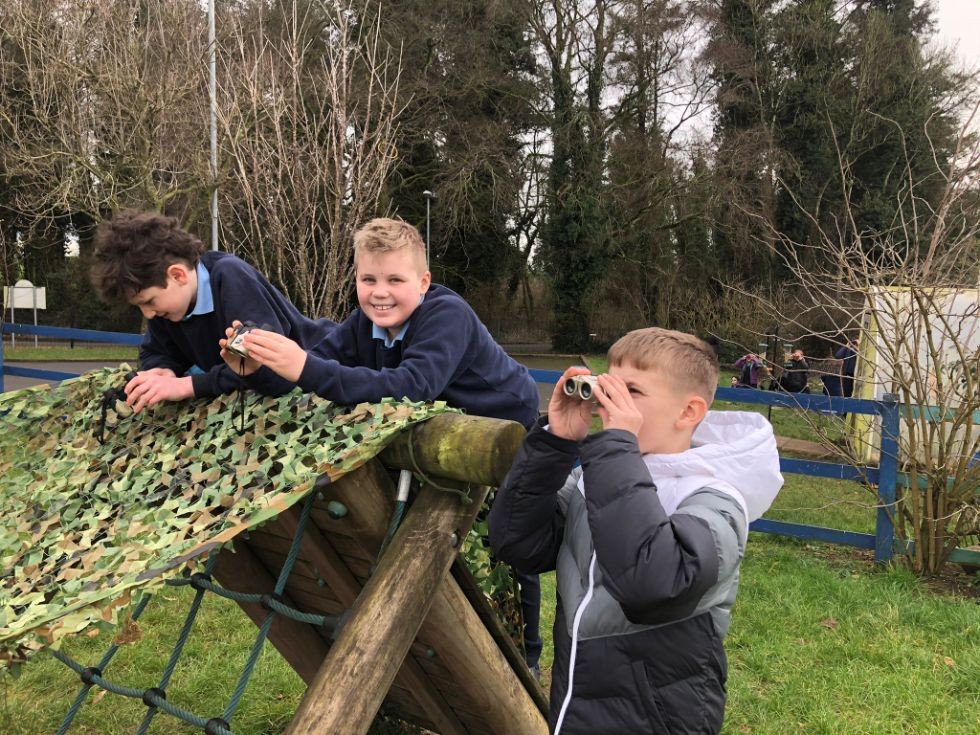
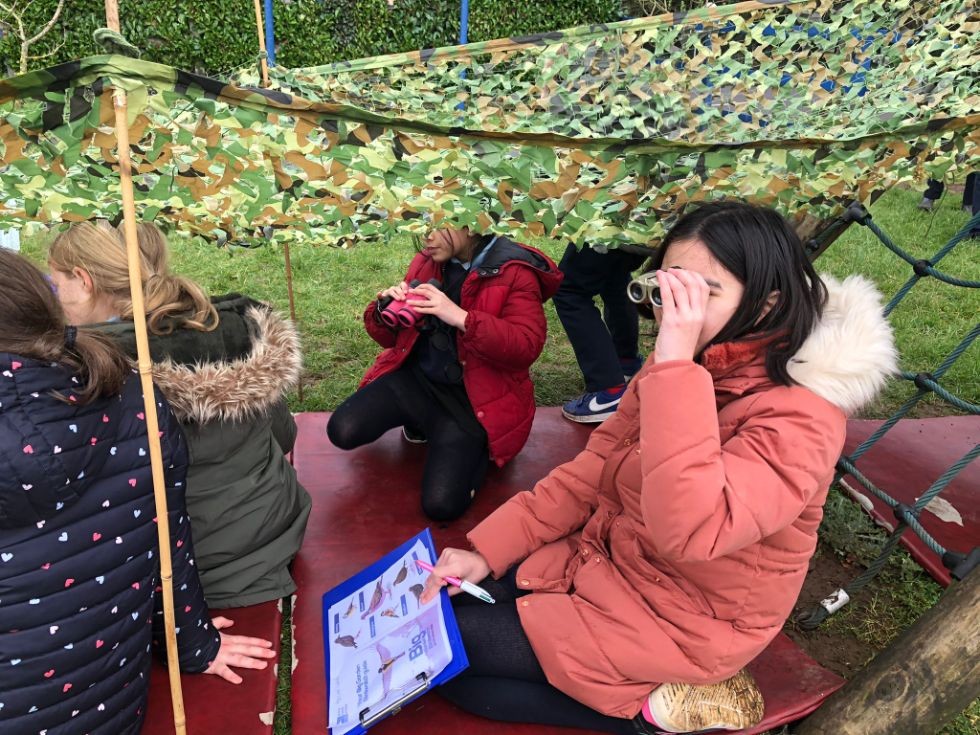
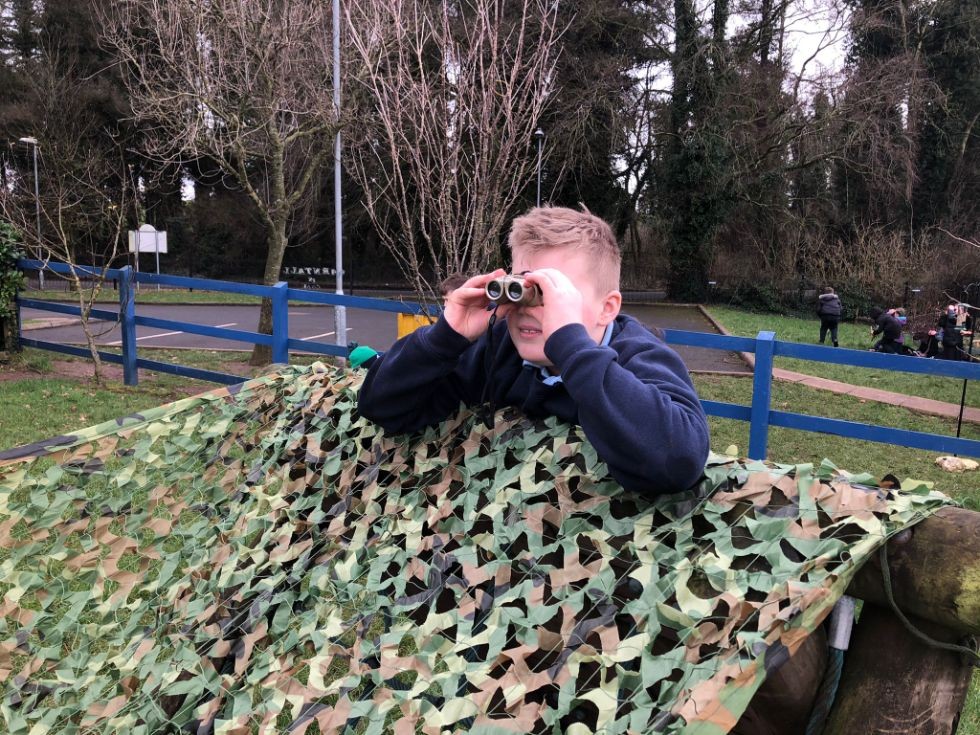
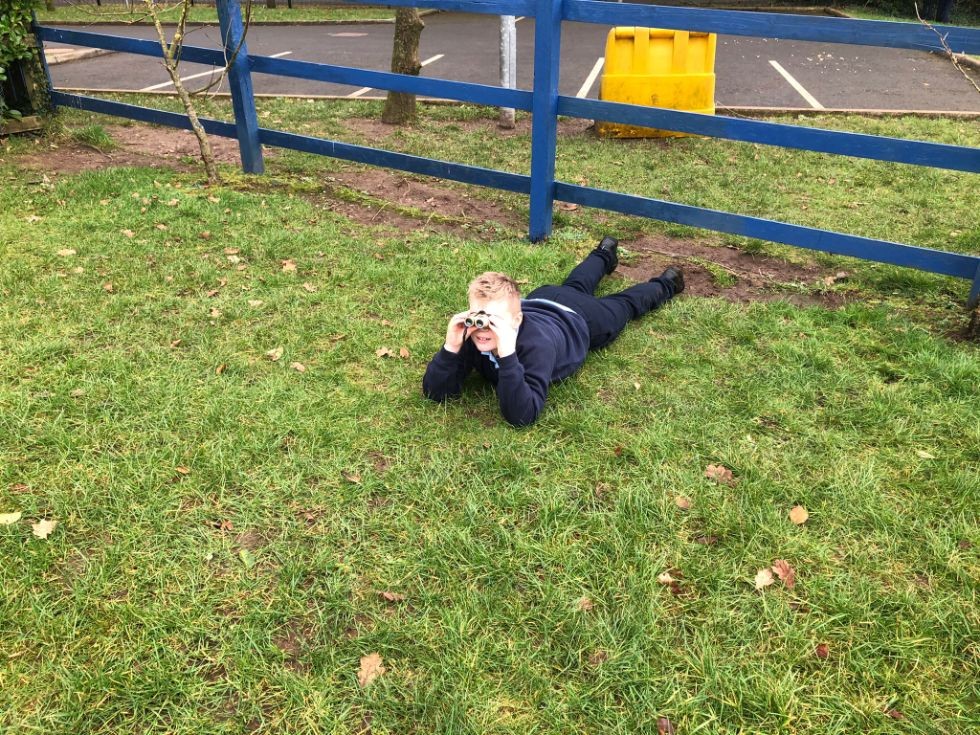
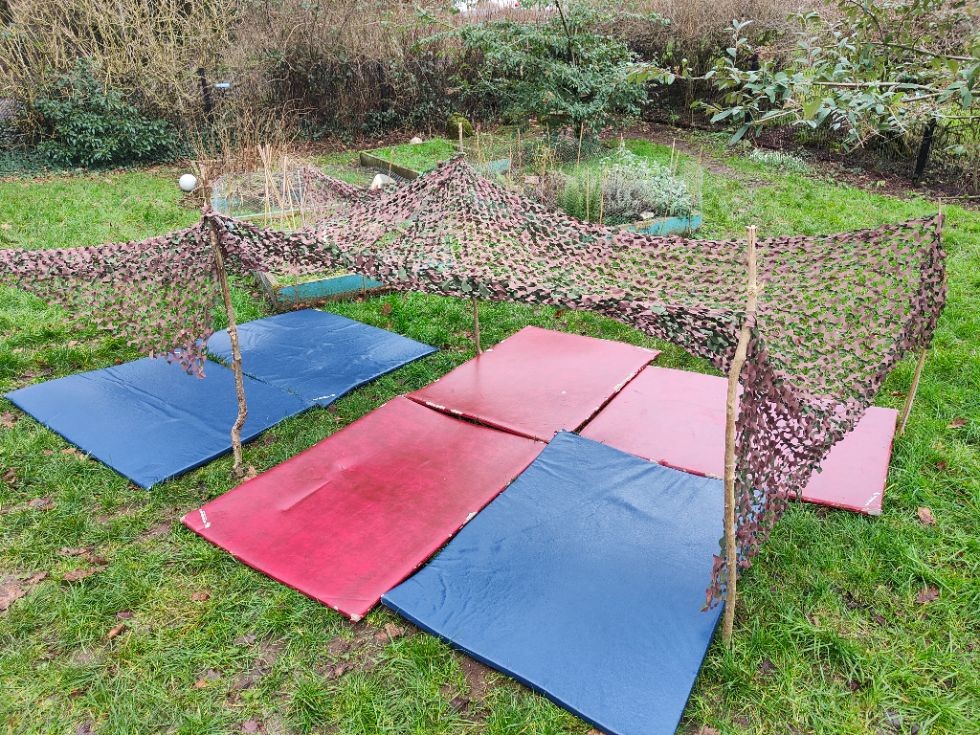
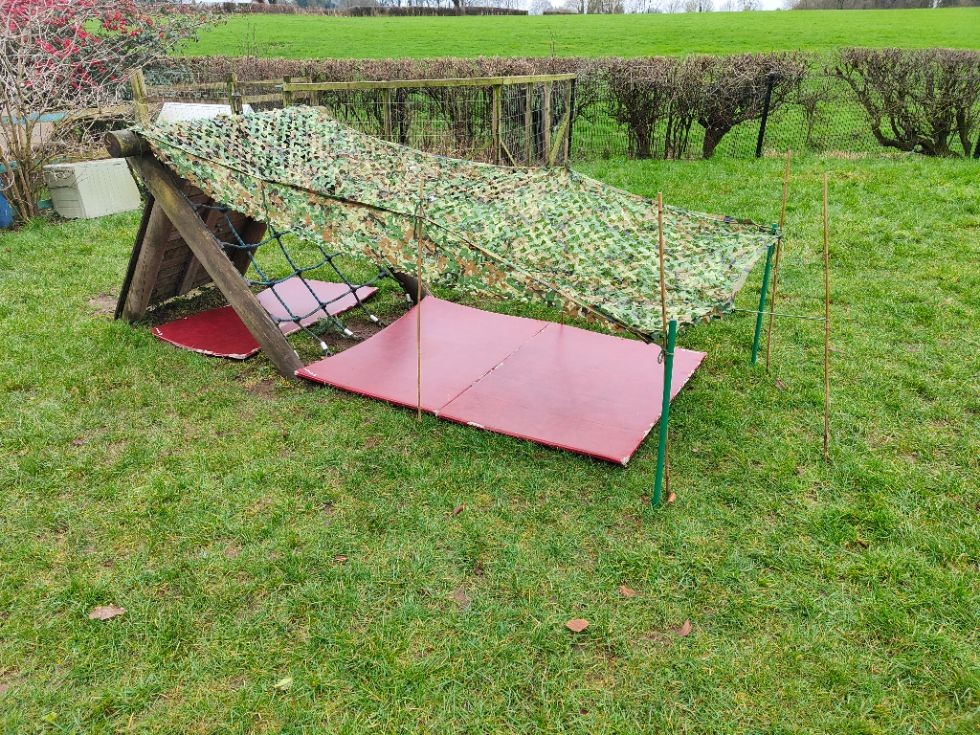
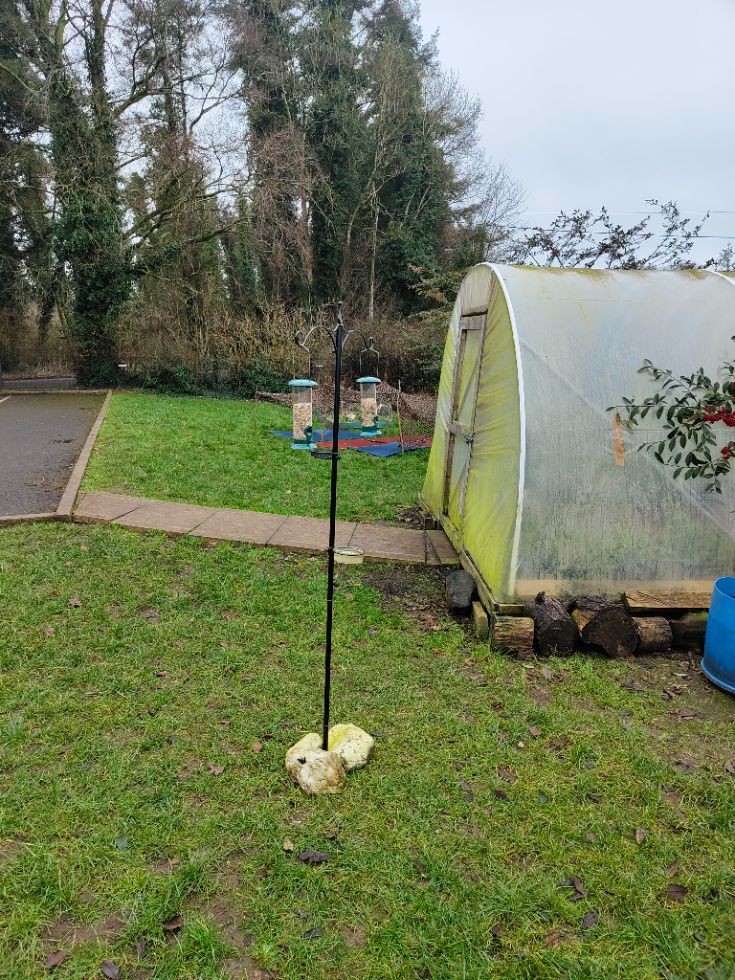
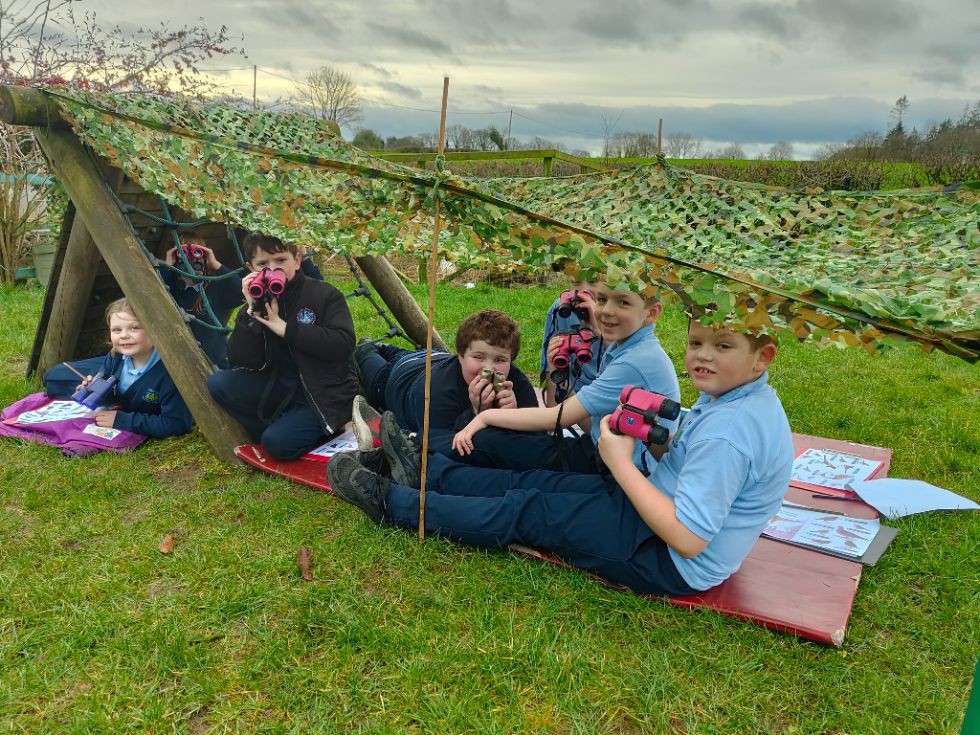
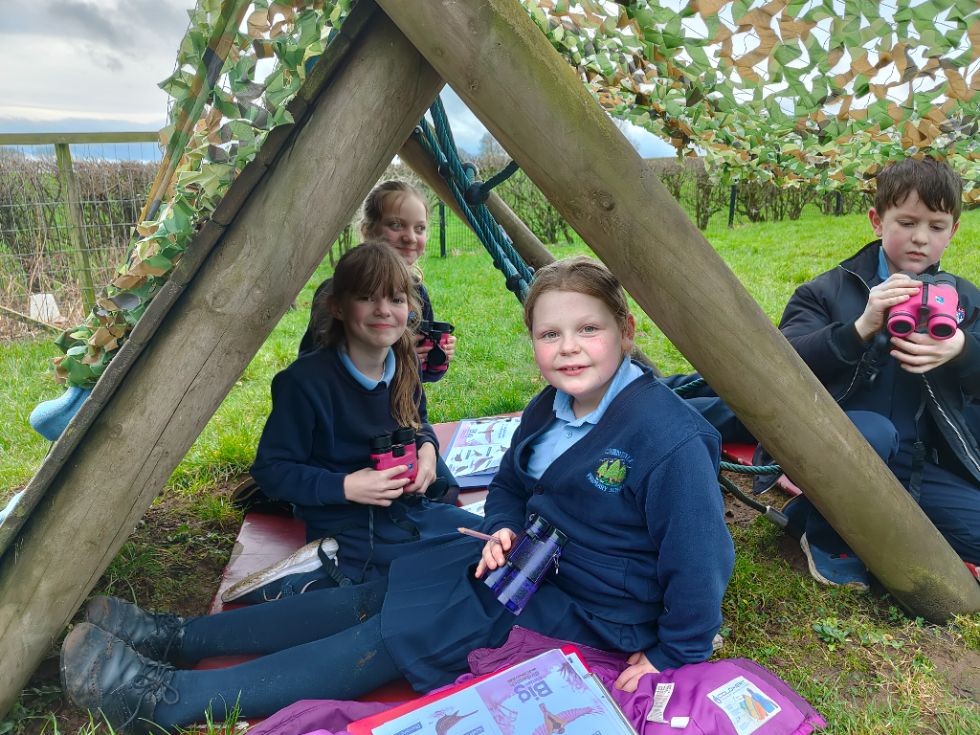
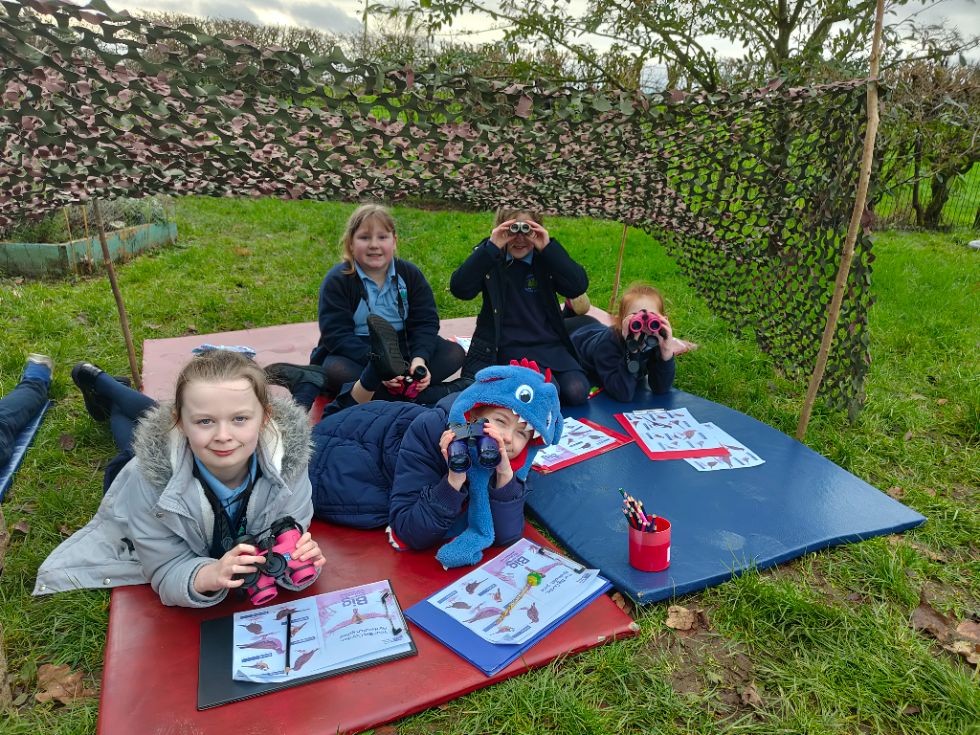
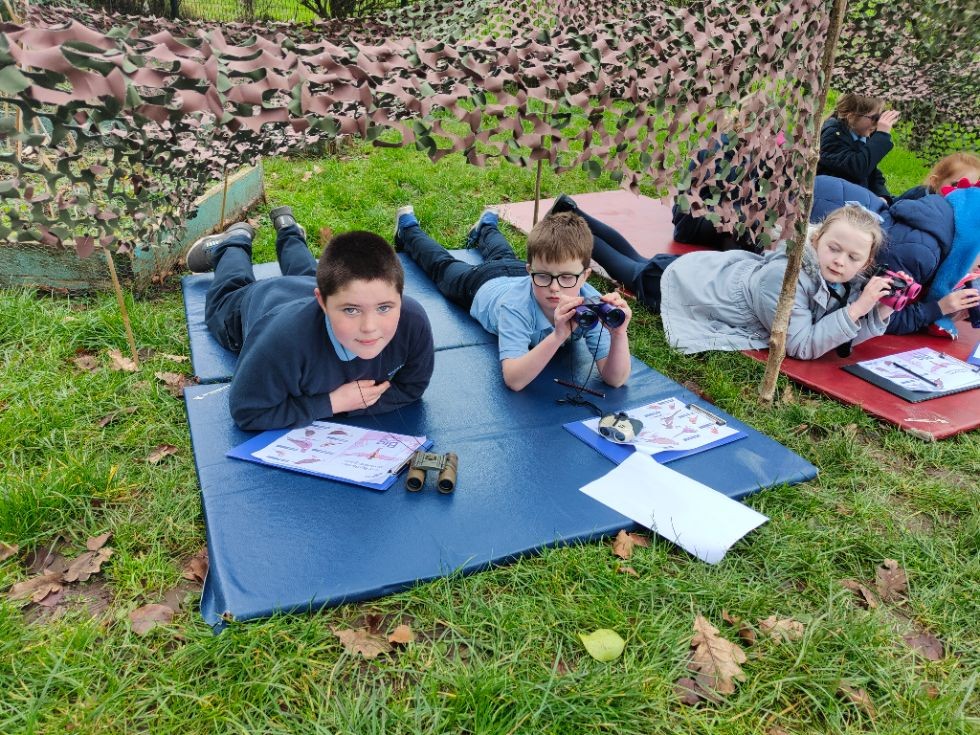
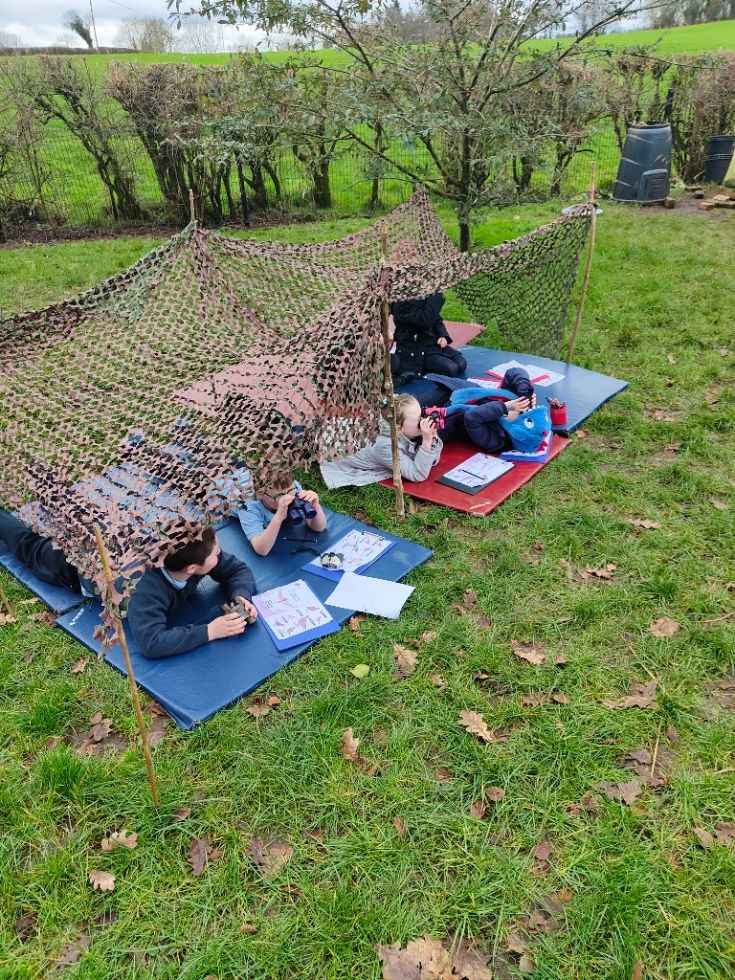
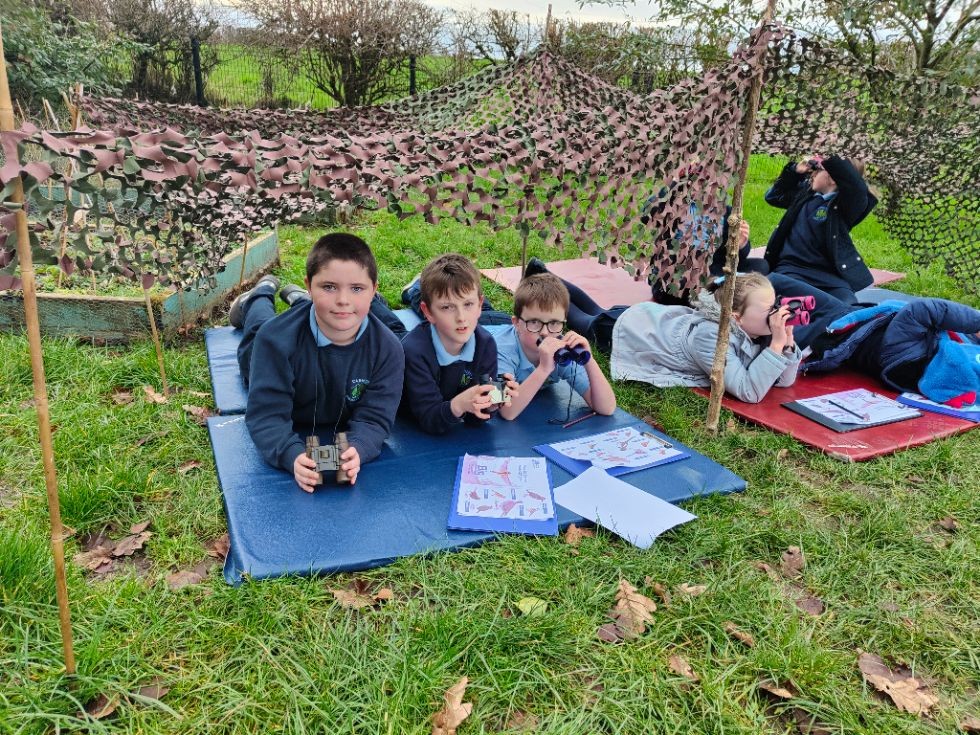
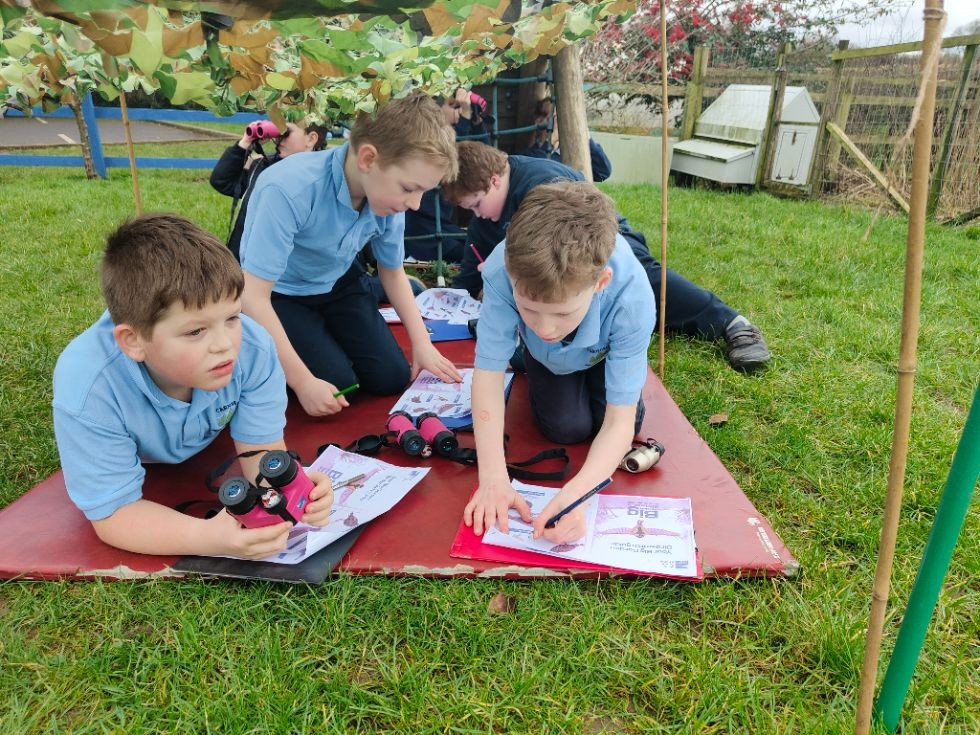
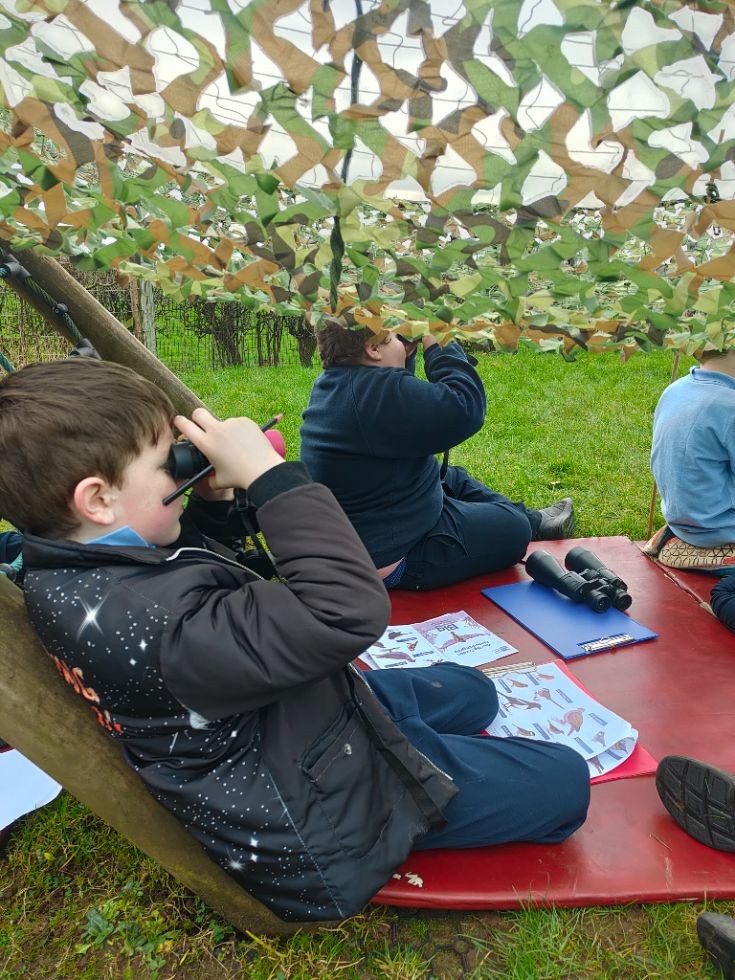
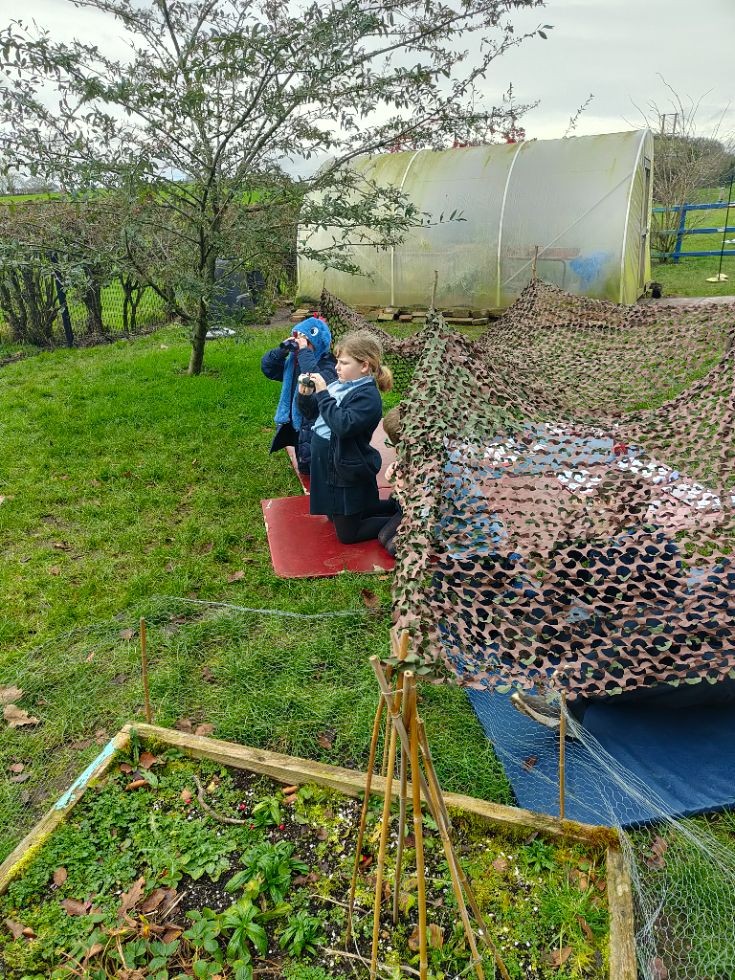
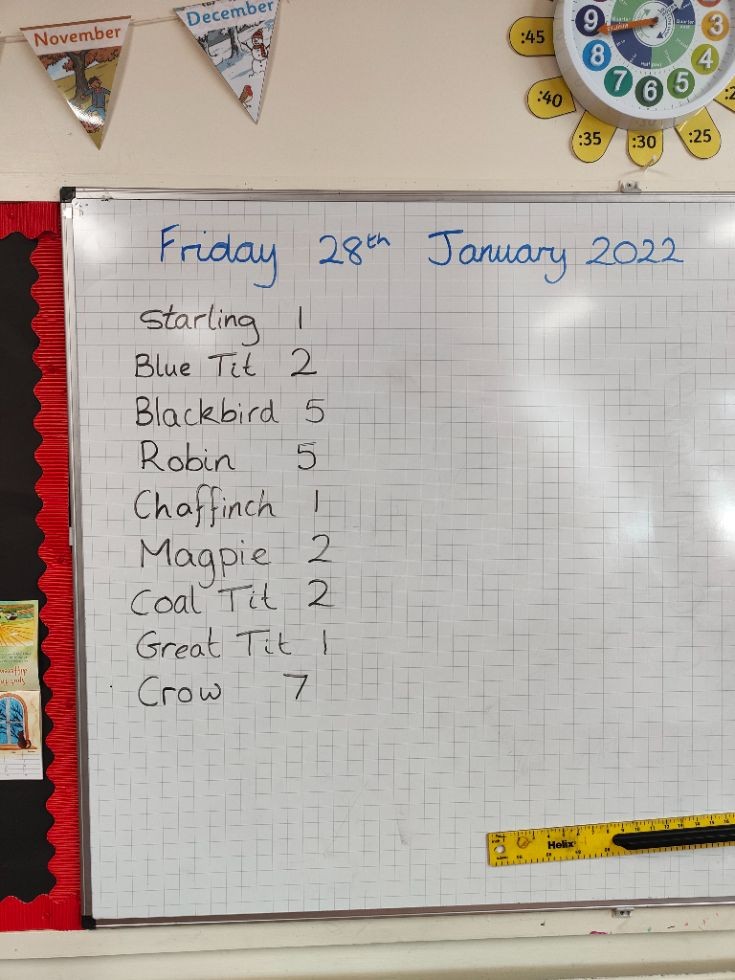
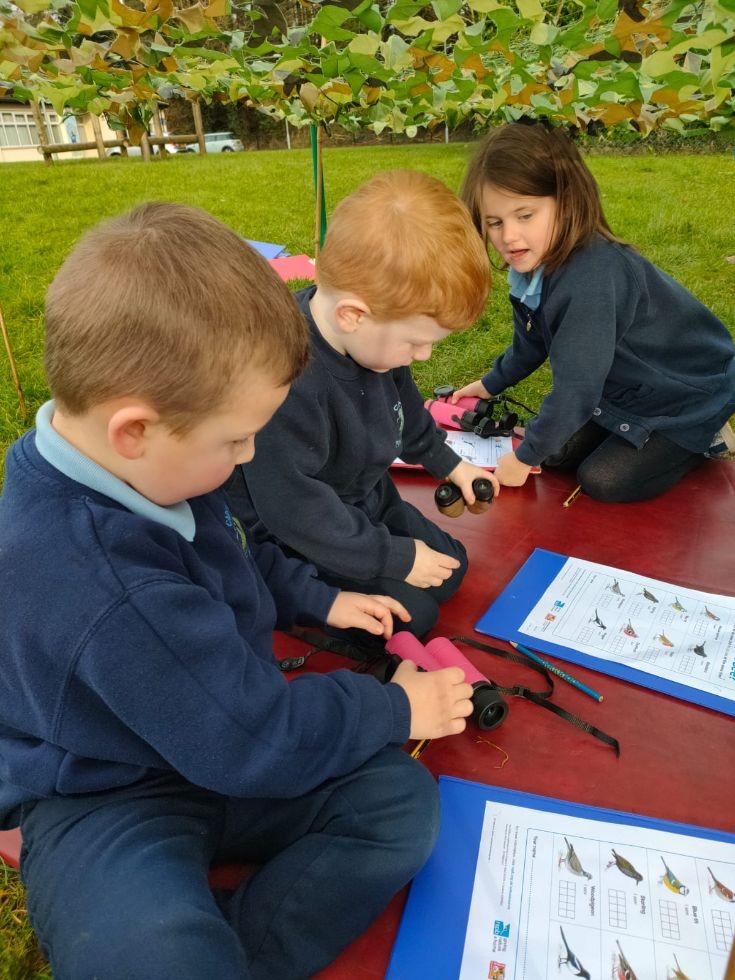
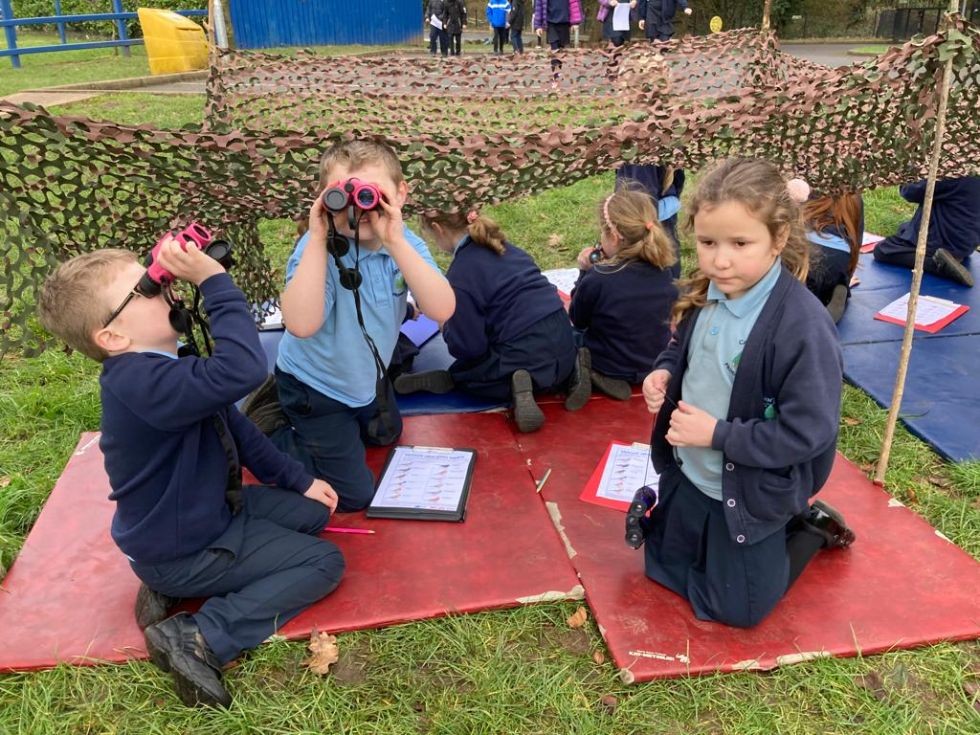
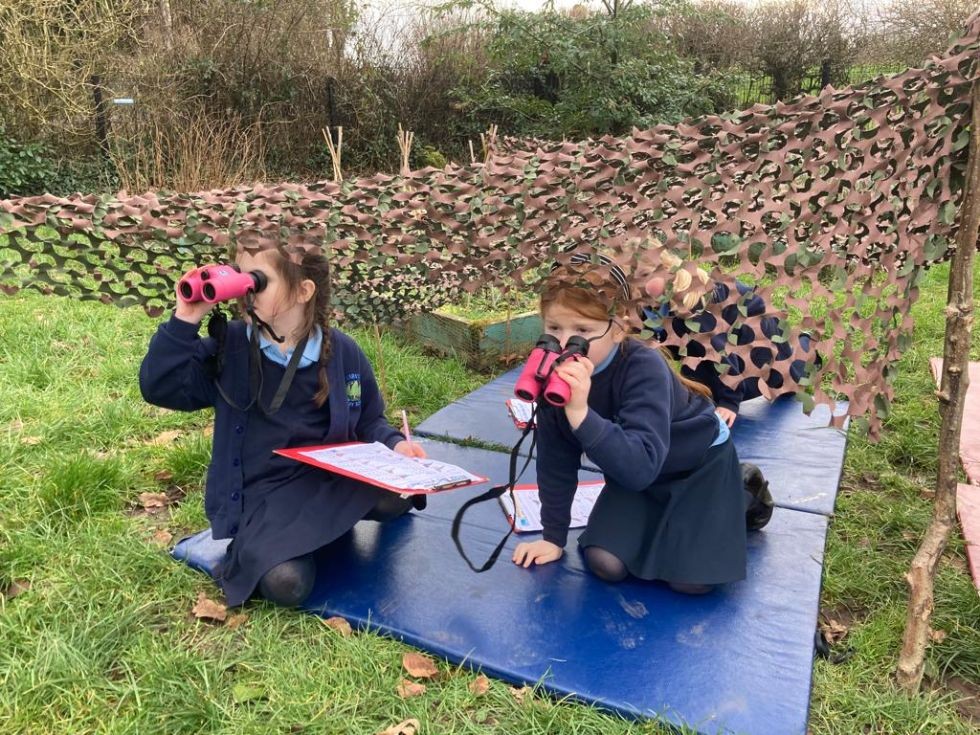
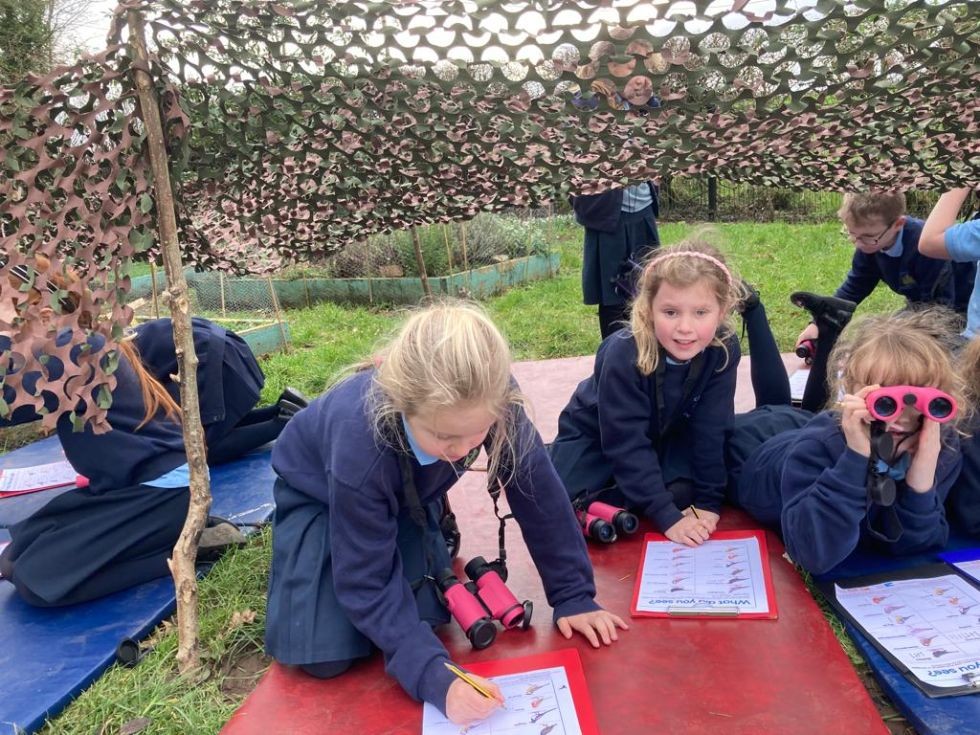
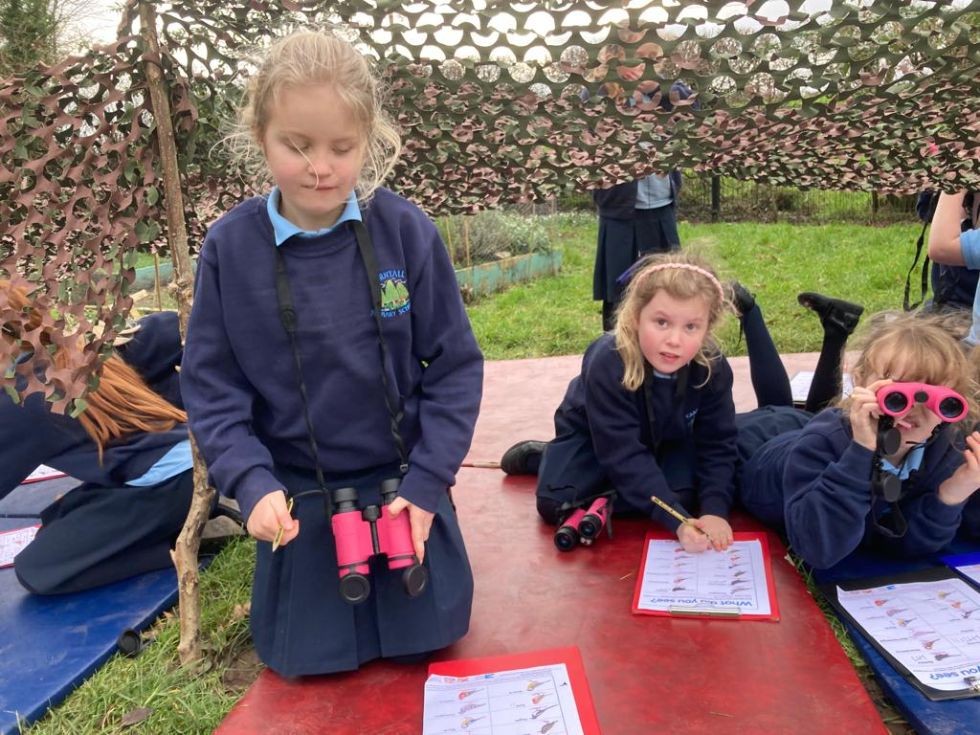
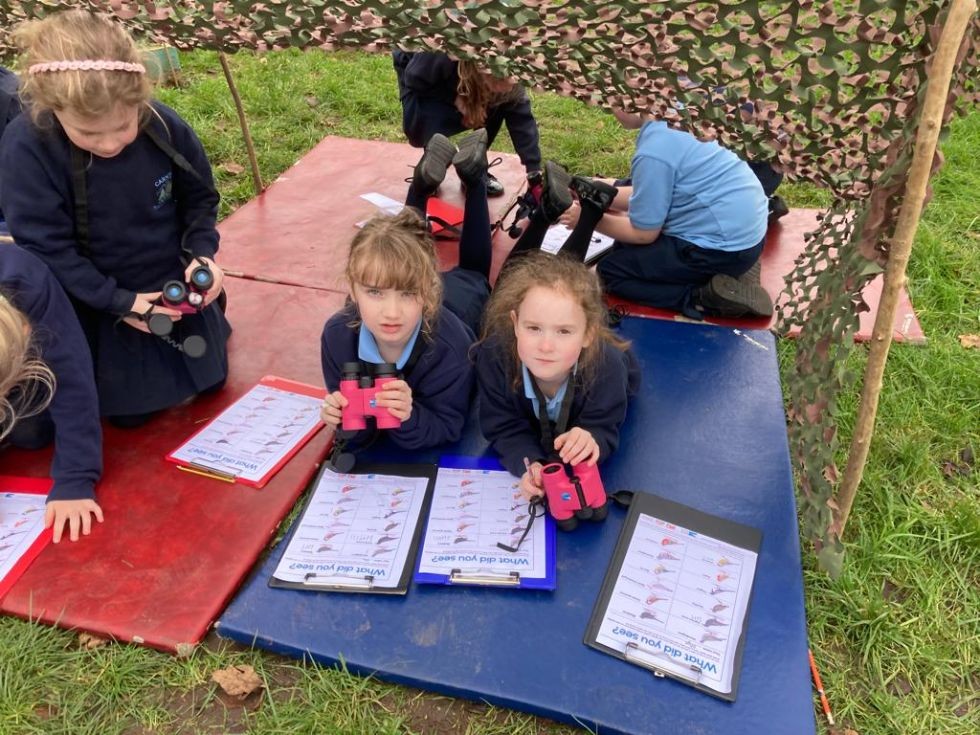
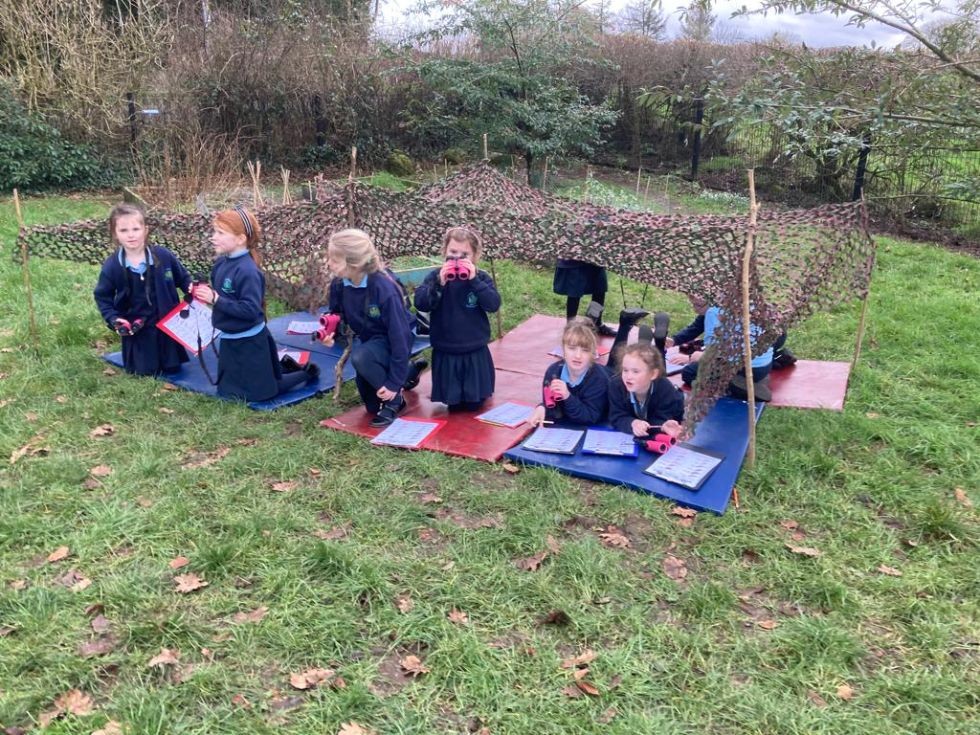
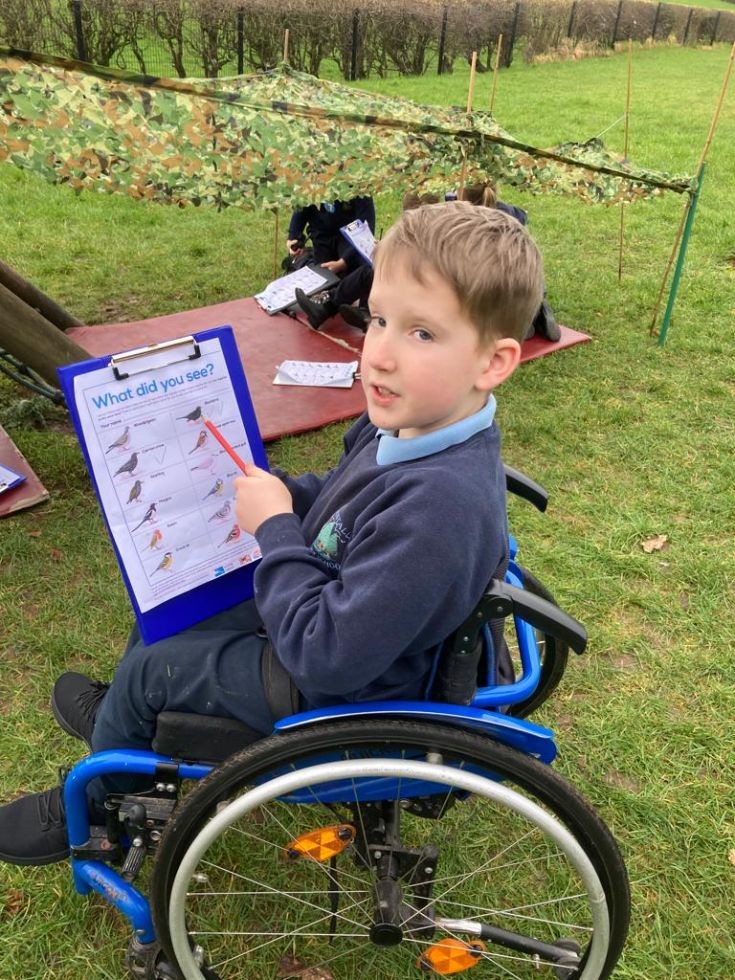
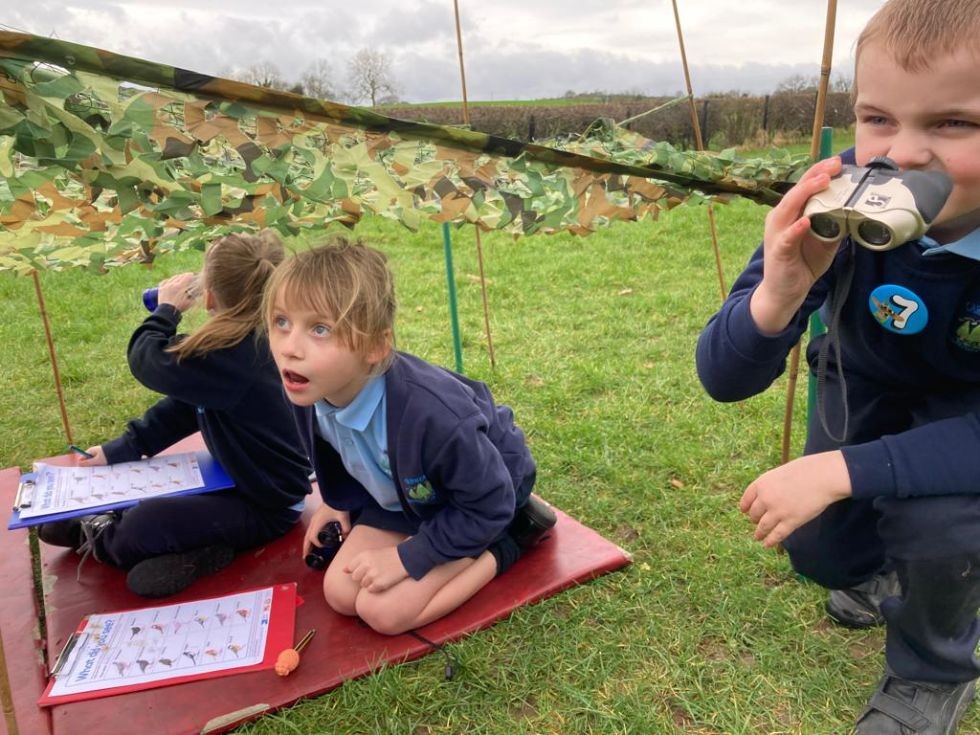
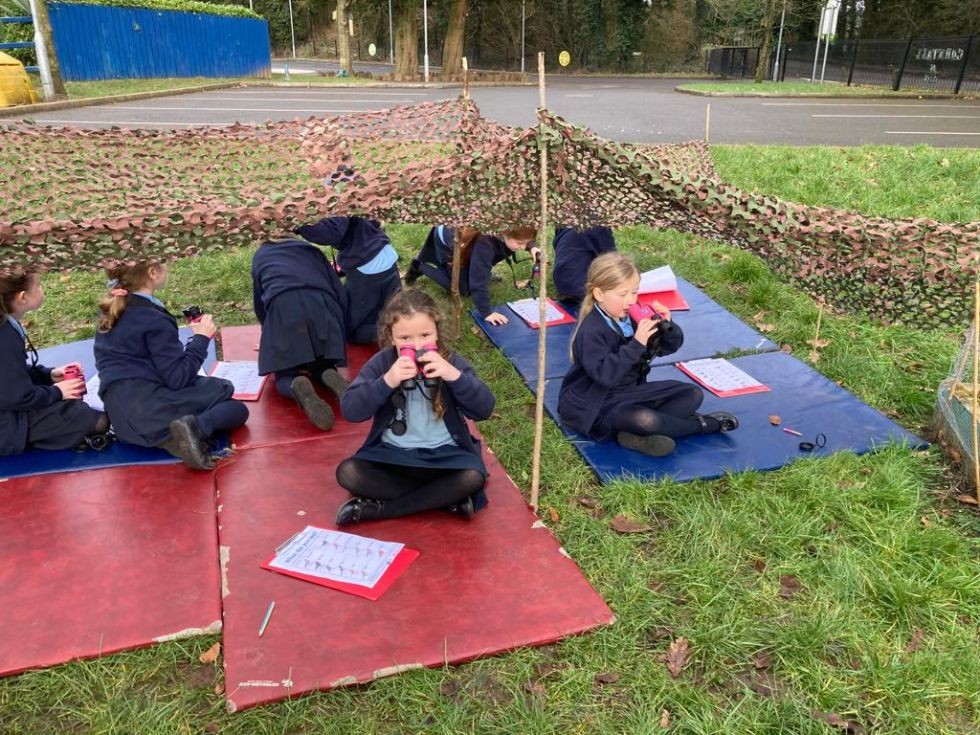
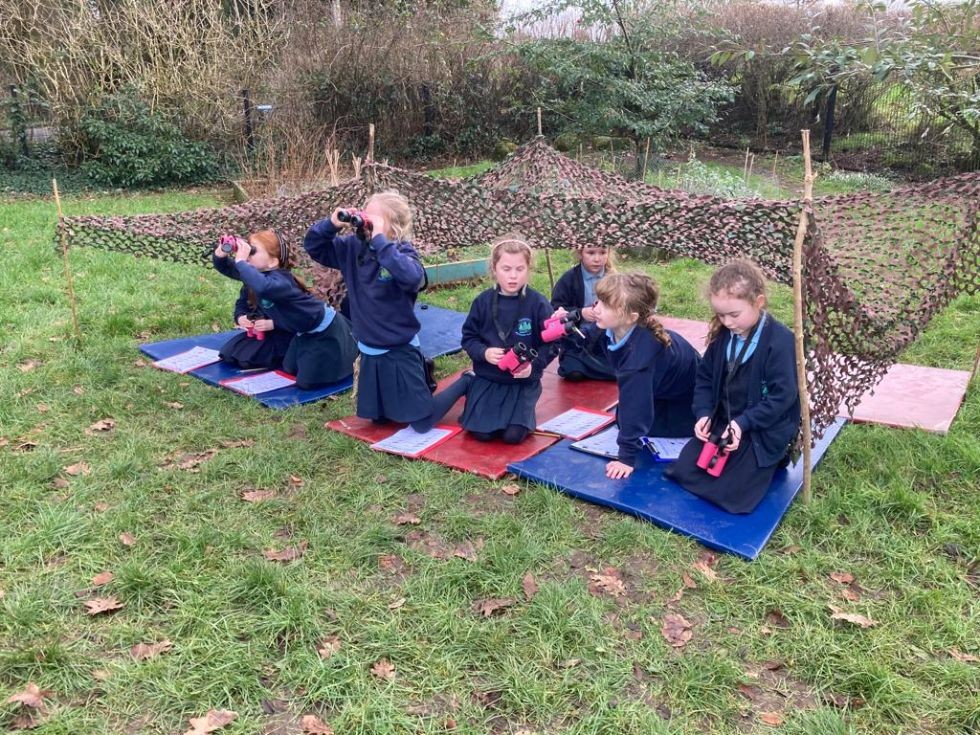
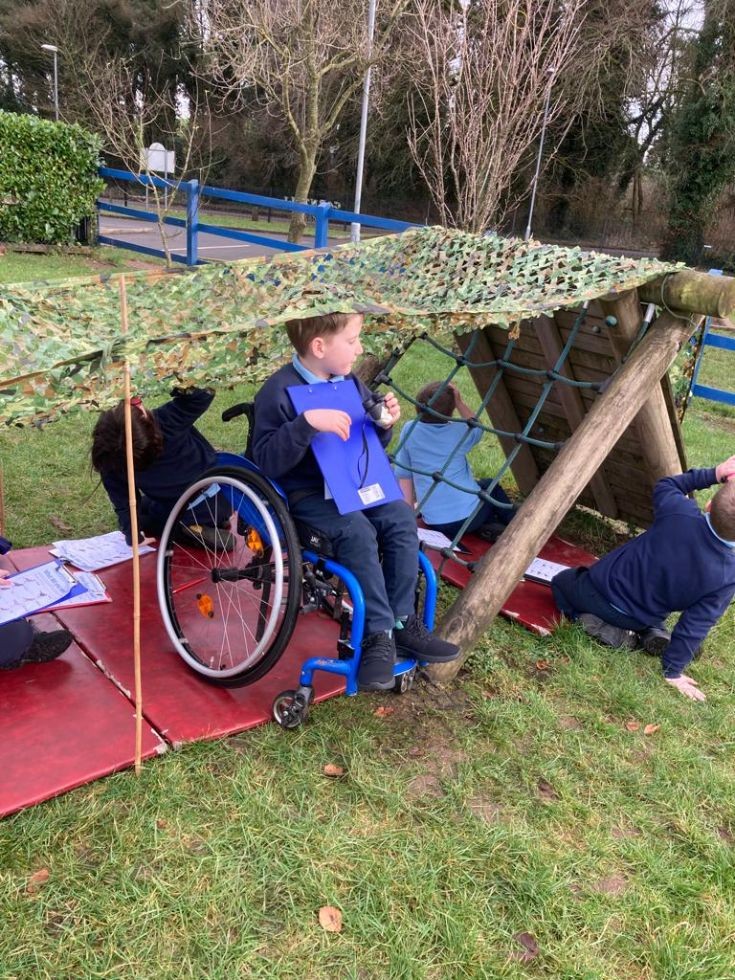
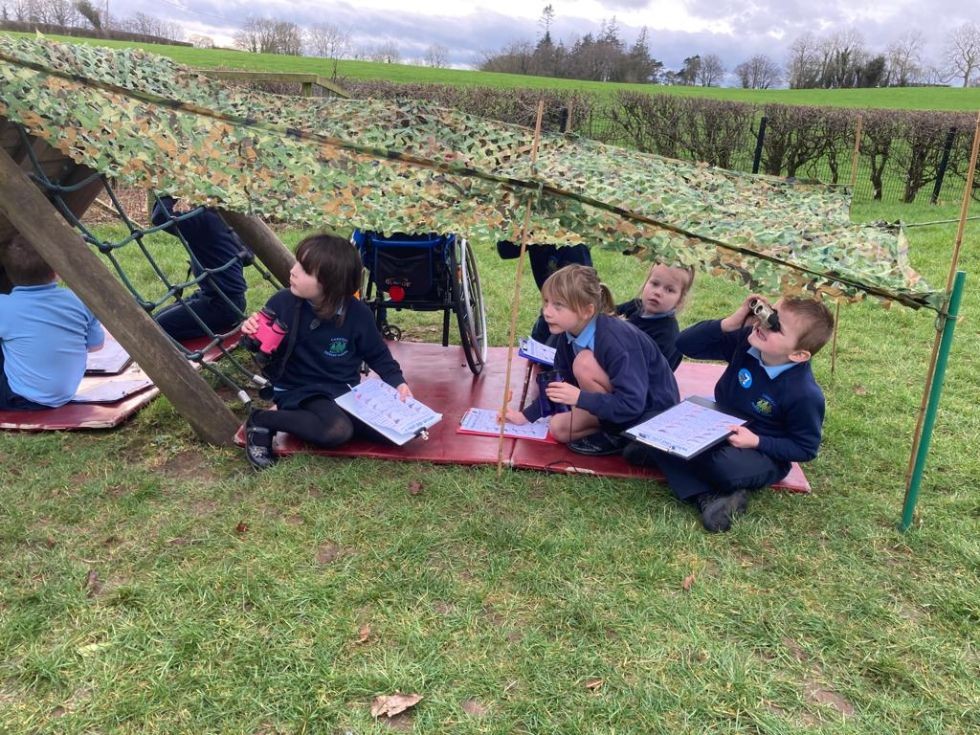
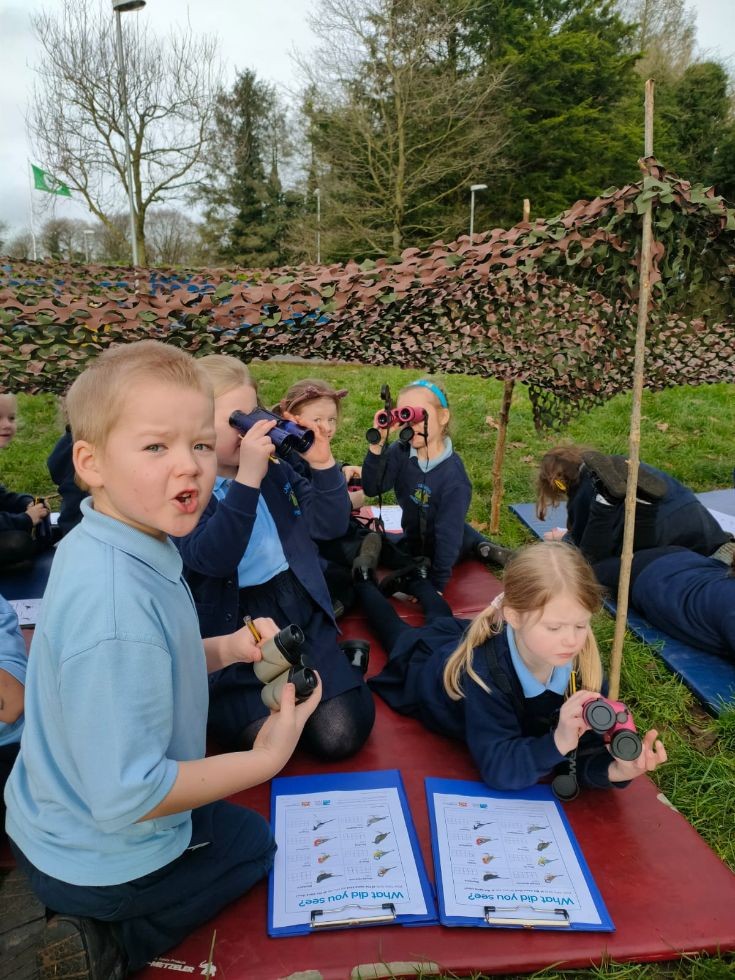
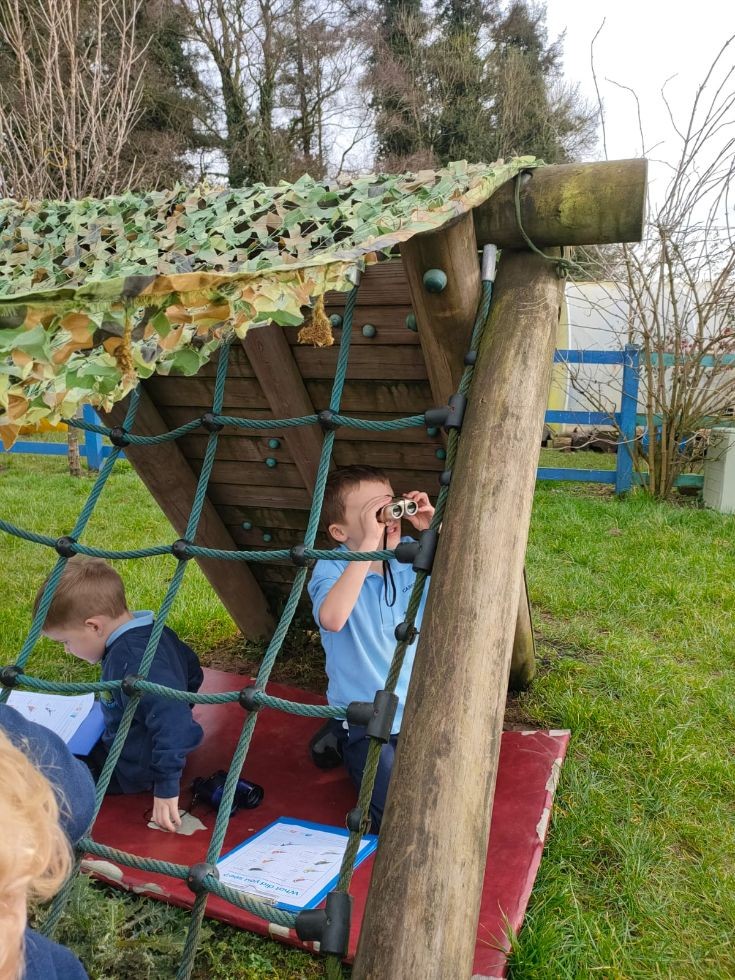
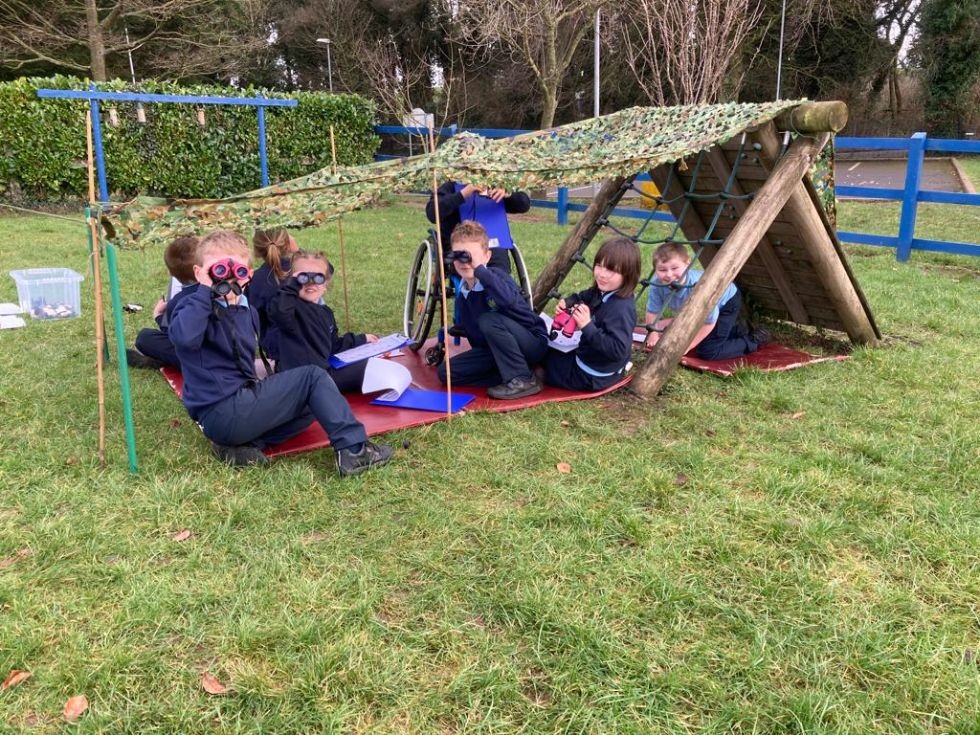
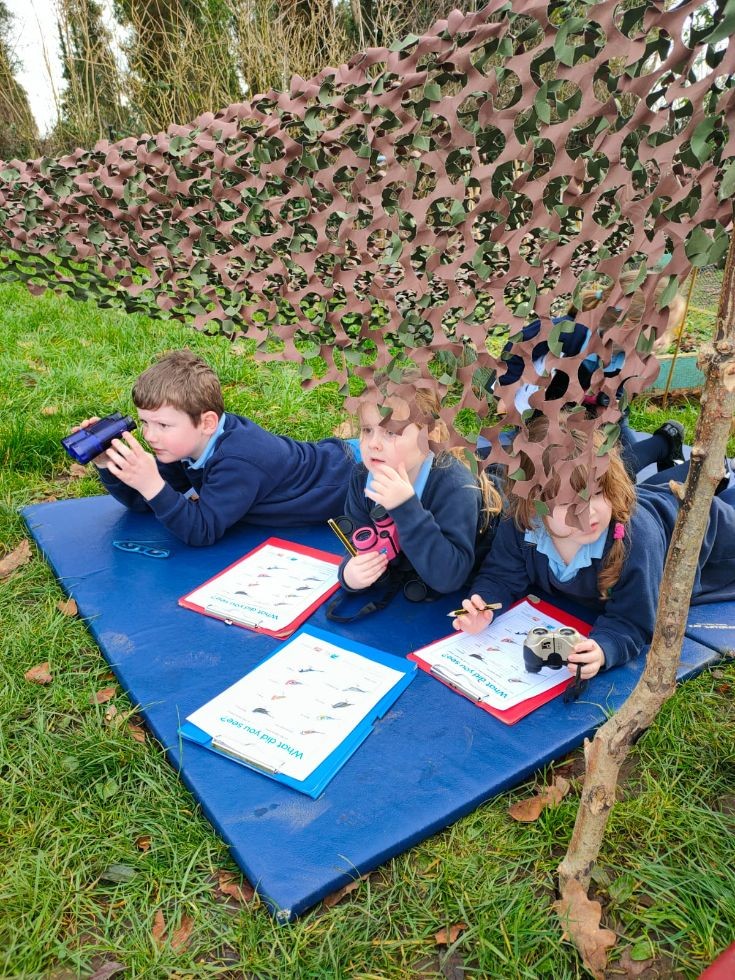
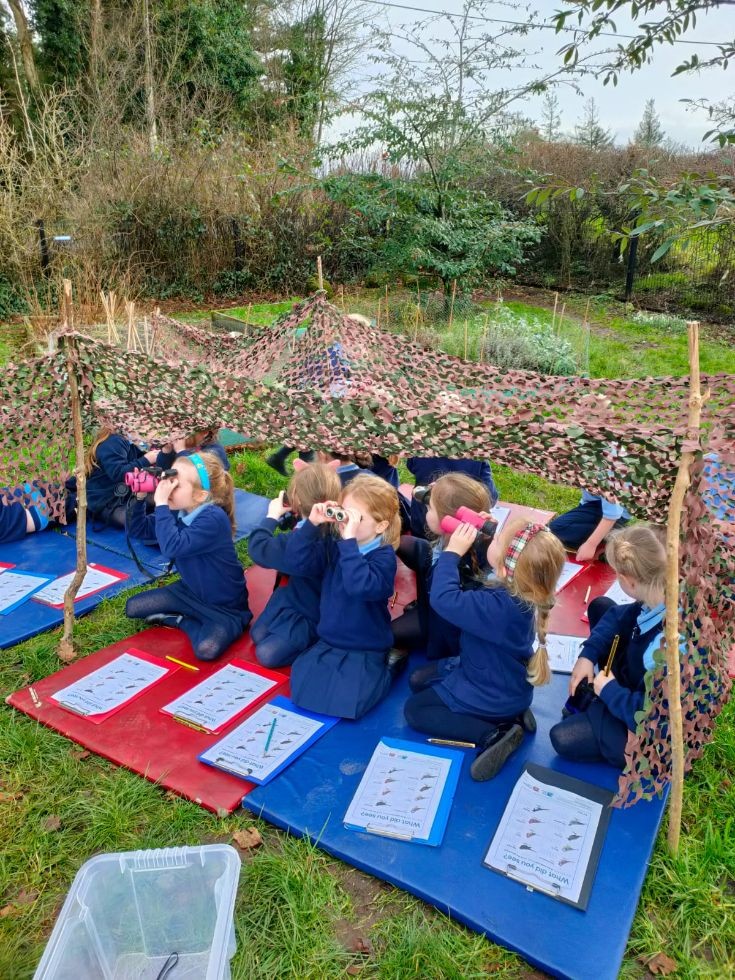
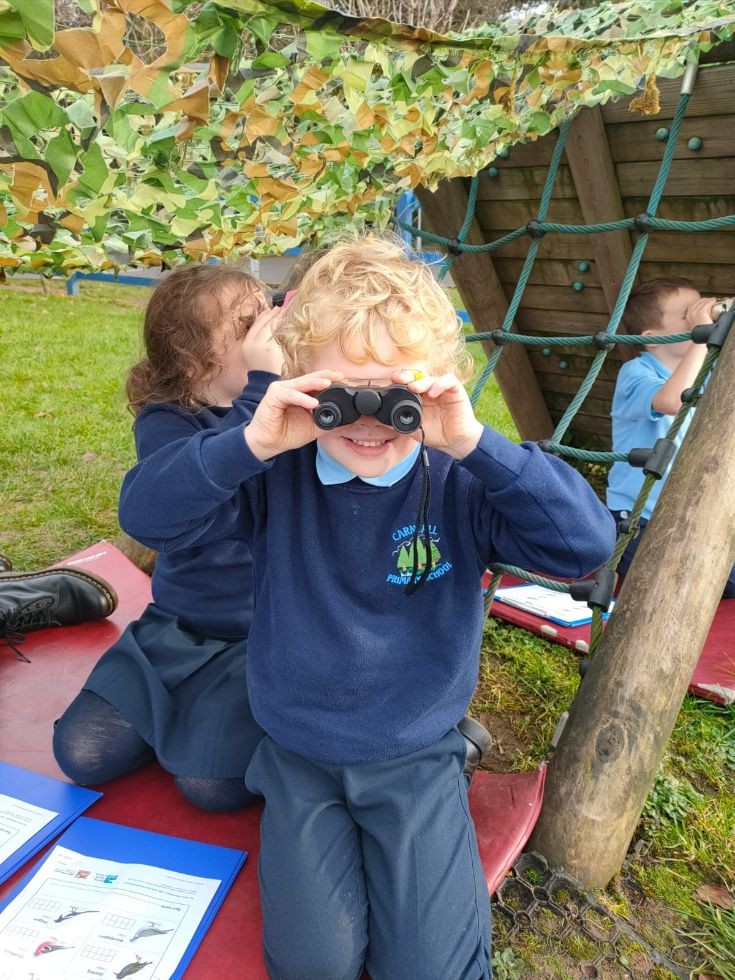
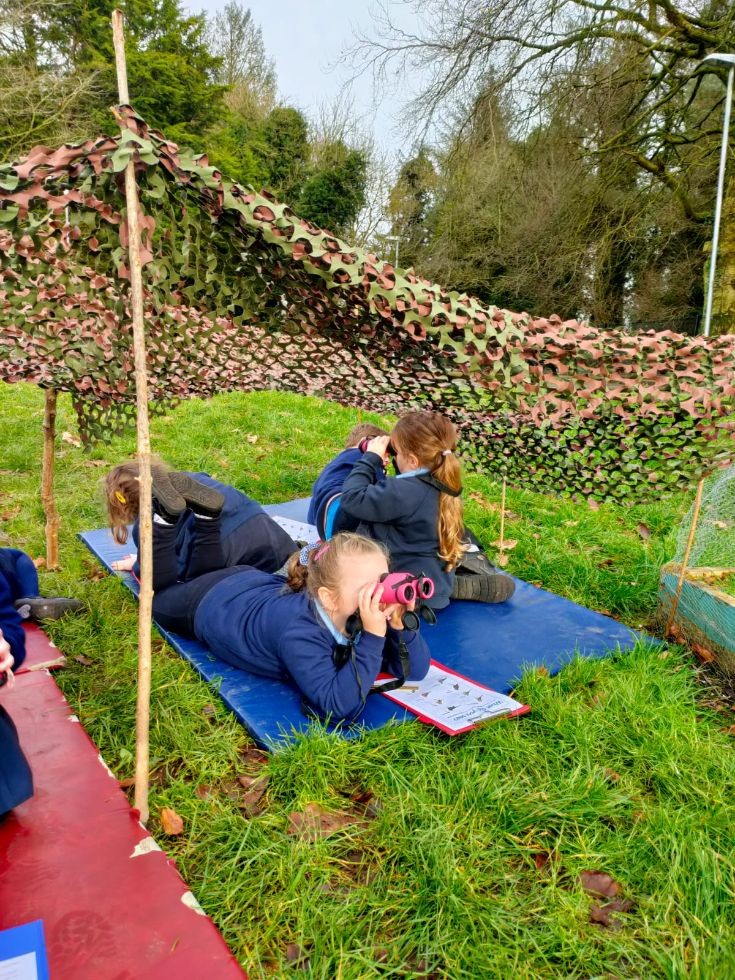
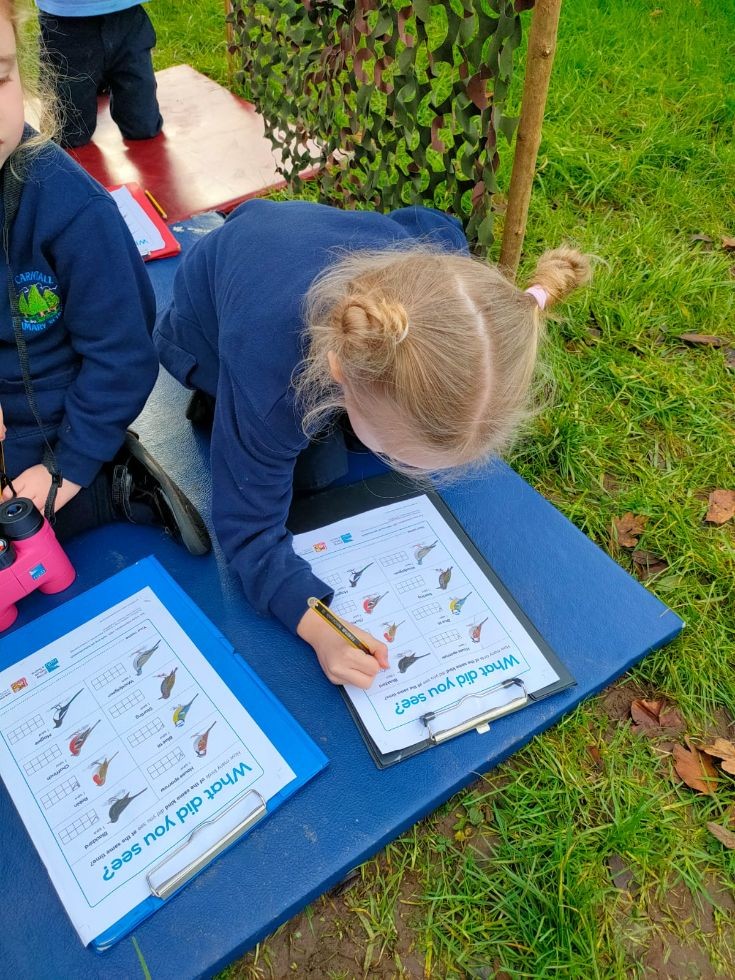
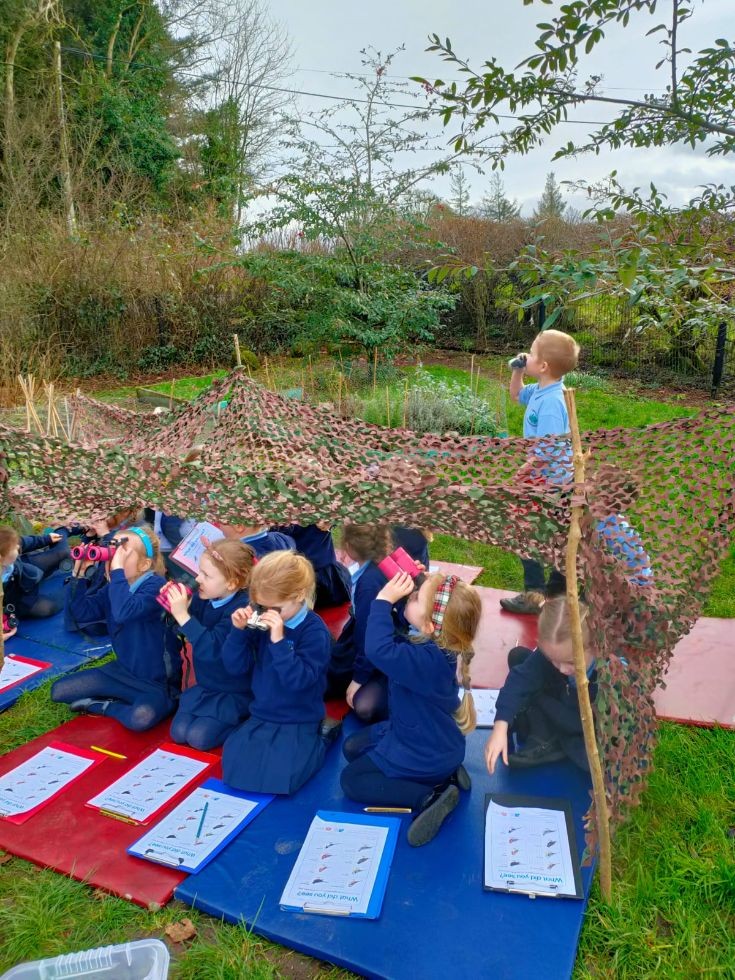
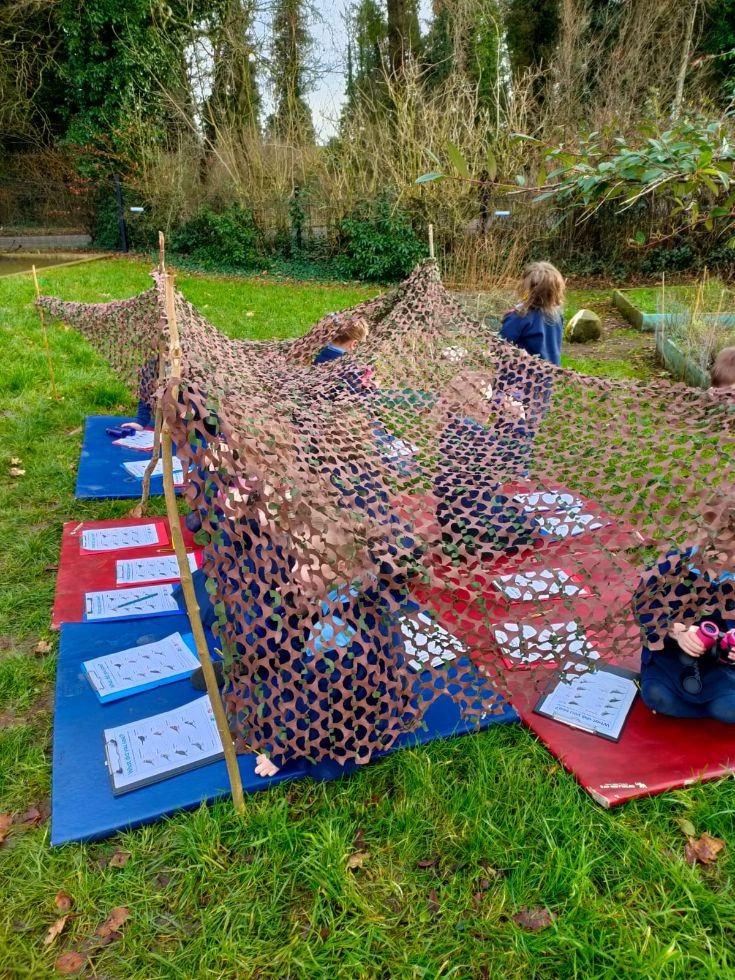
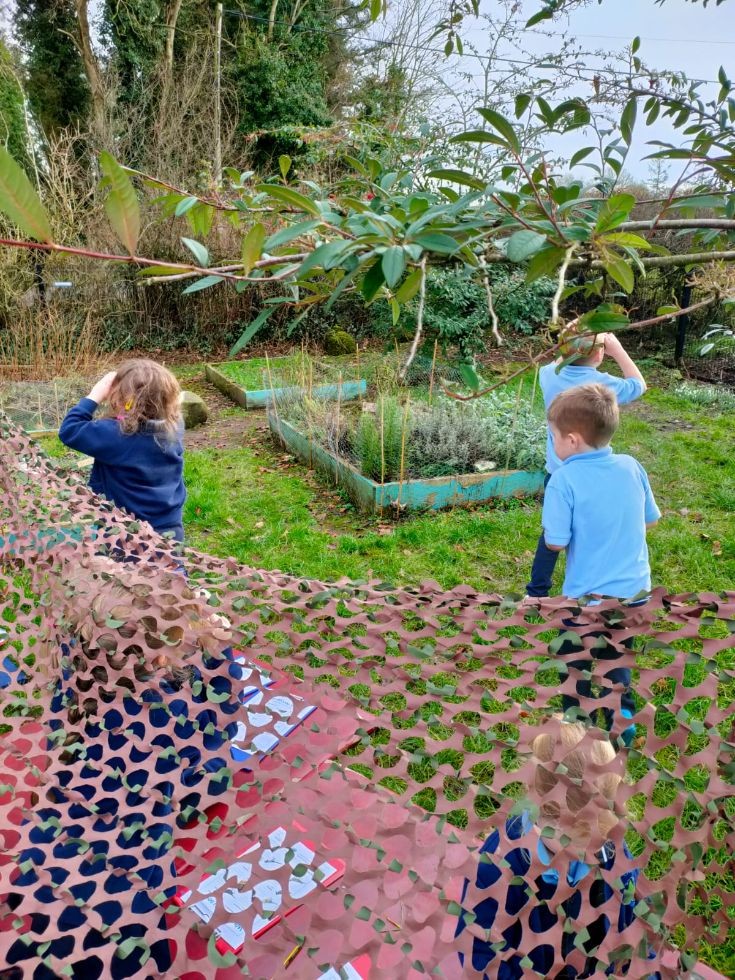
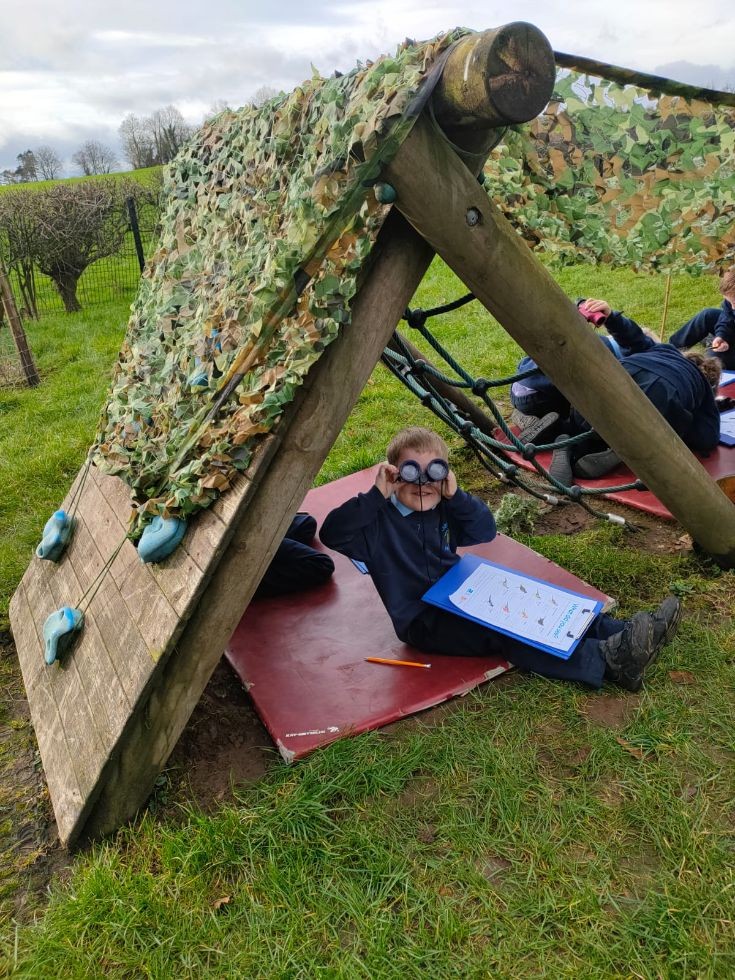
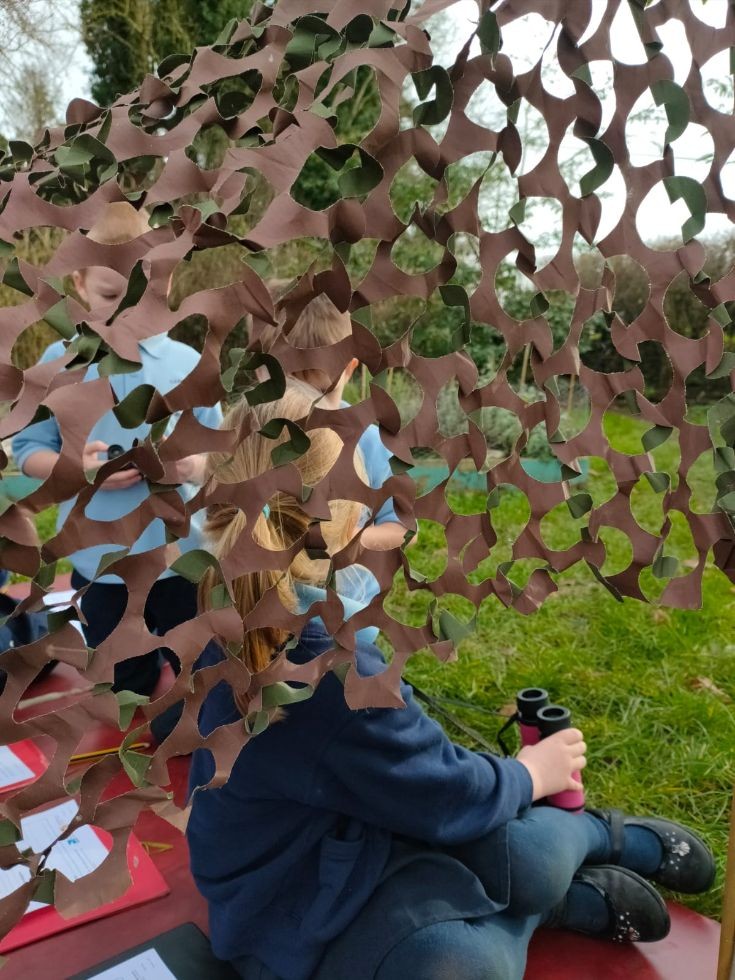
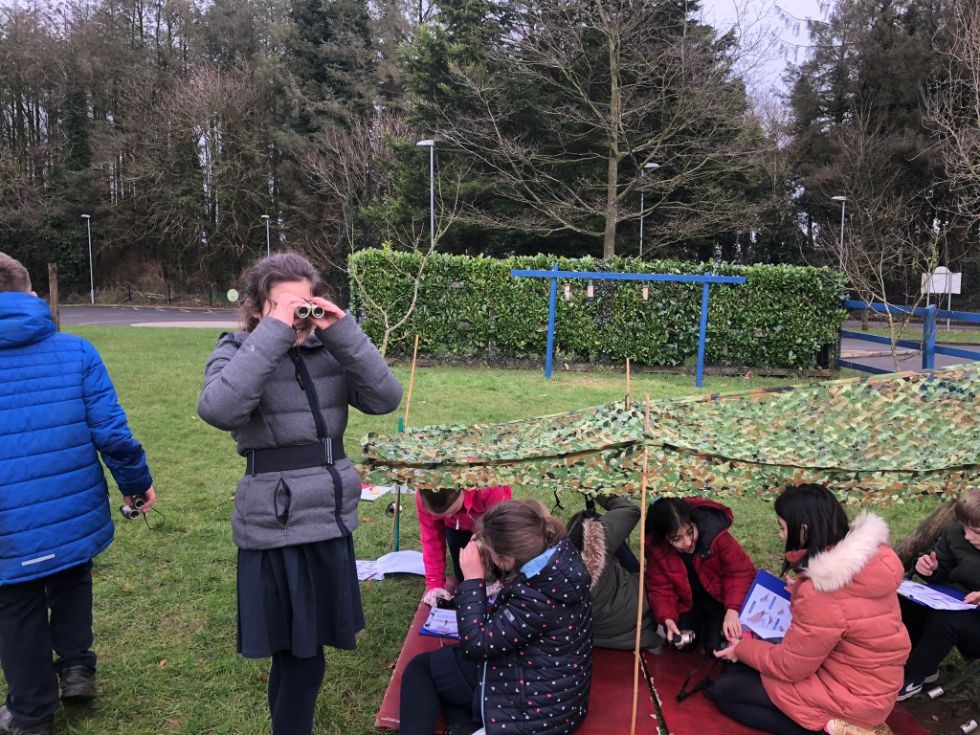
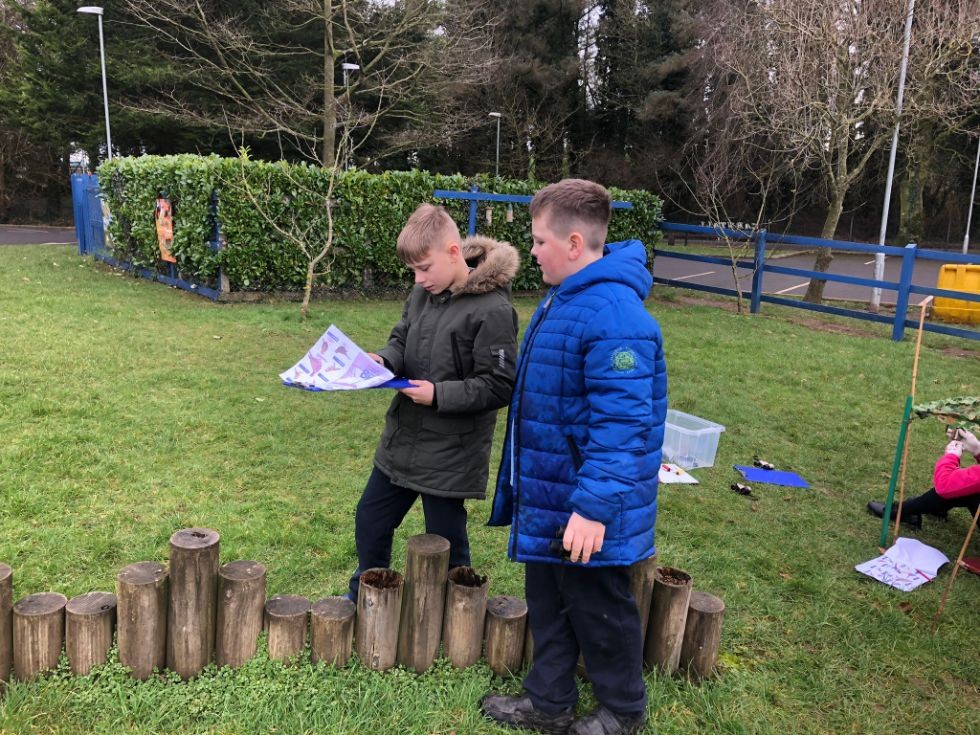
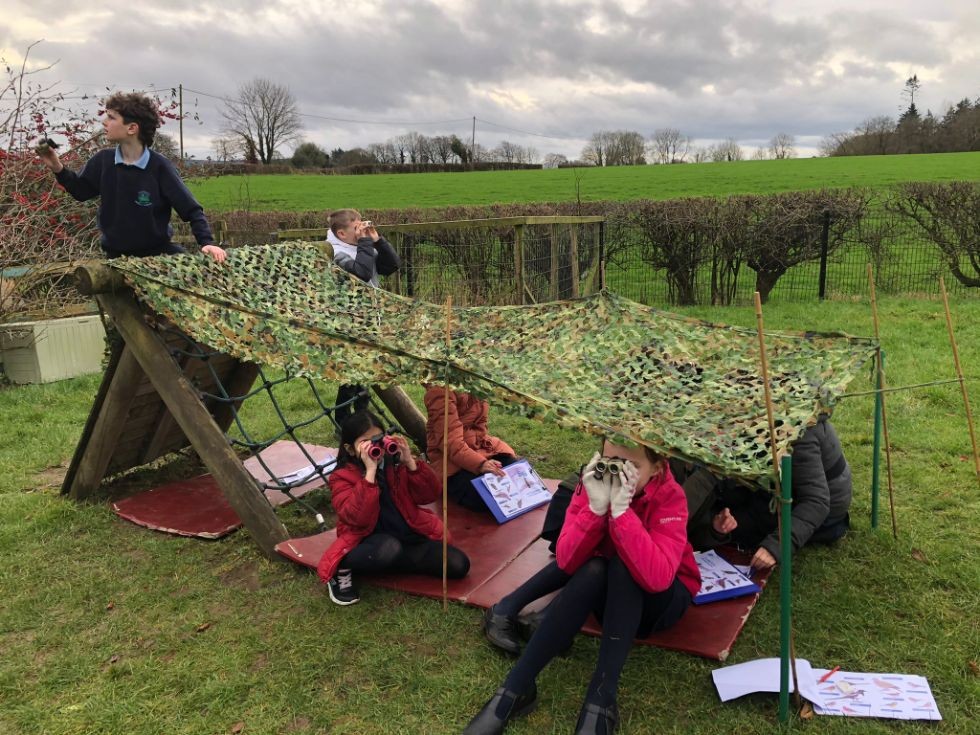
Bird Watching at Carntall Primary School Recount by P6 & P7
Two weeks ago we were doing some bird watching in the playground of Carntall Primary School. We saw lots of species of birds. The entire school took part in this project to find out how many birds were in our school grounds.
Firstly, we got our clip boards, pencils, rubbers and binoculars. Primary six and seven were split into two groups. One group was at the poly tunnel and the other was at the climbing frame. We lined up and headed outside to the camouflage tents where we sat and watched the birds in silence for fifteen minutes. It was hard to stay silent because we cannot stay silent for a minuute never mind fifteen minutes. It was hard not to laugh because people were going 'Do you see the blackbirds?' and 'Do you see that wee robin up in that tree?'
After that, our teacher Miss Woods told us to be quiet. So then we actually did some research, picked up our binoculars and started looking around. We tallied up on our clipboards how many birds we saw and what species they were.
Finally we went inside to make a bar chart showing how many birds we found. We found around twenty blackbirds which were probably crows but there were too many crows to count. In total we found about thirty birds altogether in our school grounds.
In conclusion, Our Carntall Primary School Bird Watch was a great success because we found plenty of birds including robins and bluetits. We had a fun day and a good time working together as a team.
Locating our new squirrel feeders
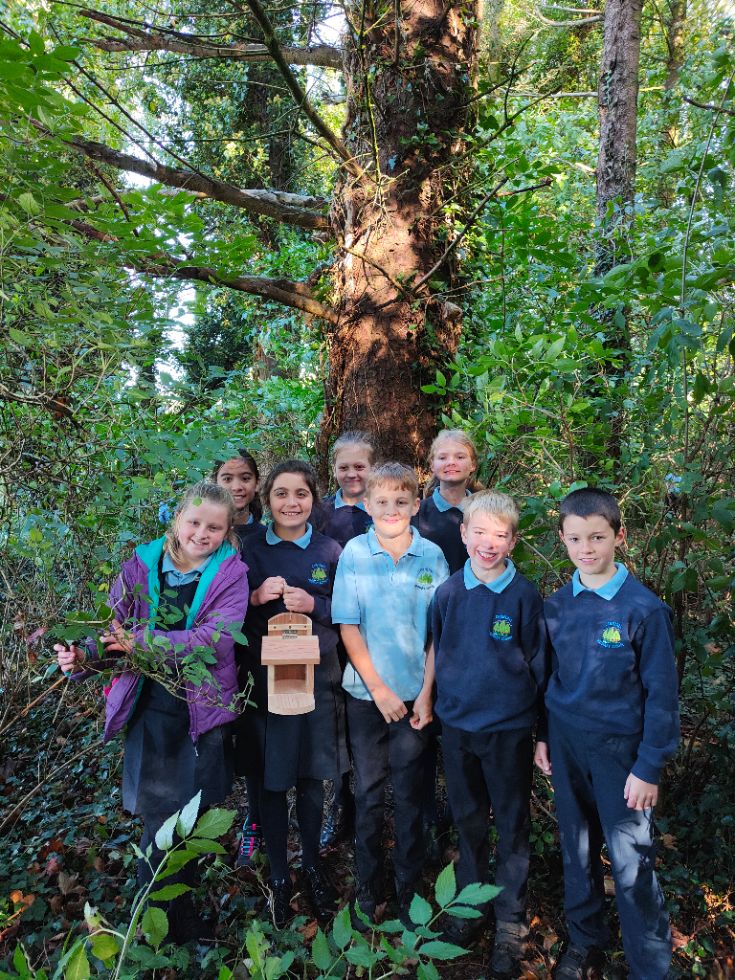
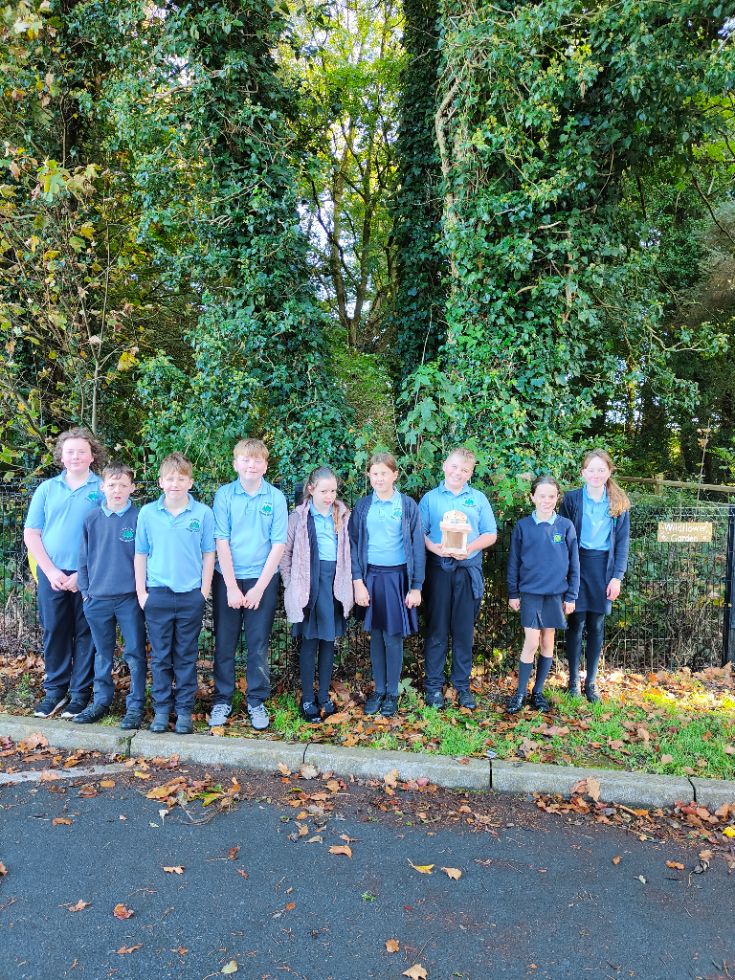
Where to put a squirrel feeder
Feeding stations should ideally be positioned in an area that offers a quick escape route around 5-6 feet up a tree. This is a great location for a feeding station but close to a high wall is another option, keeping feeders off the ground reduces the risk of cat predation.
By Abigail, Eimear, Zara.
In P6 and P7 we have been researching what squirrels eat and found out that they eat nuts, seeds, fruit, fungi, grains, vegetables, roots and bulbs. Their favourite foods are carrots, grapes and nuts. They store them in their big cheeks and eat between 40g and 80g every day.
By Henry, Ben F, James and Ben A
Location of red squirrels
Today we were researching locations of red squirrels and how to keep them safe.
We learnt that you place the feeders about 5 to 6 feet up a tree.
Squirrels live mostly high up in trees, in the fork of the branches.
To keep the cats away place orange pieces’ lime peel lemon peel.
Red squirrels are found in forests and deciduous wood and Europe, Northern Asia and china.
By Rebekah, Molly, Eliana and Anna
WHAT SQUIRRELS LIKE TO EAT
We were researching and we found out that squirrels like to eat chopped apple, carrots, spinach, green beans, bean sprouts and celery and red, grey squirrel also like to eat nuts but they particularly love acorns. They do not like food like white pepper and cayenne because it smells discouraging to squirrels.
By Samuel, Archie and Tommy
Our Hedgehog Home
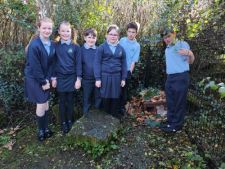
As part of our biodiversity project we are researching where to locate our hedgehog homes. When locating a hedgehog home put it where it will not be disturbed for example against a wall or a fence. Put the entrance away from north or north-east as you are more likely to attract a hedgehog. If you do so you can avoid the cold winter winds. If you can, put the hedgehog home in or near a damp untidy area, so that hedgehogs are protected when they come out to forage.
By: Zoe, Nia, Arianna and Sarah.
Hedgehog Hibernation
Hedgehogs usually hibernate from October/November through to March/April. Hedgehogs would starve to death if they didn’t hibernate without enough food. Hedgehogs tend to live in the outskirts of wooded areas.
BY Sam, William, Isaac & Elliott
What do hedgehogs eat
1.Beetles.
2.Earwigs.
3.Caterpillars.
4.Earthworms.
5.Millipedes.
6.Fly larvae.
What hedgehogs can’t eat
Hedgehogs cannot eat grapes and raisins as they are toxic to them. If your hedgie digests grapes by accident, seek immediate veterinary assistance.
Can hedgehogs eat nuts
Hedgehogs are often first seen in gardens eating spilled bird food under feeders. They will be eating the seeds as well as all the insects and invertebrates that gather there. Small quantities of seeds and nuts are not harmful to hedgehogs but can cause issues if eaten in excess.
By Abraham, Joshua, Dylan & Hugo
Hedgehog Facts
Hedgehogs are famous for their prickly spines, which they have everywhere except on their face, legs and bellies. These cute critters depend on their spines for defense, both while they sleep and when they face enemies. ... When they are born (there can be up to seven in a litter) their spines are soft and short.
Hedgehogs are solitary creatures that are big sleepers and can sleep up to 18 hours per day, according to Animal Planet. They are also nocturnal, which means they sleep during the day. This can make them poor pet choices for someone that wants and active pet during daytime hours’ hedgehogs search at night.
By Isabella & Angie.
P5 & 6 Investigating our birds and trees
On the 6th of May, P5/ and P6 went out to our school ground to see the variety of birds we have in this this area. They collected some interesting data. We have many insects and seeds here that’s why we have over 100 carrion crows! A woodpigeon’s diet consists of crops and nuts so we do not have many of these around our school. A wide range of birds live in the area including and surrounding our school, including robins, magpies, blue tits, song thrushes and house sparrows.
The P5 and P6 class explored and recorded trees on the 7th May. They surveyed the different types of trees in our school grounds. The most common tree they found was a hawthorn tree and the tree they found the fewest of was an elder tree. The pupils found it hard to identify the trees as some of the trees hadn’t formed their leaves yet. However, they discovered a wide selection of trees located around the school grounds including oak, cherry, birch and rowan trees. The reason the pupils looked at trees is because they are a vital part of our planet, they give us oxygen, use carbon dioxide, stabilise the soil and give life to the world’s wildlife. P5 and 6 enjoyed this activity a lot.
By Georgia, Amy, Elizabeth and Isaac
P3 & 4 Investigating the school Pondlife
On the 6th of May P3 & P4 class explored our pond life. They found out about the different creatures and plants in and around our pond. They discovered a variety of creatures from tadpoles to phantom midge larva and stonefly nymph. Some of the plants they found include pond weed, water lilies and pennywort. One of their interesting finds was a smooth newt which was around 11 cm long and had an undulating crest running along the body and tail which probably means this newt is a male. The most common thing in our pond is tadpoles but we think only a few will survive to turn into frogs. P3 & P4 enjoyed this fun and educational activity and are definitely looking forward to their next Biodiversity task.
By Zara ,Charlie, Elsie & Anna
Carntall Primary School, 5 Aghintain Road, Clogher, County Tyrone BT76 0UY | Phone: 028 85 548423

